Digital Governance in India

- 16 Jan 2025
In News:
India is making significant strides toward digital governance, an initiative aimed at enhancing both citizen services and the capabilities of government employees. This transition to a digitally-driven framework is designed to improve the efficiency, transparency, and accountability of government operations, positioning India as a global leader in modern governance practices.
What is Digital Governance?
Digital governance refers to the application of technology to enhance the functioning of government processes. By integrating digital tools and platforms, it aims to streamline administrative operations, reduce inefficiencies, and improve public service delivery. This approach also extends to ensuring greater transparency and accountability in government dealings.
Key Initiatives in Digital Governance
India has launched several critical initiatives to modernize governance through digital means. Some of the key programs include:
- iGOT Karmayogi Platform: The iGOT Karmayogi platform is a government initiative to provide online training to public employees. It aims to enhance public administration skills, foster expertise in data analytics, and equip employees with the necessary tools in digital technologies. This initiative aims to prepare government personnel to handle the challenges of a digitally evolving governance landscape.
- e-Office Initiative: The e-Office program is designed to reduce paper-based work by digitizing workflows within government departments. This initiative facilitates real-time communication among offices and ensures more efficient and transparent management of tasks. It also helps streamline decision-making processes and improves the speed of governance operations.
- Government e-Marketplace (GeM): The Government e-Marketplace (GeM) is an online platform developed to optimize procurement processes. It allows government agencies to procure goods and services efficiently, transparently, and with accountability. This platform has contributed to reducing corruption and ensuring that government purchases represent the best value for public money.
- Cybersecurity Training for Employees: As digital operations increase, ensuring the safety of sensitive data is paramount. The cybersecurity training program for government employees is designed to enhance their ability to recognize and respond to potential cyber threats. This initiative ensures data protection, safe online practices, and cyber resilience across digital governance platforms.
Challenges in Implementing Digital Governance
Despite its benefits, India faces several challenges in the successful implementation of digital governance. These obstacles must be addressed to unlock the full potential of technology-driven governance.
- Resistance to Technological Change: One of the key barriers to digital transformation in government is the resistance among employees to adopt new technologies. Many government officials remain accustomed to traditional, paper-based processes and are reluctant to transition to digital systems due to concerns about complexity and job security.
- Digital Divide in Rural Areas: While urban regions in India have better access to high-speed internet and digital infrastructure, many rural areas face significant digital divide challenges. Limited access to technology hampers the successful implementation of digital governance in these regions, restricting equitable service delivery across the country.
- Cybersecurity Risks: The rise of digital operations in governance increases the risk of cyberattacks and data breaches. With government data being digitized, the threat of cybercrimes becomes more pronounced, making it critical to implement robust cybersecurity measures and data protection strategies to safeguard sensitive information.
- Lack of Incentives for Training Outcomes: Although government employees are encouraged to take part in training programs such as iGOT Karmayogi, the absence of clear incentives to complete these programs can undermine their effectiveness. Establishing tangible rewards or career progression linked to the successful completion of training would encourage employees to fully engage in capacity-building initiatives.
Solutions to Overcome Challenges
To ensure the success of digital governance, several strategies must be put in place to address the challenges identified.
- Foster Innovation-Friendly Environments: Promoting an innovation-friendly culture within government offices can help reduce resistance to new technologies. Encouraging employees to engage with digital tools, offering regular training, and providing ongoing support will facilitate a smoother transition to a technology-driven governance system.
- Invest in Digital Infrastructure for Rural Areas: Addressing the digital divide requires significant investment in digital infrastructure in rural and remote areas. Ensuring that these regions have reliable internet access and the necessary technological resources will empower citizens across India to benefit from digital governance.
- Continuous Capacity-Building Programs: Establishing continuous training programs for government employees will ensure that they remain up-to-date with the latest technological trends. Regular updates to training content will help employees stay prepared to handle emerging challenges in digital governance.
- Strengthen Cybersecurity Protocols: To mitigate cybersecurity risks, it is essential to implement stringent cybersecurity measures across all levels of government operations. This includes regular cybersecurity awareness programs, proactive threat management systems, and rigorous data protection protocols to safeguard both government data and citizens’ personal information.
Conclusion
India’s shift towards digital governance represents a significant step toward modernizing administrative systems, enhancing transparency, and improving service delivery to citizens. However, challenges such as resistance to change, the digital divide, cybersecurity risks, and the lack of clear incentives for training must be addressed. By investing in digital infrastructure, offering continuous training programs, and reinforcing cybersecurity measures, India can create an effective and secure framework for digital governance that benefits both its citizens and the government workforce.
Selection Process for Chief Election Commissioner (CEC)
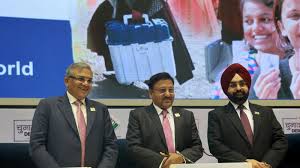
- 12 Jan 2025
In News:
The Chief Election Commissioner and Other Election Commissioners (Appointment, Conditions of Service and Term of Office) Act, 2023 represents a significant shift in the process of selecting the Chief Election Commissioner (CEC) and other Election Commissioners (ECs) in India. Traditionally, the senior-most Election Commissioner automatically ascended to the position of CEC. However, the new law introduced in December 2023 widens the scope for selection, allowing for a more transparent process with an expanded pool of candidates.
Key Features of the Act:
- Election Commission Structure: The Election Commission of India is constituted by the Chief Election Commissioner (CEC) and two other Election Commissioners (ECs). The President of India appoints these members, with the number of ECs fixed periodically.
- Appointment Process: The Act mandates that the CEC and ECs are appointed by the President based on recommendations from a Selection Committee. This committee comprises:
- The Prime Minister (Chairperson),
- The Leader of the Opposition in the Lok Sabha (or leader of the largest opposition party),
- A Union Cabinet Minister appointed by the Prime Minister.
- Search Committee: A Search Committee, chaired by the Minister of Law and Justice, prepares a panel of five candidates. The Selection Committee may choose from this panel or opt for someone outside of it.
- Eligibility Criteria:
- Candidates must have integrity and experience in election management.
- They should be or have been Secretary-level officers or equivalent.
- Term and Reappointment:
- The term of CEC and ECs is six years or until they turn 65 years.
- They cannot be re-appointed after their term.
- Salary and Pension: The salary, allowances, and conditions of service of CEC and ECs are equivalent to those of a Cabinet Secretary.
- Removal Process:
- The CEC can be removed in the same manner as a Supreme Court Judge.
- ECs can be removed only on the recommendation of the CEC.
Departure from Tradition:
Traditionally, the next CEC was the senior-most Election Commissioner. However, the new law opens the process, allowing the Search Committee to consider candidates outside the current pool of Election Commissioners. This widens the net and may lead to a more transparent and inclusive selection.
Concerns and Criticisms: While the Act aims to improve the selection process, it has faced scrutiny and concerns, particularly about the independence of the Election Commission:
- Government Influence: The inclusion of the Leader of Opposition in the Selection Committee is a positive step, but critics argue that the final decision may still be influenced by the government. The government’s dominance in the Selection Committee could potentially affect the neutrality of the Commission.
- Exclusion of the Chief Justice of India (CJI): The Supreme Court's 2023 ruling had recommended including the CJI in the committee, but the new Act excludes the CJI. This has raised concerns about the balance of power and the credibility of the Election Commission.
- Risk of Partisanship: Former CEC O.P. Rawat expressed concerns that political changes might influence decisions, leading to a compromised credibility of the Election Commission.
Legal Challenges: Petitions challenging the exclusion of the CJI from the Selection Committee are currently pending before the Supreme Court, which is expected to address them in February 2025.
Historical Context and Legal Backdrop:
- Article 324 of the Indian Constitution provides for the appointment of CEC and ECs by the President, but this is subject to laws passed by Parliament.
- In 2023, the Supreme Court intervened in response to the growing concerns over the executive's unilateral control over these appointments. The Court's ruling in the Anoop Baranwal v. Union of India case led to the formation of a committee comprising the Prime Minister, Leader of Opposition, and CJI until Parliament could enact a law. This resulted in the Chief Election Commissioner and Other Election Commissioners Act, 2023, which was aligned with the Court's directions.
Implications and Way Forward:
- Potential Government Influence: While the law aims to reduce executive control, the dominant role of the Prime Minister and the Leader of the Opposition could still allow the government to influence appointments, especially in contentious times.
- Suggestions for Reform: The Law Commission had recommended a broader selection committee, including the CJI, to ensure a balanced and impartial selection process. The National Commission to Review the Working of the Constitution (NCRWC) also suggested a committee comprising key political figures, including the Leader of Opposition in the Rajya Sabha and the Speaker of Lok Sabha.
- Integrity of the Election Commission: The credibility and impartiality of the Election Commission are vital for ensuring free and fair elections. It is crucial to ensure that the appointment process not only appears fair but is also free from political interference.
Conclusion:
The Chief Election Commissioner and Other Election Commissioners (Appointment, Conditions of Service and Term of Office) Act, 2023 introduces a reformed approach to the selection of the Election Commission members. While the law aims for greater transparency, it also raises concerns regarding government influence and independence. The Supreme Court’s review of the exclusion of the CJI from the Selection Committee will be pivotal in determining the future trajectory of the Election Commission’s appointment process. The evolving legal and institutional dynamics will play a significant role in shaping the electoral reforms in India.
NITI Aayog Celebrates 10 Years
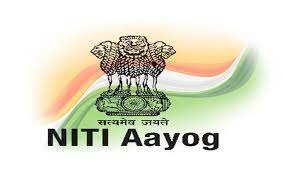
- 06 Jan 2025
In News:
- NITI Aayog, the National Institution for Transforming India, completed its 10th anniversary on January 1, 2025.
- Established to replace the Planning Commission, NITI Aayog was designed to address contemporary challenges such as sustainable development, innovation, and decentralization in a dynamic, market-driven economy.
About NITI Aayog
Establishment and Mandate
- Formation: Created through a Union Cabinet resolution in 2015.
- Primary Mandates:
- Overseeing the adoption and monitoring of the Sustainable Development Goals (SDGs).
- Promoting competitive and cooperative federalism between States and Union Territories.
Composition
- Chairperson: Prime Minister of India.
- Governing Council: Includes Chief Ministers (CMs) of all States and UTs, Lt. Governors, the Vice Chairperson, full-time members, and special invitees.
- CEO: Appointed by the PM for a fixed tenure.
Key Achievements
Policy Advisory and Decentralized Governance
- Shifted focus from financial allocation to policy advisory roles.
- Promoted decentralized governance through data-driven initiatives like the SDG India Index and the Composite Water Management Index.
Innovative Initiatives
- Aspirational Blocks Programme (2023): Focused on 500 underdeveloped blocks for 100% coverage of government schemes.
- Atal Innovation Mission (AIM): Trained over 1 crore students through Atal Tinkering Labs and incubation centres.
- Initiatives like e-Mobility, Green Hydrogen, and the Production-Linked Incentive (PLI) Scheme were conceptualized to drive innovation and sustainability.
Role and Functions of NITI Aayog
Strategic Advice and Federal Cooperation
- Provides policy formulation and strategic advice to both central and state governments.
- Fosters cooperative federalism by encouraging collaboration between the central and state governments.
Monitoring and Evaluation
- Plays a crucial role in monitoring and evaluating policies and programs to ensure alignment with long-term goals.
Promoting Innovation and SDGs
- NITI Aayog contributes to aligning national development programs with the Sustainable Development Goals (SDGs), focusing on innovation, research, and technology in critical sectors.
Key Differences Between Planning Commission and NITI Aayog
Aspect Planning Commission NITI Aayog
Purpose Centralized planning and resource allocation. Focus on cooperative federalism and policy research.
Structure Led by the PM, with Deputy Chairman and full-time members. Led by the PM, with Vice-Chairperson, CEO, and Governing Council.
Approach Top-down, centralized. Bottom-up, encouraging state participation.
Role in Governance Executive authority over policies. Advisory body without enforcement power.
Five-Year Plans Formulated and implemented. Focus on long-term development, no Five-Year Plans.
Challenges Faced by NITI Aayog
- Limited Executive Power: Lacks authority to enforce its recommendations, restricting its influence.
- Coordination Issues: Achieving effective collaboration between central and state governments remains challenging.
- Data Gaps: Inconsistent state-level data hampers accurate policymaking and evaluation.
- Resource Constraints: Limited resources hinder full implementation of initiatives.
- Resistance to Change: Some states resist NITI Aayog's initiatives due to concerns over autonomy and alignment with local needs.
Future Vision and Planning
- Agenda for 2030: Focus on achieving the Sustainable Development Goals (SDGs) in areas like poverty alleviation, education, healthcare, clean energy, and gender equality.
- Vision for 2035: NITI Aayog's 15-year vision document aims for sustainable, inclusive growth, with an emphasis on economic growth, social equity, and environmental sustainability.
- Innovation and Digitalization: Promotes digitalization and innovation through data-driven policymaking and regional focus on tribal and hilly areas.
Conclusion: Reflections on the First Decade
- Despite significant achievements, NITI Aayog’s influence remains limited by its advisory role and resource constraints.
- The shift away from centralized planning, evident since the dissolution of the Planning Commission, has sparked debate about the effectiveness of such a model in ensuring long-term development and inclusive growth.
Draft Digital Personal Data Protection Rules, 2025

- 05 Jan 2025
In News:
The Government of India has introduced the long-awaited draft Digital Personal Data Protection Rules, 2025 to operationalize the Digital Personal Data Protection Act, 2023. These rules contain several significant provisions, including the controversial reintroduction of data localisation requirements, provisions for children's data protection, and measures to strengthen data fiduciaries' responsibilities.
This development holds substantial implications for both Indian citizens' data privacy and global tech companies, especially with respect to compliance, security measures, and data processing.
Data Localisation Mandates
Key Provision: The draft rules propose that certain types of personal and traffic data must be stored within India. Specifically, "significant data fiduciaries", a category that will include large tech firms such as Meta, Google, Apple, Microsoft, and Amazon, will be restricted from transferring certain data outside India.
- Committee Oversight: A government-appointed committee will define which types of personal data cannot be transferred abroad, based on factors like national security, sovereignty, and public order.
- Localisation Re-entry: This provision brings back data localisation, a contentious issue previously removed from the 2023 Data Protection Act after heavy lobbying by tech companies.
- Impact on Big Tech: Companies like Meta and Google had previously voiced concerns that strict localisation rules could hinder their ability to offer services in India, with Google arguing for narrowly tailored data localisation norms.
Role and Responsibilities of Data Fiduciaries
Key Provision: The rules lay out a clear framework for data fiduciaries, defined as entities that collect and process personal data.
- Significant Data Fiduciaries (SDFs): This subcategory will include entities that process large volumes of sensitive data, such as health and financial data. These companies will be held to higher standards of compliance and security.
- Data Retention: Personal data can only be stored for as long as consent is valid; after which, it must be deleted.
- Security Measures: Data fiduciaries must implement stringent measures such as encryption, access control, unauthorized access monitoring, and data backups.
Parental Consent for Children's Data
Key Provision: The draft rules include provisions aimed at protecting children's data, including mechanisms to ensure verifiable parental consent before children under 18 can use online platforms.
- Verification Process: Platforms must verify the identity of parents or guardians using government-issued identification or digital locker services.
- Exceptions: Health, mental health institutions, educational establishments, and daycare centers will be exempted from needing parental consent.
Data Breach Reporting and Penalties
Key Provision: In the event of a data breach, data fiduciaries are required to notify affected individuals without delay, detailing the breach's nature, potential consequences, and mitigation measures. Failure to comply with breach safeguards can result in penalties.
- Penalties for Non-Compliance: Entities that fail to adequately protect data or prevent breaches could face fines of up to Rs 250 crore.
- Breach Notification: The rules mandate timely reporting of all breaches, whether minor or major, and an emphasis on transparency in the breach notification process.
Safeguards for Government Data Processing
Key Provision: The draft rules seek to ensure that the government and its agencies process citizen data in a lawful manner with adequate safeguards in place.
- Exemptions for National Security and Public Order: The rules also address concerns that the government may process data without adequate checks by stipulating lawful processing and protections when data is used for national security, foreign relations, or public order.
Compliance Challenges for Businesses
Key Challenges: The introduction of these rules will impose several challenges for businesses, particularly tech companies:
- Consent Management: Companies will need to implement robust systems to handle consent records, allowing users to withdraw consent at any time. This will require significant infrastructure changes.
- Data Infrastructure Overhaul: Organizations will need to invest in data collection, storage, and lifecycle management systems to ensure compliance.
- Security Standards: Experts have raised concerns about the vagueness of certain security standards, which could lead to inconsistent implementation across sectors.
Penalties and Enforcement
Key Provisions:
- Penalties for Non-Compliance: Entities failing to adhere to the rules may face significant financial penalties, including fines up to Rs 250 crore for serious breaches.
- Repeat Violations: Consent managers who repeatedly violate rules could have their registration suspended or cancelled.
Conclusion:
The Digital Personal Data Protection Rules, 2025 bring important changes to India’s data privacy framework, particularly the reintroduction of data localisation and more stringent requirements for data fiduciaries. These rules aim to strengthen citizen privacy and ensure greater accountability from businesses. However, the challenges in compliance, especially for global tech firms, and the potential impact on service delivery, will need to be closely monitored as the final rules take shape.
Caste-Based Discrimination in Prisons

- 02 Jan 2025
In News:
The Union Ministry of Home Affairs has recently introduced significant revisions to the Model Prison Manual, 2016, and the Model Prisons and Correctional Services Act, 2023. These changes aim to eliminate caste-based discrimination in Indian prisons and establish a standardized approach to defining and treating habitual offenders across the country.
Background
In October 2024, the Supreme Court of India expressed concerns over the persistence of caste-based discrimination within prisons and the lack of consistency in how habitual offenders are classified. In response, the Court instructed the government to amend prison regulations to promote equality and fairness. The newly introduced reforms are in line with the Court's directives and focus on aligning prison practices with constitutional principles.
Addressing Caste-Based Discrimination in Prisons
The recent amendments take specific steps to combat caste-based discrimination within correctional facilities:
- Ban on Discrimination: Prison authorities are now mandated to ensure there is no caste-based segregation or bias. All work assignments and duties will be distributed impartially among inmates.
- Legal Provision Against Discrimination: A new clause, Section 55(A), titled "Prohibition of Caste-Based Discrimination in Prisons and Correctional Institutions", has been added to the Model Act, establishing a formal legal framework to address caste discrimination.
- Manual Scavenging Ban: The amendments extend the provisions of the Prohibition of Employment as Manual Scavengers and their Rehabilitation Act, 2013 to include prisons, prohibiting the degrading practice of manual scavenging or any hazardous cleaning within correctional facilities.
Redefining Habitual Offenders
The updated amendments also standardize the classification and treatment of habitual offenders, in accordance with the Supreme Court’s directions:
- Uniform Definition: A habitual offender is now officially defined as an individual convicted and sentenced to imprisonment for two or more separate offences within a continuous five-year period, provided the sentences were not overturned on appeal or review. Importantly, time spent in jail under sentence is excluded from this five-year period.
- National Consistency: States that do not have specific Habitual Offender Acts must amend their laws within three months to ensure consistency with the new national framework.
Importance of the Reforms
- Promoting Equality: These amendments seek to uphold the constitutional rights of prisoners, ensuring that all individuals, regardless of caste or background, are treated equally and with dignity.
- Eliminating Degrading Practices: The extension of the manual scavenging prohibition to prisons is a vital step in eliminating degrading and inhumane practices, ensuring a more humane environment for prisoners.
- Uniform Framework: The establishment of a standardized definition of habitual offenders ensures a consistent approach in handling repeat offenders across all states, reducing the possibility of arbitrary classifications.
Conclusion
The reforms introduced by the Union Home Ministry mark a significant milestone in India’s prison reform journey. By addressing caste-based discrimination and standardizing the classification of habitual offenders, these amendments reaffirm the country’s commitment to human rights and the rule of law. These changes not only improve the conditions within prisons but also set the stage for future reforms aimed at creating a fairer and more equitable correctional system.
Glass Ceiling Cracks: Women's Rising Role in the 2024 Lok Sabha Elections
- 28 Dec 2024
Introduction:
The 2024 Lok Sabha elections marked a significant step forward for women’s participation in Indian politics. With 800 women candidates contesting across 390 constituencies, this was the highest ever since the 1957 general elections. This surge in women candidates has been a positive reflection of the evolving role of women in India's democratic processes.
Increase in Women Candidates:
- A total of 800 women candidates participated in the 2024 elections, up from 726 in 2019.
- The number of constituencies with no female candidate dropped to a historic low of 152, from 171 in 2019.
- However, despite the rise in participation, only 74 women won, while 629 forfeited their deposits.
Regional Variations:
- The highest number of women candidates were from Maharashtra (111), followed by Uttar Pradesh (80) and Tamil Nadu (77).
- Some constituencies, like Baramati, Secunderabad, and Warangal, saw the highest participation of women, with eight candidates each.
Voter Turnout and Gender Dynamics:
- Women voters surpassed men in voter turnout for the second consecutive time, with 65.78% women casting their vote in 2024, compared to 65.55% of men.
- Assam’s Dhubri recorded the highest female voter turnout at 92.17%, reflecting increased female engagement in the electoral process.
Electoral Data and Gender Insights:
- In 2024, there were 47.63 crore female electors out of 97.97 crore total voters, making up 48.62% of the electorate, a slight increase from 2019.
- The number of female electors per 1,000 male voters reached 946, up from 926 in 2019, showing growing electoral inclusivity.
Challenges and Progress:
- Despite the gains in women’s representation, there remain several constituencies without any female candidates, notably in states like Uttar Pradesh (30 constituencies), Bihar (15), and Gujarat (14).
- Though women's participation has risen, the number of women who win remains disproportionately low, reflecting the challenges they face in a patriarchal political landscape.
Inclusion and Diversity:
- The 2024 elections also saw greater inclusivity, with a rise in third-gender electors, which increased by 23.5% to 48,272.
- Voter turnout among transgender voters nearly doubled, reaching 27.09% compared to 14.64% in 2019.
- Additionally, the number of persons with disabilities (PwD) electors increased to 90.28 lakh, showcasing broader electoral inclusivity.
Conclusion:
The 2024 Lok Sabha elections witnessed a remarkable increase in women’s participation, both as voters and candidates. While the journey toward full gender parity in politics continues, the trends from these elections indicate a growing shift toward more inclusive electoral processes. The data released by the Election Commission further underlines this progress, showing the increasing role of women in shaping India’s democratic future.
Suposhit Gram Panchayat Abhiyan

- 26 Dec 2024
In News:
On December 26, 2024, Prime Minister Narendra Modi presided over the Veer Bal Diwas celebrations at the Bharat Mandap in New Delhi. This annual event commemorates the martyrdom of the sons of Sri Guru Gobind Singh Ji and highlights the importance of nurturing the next generation. During the occasion, PM Modi also launched the ‘Suposhit Gram Panchayat Abhiyan,’ an initiative aimed at improving nutrition and well-being in rural India.
Veer Bal Diwas: Commemorating Sacrifice and Courage
Veer Bal Diwas was declared on January 9, 2022, by PM Modi to honor the sacrifices made by the young sons of Guru Gobind Singh Ji — Sahibzada Baba Zorawar Singh and Baba Fateh Singh — who were martyred in 1704. During the Mughal-Sikh battles, these two brave boys were captured and offered safety if they converted to Islam, which they refused. Their refusal to abandon their faith led to their brutal martyrdom by being bricked alive in the walls of a fort in Sirhind (Punjab). This act of resilience and unwavering faith is a cornerstone of Sikh history and culture.
Veer Bal Diwas not only commemorates their sacrifice but also serves as a reminder of the strength, faith, and courage demonstrated by all four of Guru Gobind Singh Ji’s sons. It underscores the Sikh ideals of sacrifice, courage, and dedication to faith.
Suposhit Gram Panchayat Abhiyan: Addressing Malnutrition in Rural Areas
On the same day, PM Modi launched the 'Suposhit Gram Panchayat Abhiyan', a nationwide mission focused on improving nutritional outcomes in rural areas. The initiative aims to enhance nutrition-related infrastructure and promote active community participation in tackling malnutrition. By encouraging village-level involvement, the program seeks to ensure that nutrition becomes a community-driven effort.
Key Objectives
- Malnutrition Eradication: The initiative focuses on combating malnutrition in rural communities by improving access to better nutrition.
- Healthy Competition: Encourages competition among villages to adopt best practices for nutrition and overall health.
- Sustainable Development: Promotes long-term, sustainable health practices that align with India's broader goals, such as the Poshan Abhiyan and the Sustainable Development Goals (SDGs).
The program aims to make rural populations active participants in improving their own well-being, strengthening community-driven initiatives for better nutritional outcomes.
Engaging Children and Fostering Patriotism
In line with Veer Bal Diwas, various events were organized to engage young minds across the nation. These initiatives not only raised awareness about the significance of the day but also fostered a culture of courage, dedication, and patriotism.
- Online Competitions: Interactive quizzes were conducted through platforms like MyGov and MyBharat to encourage participation and understanding of Veer Bal Diwas.
- Creative Activities: Schools, Child Care Institutions, and Anganwadi centers organized storytelling, creative writing, and poster-making contests to engage children and promote nationalistic values.
Honoring Young Achievers: PMRBP Awardees
The event also saw the presence of the recipients of the Pradhan Mantri Rashtriya Bal Puraskar (PMRBP), which recognizes children who have demonstrated exceptional abilities in various fields. The awardees, 17 in total, were presented with medals, certificates, and citation booklets by President Droupadi Murmu. These young achievers served as a source of inspiration, reinforcing the theme of celebrating youth potential on Veer Bal Diwas.
Conclusion: Strengthening the Foundation of India’s Future
The celebrations of Veer Bal Diwas and the launch of the Suposhit Gram Panchayat Abhiyan highlight the government’s commitment to nurturing India’s future by investing in its children and rural communities. By honoring historical sacrifices and fostering community-driven health and nutrition initiatives, these efforts contribute to building a resilient, prosperous India that can meet global challenges head-on. The twin focus on children’s development and rural well-being underscores India’s vision of a healthier, more inclusive society, aligned with national and global development goals.
Supreme Court Directs Policy for Sacred Groves Protection

- 20 Dec 2024
In News:
Recently, the Supreme Court of India issued a significant judgment directing the Union Government to formulate a comprehensive policy for the protection and management of sacred groves across the country. These natural spaces, traditionally safeguarded by local communities, play a crucial role in preserving both ecological diversity and cultural heritage.
What are Sacred Groves?
Sacred Groves are patches of virgin forests that are protected by local communities due to their religious and cultural significance. They represent remnants of what were once dominant ecosystems and serve as key habitats for flora and fauna. Typically, sacred groves are not just ecological reserves, but also form an integral part of local traditions, often protected due to spiritual beliefs.
Key Features of Sacred Groves:
- Ecological Value: Sacred groves contribute significantly to biodiversity conservation.
- Cultural Significance: These groves are revered in various religious practices and are central to local traditions.
- Geographical Presence: Sacred groves are found in regions like Tamil Nadu, Kerala, Karnataka, Maharashtra, and parts of Rajasthan.
Supreme Court's Directive
The court's judgment was based on a plea highlighting the decline of sacred groves in Rajasthan, particularly those being lost due to deforestation and illegal land-use changes. While the Wildlife (Protection) Act of 1972 empowers state governments to declare community lands as reserves, the court recognized the need for a unified national policy to protect sacred groves as cultural reserves.
Recommendations:
- Nationwide Survey: The Ministry of Environment, Forest, and Climate Change (MoEF&CC) was instructed to conduct a nationwide survey to map and assess sacred groves, identifying their size and extent.
- Legal Protection: Sacred groves should be recognized as community reserves and protected under the Wildlife (Protection) Act, 1972.
- State-Specific Measures: The Rajasthan government was specifically directed to carry out detailed mapping (both on-ground and satellite) of sacred groves within the state, ensuring that the groves are recognized for their ecological and cultural significance.
The Role of Sacred Groves in Conservation
Sacred groves play a pivotal role in the conservation of biodiversity. They serve as refuges for various plant and animal species, and the traditional practices associated with these groves, such as tree worship, discourage destructive activities like logging and hunting.
Ecological and Cultural Importance:
- Sacred groves often act as critical biodiversity hotspots, preserving rare and indigenous species.
- They help maintain clean water ecosystems and act as carbon sinks, contributing to climate mitigation.
- Practices of non-interference with these areas have allowed flora and fauna to thrive over centuries.
Cultural Significance Across India
The importance of sacred groves is deeply embedded in India's diverse cultural heritage. They are considered the abode of deities, and various regions have unique names and rituals associated with these groves.
Examples of Sacred Groves in India:
- Himachal Pradesh: Devban
- Karnataka: Devarakadu
- Kerala: Kavu
- Rajasthan: Oran
- Maharashtra: Devrai
Piplantri Village Model
A key example highlighted in the judgment was the Piplantri village in Rajasthan, where the community undertook a remarkable transformation of barren land into flourishing groves. The initiative, driven by local leadership, involves planting 111 trees for every girl child born, which has led to several environmental and social benefits.
Impact of Piplantri's Community Efforts:
- Over 40 lakh trees have been planted, which has recharged the water table by 800-900 feet and lowered the local climate by 3-4°C.
- The initiative has contributed to the reduction of female foeticide and empowered women's self-help groups.
- The village now enjoys economic growth, better education opportunities, and increased local income.
Legal and Statutory Framework
Sacred groves are already recognized under existing Indian laws, notably the Wildlife (Protection) Act, 1972, which allows states to declare sacred groves as community reserves. Additionally, the National Forest Policy of 1988 encourages the involvement of local communities in the conservation of forest areas, a principle supported by the Godavarman Case of 1996.
Key Legal Provisions:
- Wildlife (Protection) Act, 1972: Empowers state governments to declare sacred groves as community reserves.
- National Forest Policy, 1988: Encourages community involvement in the conservation and protection of forests, including sacred groves.
- Scheduled Tribes and Other Traditional Forest Dwellers (Recognition of Forest Rights) Act, 2006: Suggests empowering traditional communities as custodians of sacred groves.
Looking Ahead: The Need for Action
The Supreme Court has scheduled further hearings to assess the progress of the survey and mapping efforts by Rajasthan. The court also stressed the importance of empowering traditional communities to continue their role as custodians of sacred groves, ensuring their sustainable protection for future generations.
By recognizing the ecological and cultural significance of sacred groves and encouraging community-driven conservation efforts, the Supreme Court’s ruling sets a precedent for more inclusive environmental policies in India. This could also inspire similar initiatives in other parts of the world, promoting the protection of sacred natural spaces for their critical role in maintaining biodiversity and fostering sustainable communities.
Impeachment of Judges
- 12 Dec 2024
In News:
The recent controversy surrounding remarks made by Justice Shekhar Kumar Yadav of the Allahabad High Court has prompted calls for his impeachment. During an event organized by the Vishwa Hindu Parishad (VHP), Justice Yadav made statements that were perceived as communal, leading to concerns over judicial impartiality. This incident has reignited discussions about the impeachment process for judges in India, highlighting the delicate balance between judicial independence and accountability.
Impeachment Process for Judges in India
In India, the impeachment process for judges, although not explicitly mentioned in the Constitution, serves as a mechanism to ensure judicial accountability while safeguarding judicial independence. The process is outlined under Articles 124 and 218 of the Indian Constitution, which govern the removal of Supreme Court and High Court judges, respectively.
Grounds for Impeachment
Judges in India can be removed on two grounds:
- Proved Misbehavior: Conduct that breaches the ethical standards of the judiciary.
- Incapacity: A judge’s inability to perform judicial duties due to physical or mental infirmity.
These grounds are clearly specified to prevent arbitrary removal, ensuring that the process remains fair and just.
Steps in the Impeachment Process
- Initiation of Motion: The process begins when a motion for impeachment is introduced in Parliament, either in the Lok Sabha or Rajya Sabha. The motion must be supported by at least 100 members of the Lok Sabha or 50 members of the Rajya Sabha. This ensures significant parliamentary backing before the motion proceeds.
- Formation of an Inquiry Committee: If the motion is admitted, a three-member inquiry committee is constituted. This includes a Supreme Court judge, the Chief Justice of a High Court, and a distinguished jurist. The committee conducts a thorough investigation into the allegations.
- Committee Report and Parliamentary Debate: Following the investigation, the committee submits its findings. If the judge is found guilty, the report is debated in Parliament. Both Houses must approve the motion by a special majority, which requires a two-thirds majority of members present and voting, as well as a majority of the total membership.
- Final Removal by the President: Once the motion is passed in both Houses, it is presented to the President, who issues the removal order.
Safeguards Against Misuse
The impeachment process includes several safeguards to prevent misuse:
- High Threshold for Initiation: The requirement for significant support from Parliament ensures that the process cannot be initiated frivolously.
- Objective Inquiry: The inquiry committee, comprising legal experts, guarantees an impartial investigation.
- Parliamentary Scrutiny: Both Houses of Parliament are involved, ensuring that the process undergoes democratic scrutiny.
Challenges and Precedents
Despite the rigorous process, no Supreme Court judge has been successfully impeached to date. Past attempts, such as those against Justice V. Ramaswami (1993) and Chief Justice Dipak Misra (2018), were unsuccessful. These instances demonstrate the complexities involved in the impeachment process.
Guidelines for Judges’ Public Statements
Judges in India are entitled to freedom of speech, but they are expected to exercise caution in public statements to maintain the dignity of their office. The Bangalore Principles of Judicial Conduct (2002) and the Restatement of Values of Judicial Life (1997) outline key principles for judicial conduct, including:
- Non-Interference in Political Matters: Judges should refrain from commenting on political issues to avoid any perception of bias.
- Impartiality: Judges must avoid statements that could prejudice ongoing cases or align them with specific ideologies.
Upholding Judicial Impartiality in a Diverse Society
To maintain impartiality, judges must interpret laws based on constitutional values of justice, equality, and secularism. Furthermore, the judiciary must ensure representation from diverse backgrounds to foster inclusivity and reduce systemic biases. Training programs focused on cultural competence and social diversity are essential to ensure that judges are sensitive to the needs of marginalized communities.
Conclusion
The impeachment process, while stringent, plays a critical role in maintaining judicial accountability in India. As seen in the case of Justice Yadav, judicial conduct, particularly public statements, must be carefully scrutinized to preserve the integrity of the judiciary. Upholding impartiality and adhering to constitutional values are paramount in ensuring that the judiciary continues to function as a neutral arbiter in India’s democracy.
No-Confidence Motion Against Rajya Sabha Chairman
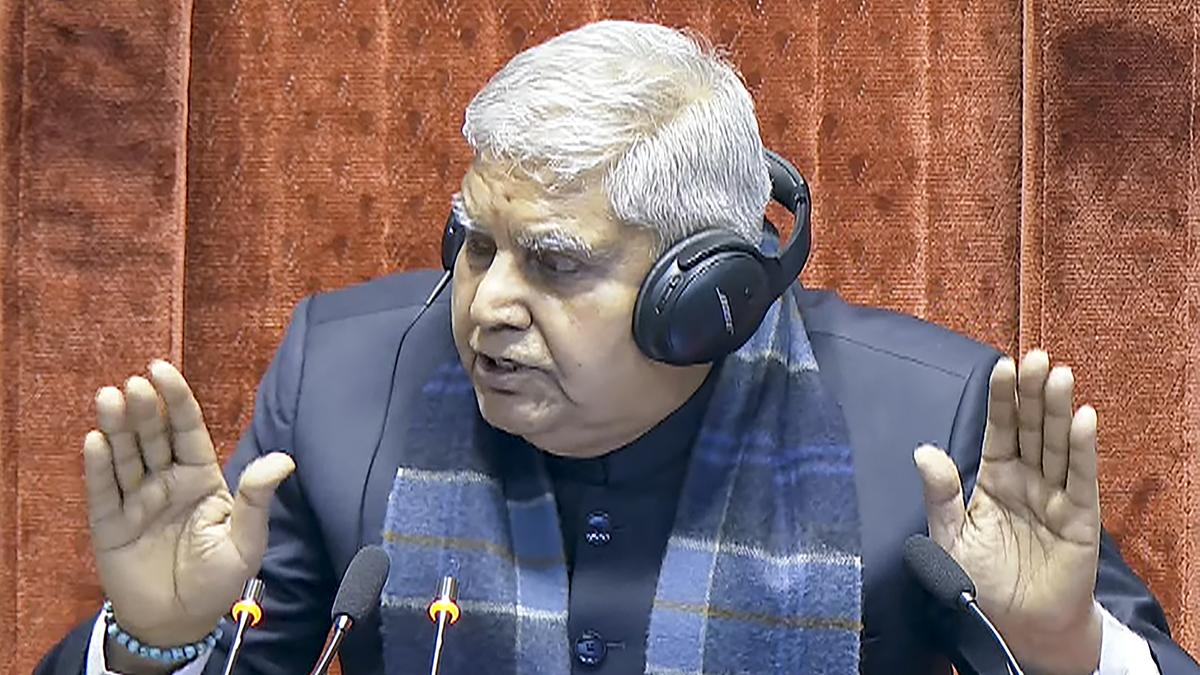
- 10 Dec 2024
In News:
In December 2024, around 60 opposition MPs from the INDIA (Indian National Developmental, Inclusive Alliance) bloc submitted a notice to the Rajya Sabha Secretariat, seeking the removal of Vice President Jagdeep Dhankhar from his position as the Chairman of the Rajya Sabha. This unprecedented move has sparked significant political debate, with the opposition accusing Dhankhar of partisanship and bias in the conduct of parliamentary proceedings.
The Charges Against Jagdeep Dhankhar
Allegations of Bias and Partisanship
The opposition has raised several allegations against Dhankhar since his appointment as the Rajya Sabha Chairman in August 2022. These include:
- Partiality towards the ruling government: The opposition claims that Dhankhar has shown bias in favor of the BJP, with accusations of repeatedly denying the Leader of the Opposition, Mallikarjun Kharge, the opportunity to respond to statements made by Prime Minister Narendra Modi and BJP President J.P. Nadda.
- Interference in Parliamentary Debates: Opposition MPs have accused Dhankhar of disrupting their speeches and allowing ruling party members to dominate parliamentary discussions.
- Unbecoming Remarks: The notice also refers to comments made by Dhankhar, including praising the Rashtriya Swayamsevak Sangh (RSS) and recalling his association with "so-called cultural organizations." These actions, according to the opposition, violate the non-partisan nature expected of the Chairman.
The Constitutional Framework for Removal of the Vice-President
Legal Provisions for Impeachment
The Vice-President of India, who also serves as the Chairman of the Rajya Sabha, is elected for a five-year term. Article 67 of the Indian Constitution outlines the procedure for his removal:
- Notice Requirement: A motion for the removal of the Vice-President must be introduced in the Rajya Sabha with a prior 14-day notice.
- Approval Process: The resolution must be passed by a majority in the Rajya Sabha and then approved by the Lok Sabha.
- Grounds for Removal: The Vice-President can only be removed through a resolution that is supported by a majority in both Houses of Parliament.
Opposition’s Plan and Challenges
Despite lacking the necessary numbers in the Rajya Sabha to succeed in the impeachment motion, the opposition's move is aimed at sending a political message to the BJP, expressing dissatisfaction with the functioning of the Parliament under Dhankhar’s leadership.
The current session of Parliament is scheduled to end on December 20, 2024, leaving little time for the motion to gain traction. The opposition also does not have the numbers needed for a majority in the Rajya Sabha, which complicates the chances of success for the motion.
Historical Precedents for Similar Resolutions
The last notable attempt to remove a parliamentary officer occurred in 2020 when the opposition moved a no-confidence motion against Rajya Sabha Deputy Chairman Harivansh. This motion was prompted by his decision to extend the session during the contentious farm Bills debate. Although the motion was discussed, it did not result in any significant change.
Similarly, there have been instances where motions to remove Lok Sabha Speakers have been moved but not passed, such as against G.V. Mavalankar in 1951, Sardar Hukam Singh in 1966, and Balram Jakhar in 1987.
Role and Significance of the Vice-President in India
Constitutional Role
The Vice-President of India holds the second-highest constitutional office, primarily functioning as the ex-officio Chairman of the Rajya Sabha. His duties include:
- Presiding over Rajya Sabha Sessions: The Vice-President ensures the smooth functioning of the Rajya Sabha and maintains order during debates. He does not typically vote except in the case of a tie.
- Acting President: In the absence, resignation, or death of the President, the Vice-President assumes the role of the Acting President.
Removal Process Under Article 67
- Article 67(b) of the Constitution specifies the process for the removal of the Vice-President, requiring a 14-day notice and approval from both Houses of Parliament. This provision ensures that any such resolution receives due consideration and is not moved hastily.
Implications for Parliamentary Democracy
- Risks to Parliamentary Integrity: Opposition leaders have expressed concern that the current political environment is eroding the integrity of India’s parliamentary system. They argue that by misusing constitutional offices for partisan ends, the ruling government risks undermining the democratic foundations of the country.
Significance of the Move
- Although the opposition may not succeed in removing Dhankhar, the notice serves as a powerful symbol of resistance. The move underscores the opposition’s commitment to defending the principles of parliamentary democracy and the need for impartiality in the conduct of parliamentary affairs.
Conclusion
The opposition’s push to remove Vice-President Jagdeep Dhankhar from his position as the Chairman of the Rajya Sabha highlights the growing political tensions in India’s Parliament. While the move may not succeed due to the lack of numerical support, it brings to the forefront critical issues regarding the independence of constitutional offices and the functioning of parliamentary democracy in India. The developments around this notice will continue to be a significant point of discussion as the winter session of Parliament draws to a close.
The Controversy around the Sambhal Mosque
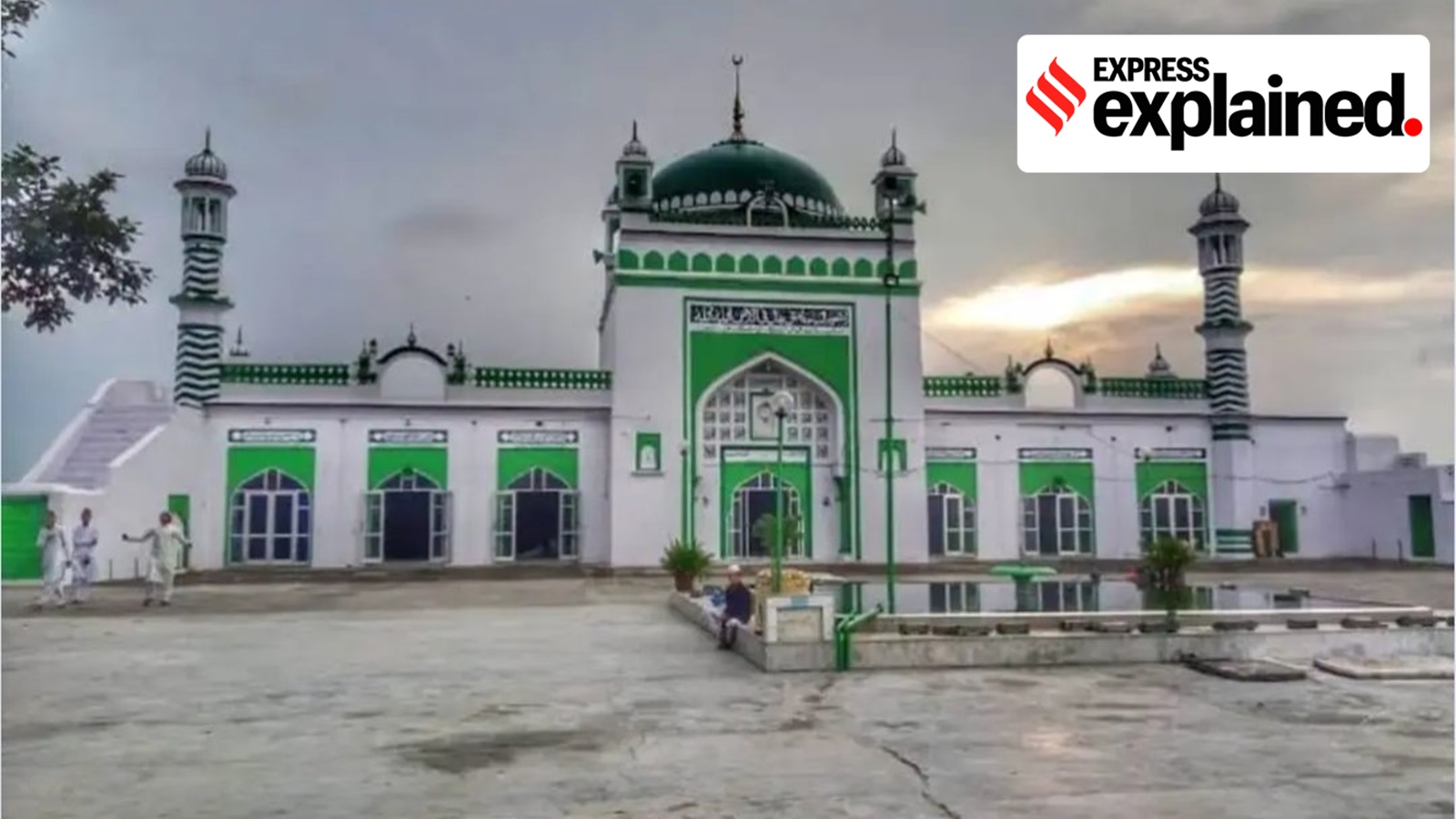
- 27 Nov 2024
Introduction
The Shahi Jama Masjid in Sambhal, Uttar Pradesh, has become a flashpoint in a larger religious and legal dispute after a petition was filed questioning its historical origins. Alleging that the mosque was built on the site of an ancient Hindu temple, the case has triggered both legal challenges and violent clashes, raising concerns about communal harmony and the protection of religious sites.
Background of the Dispute
On November 19, 2024, a petition was filed in the Sambhal district court, claiming that the 16th-century Jama Masjid was constructed over the site of an ancient Hari Har Mandir. This claim mirrors similar petitions filed in other parts of India, including Varanasi, Mathura, and Dhar, where Hindu groups have sought to alter the religious character of mosques they believe were built on temple sites. The petitioners in the Sambhal case include advocate Hari Shanker Jain, a key figure in the Gyanvapi and Mathura disputes.
Survey and Clashes
The Sambhal court ordered a survey of the mosque on November 19, 2024, to investigate the historical claims. The initial phase of the survey, conducted peacefully, involved mosque authorities and local police. However, a second survey on November 24 escalated tensions, as it was accompanied by a procession led by a local priest chanting Hindu slogans. Protests soon turned violent, leading to stone-pelting, police firing, and at least five deaths, including two teenagers. Locals accused the police of excessive force, while the police denied allegations of shooting.
The Mosque’s Historical Context
The Shahi Jama Masjid was built by Mughal Emperor Babur's general, Mir Hindu Beg, around 1528. It is one of the three mosques constructed during Babur's reign, the other two being in Panipat and Ayodhya. Architectural studies suggest it was constructed using stone masonry with plaster, and while some historians believe it was built on a pre-existing structure, the mosque’s historical context is complex. Local Hindu tradition holds that the site was originally a Vishnu temple, with the belief that Kalki, the tenth avatar of Vishnu, will arrive there.
Legal Implications: The Places of Worship Act, 1991
The dispute touches upon the Places of Worship Act, 1991, which mandates the preservation of the religious character of all places of worship as they existed on August 15, 1947. The Act was designed to prevent further disputes over religious sites, except for the Babri Masjid case, which was already under litigation at the time. The petitioners in the Sambhal case argue that the religious character of the mosque should be altered, contradicting the Act’s provisions.
Challenges to the Places of Worship Act
The Places of Worship Act has been criticized for barring judicial review and preventing any changes to the religious status of sites that existed before India’s independence. Some legal experts suggest that while an inquiry into the religious nature of a place might be permissible, changing that character would violate the Act. The ongoing legal challenges in the Supreme Court, including cases from Varanasi, Mathura, and now Sambhal, highlight the complexities of reconciling India’s legal framework with communal sensitivities.
Conclusion
The Sambhal mosque dispute underscores the challenges in balancing India’s legal framework with religious and communal dynamics. While the Places of Worship Act aims to preserve the status quo, petitions challenging it have revived contentious debates over historical monuments and their religious significance. As the legal proceedings continue, the case will likely have far-reaching implications for India’s secular fabric and the preservation of communal harmony.
Challenges in Municipal Financing
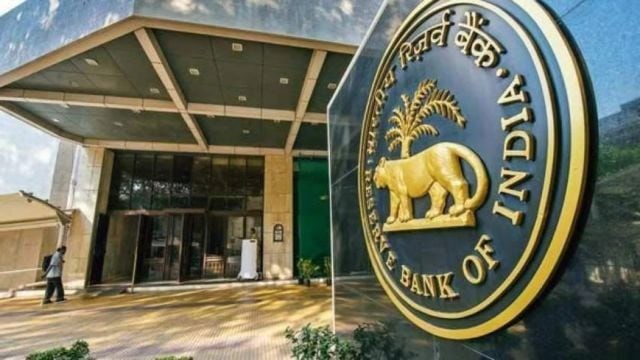
- 25 Nov 2024
Introduction
Municipal corporations (MCs) in India are essential service providers in urban areas, but they face severe financial constraints, which hinder their ability to provide quality services. While urban India contributes almost 60% of the nation's economic output, MCs are heavily reliant on state and central government transfers, limiting their financial autonomy and operational capacity.
Key Issues in Municipal Financing
- Limited Revenue Generation
- Low Property Tax Revenues: Property tax, the main source of municipal revenue, contributes only 0.12% of GDP, a figure that reflects poor tax collection mechanisms and outdated property valuation systems.
- Revenue Concentration: Over 58% of municipal revenue comes from the top 10 cities, highlighting fiscal disparity between urban areas.
- Dependence on Government Transfers: Municipalities rely significantly on state and central transfers, constituting a large portion of their revenue. This reduces their ability to plan and execute long-term projects independently.
- Inefficiency in Tax and Fee Collection
- Ineffective Property Tax Systems: Existing tax formulas do not reflect actual property valuations, leading to under-taxation and revenue loss.
- Inadequate User Charges: Fees for essential services like water supply, sanitation, and waste management are not regularly adjusted, impacting cost recovery and service quality.
Strategies for Strengthening Urban Local Bodies (ULBs)
- Enhancing Revenue Sources
- Property Tax Reforms: Implementing GIS-based property tax mapping and linking tax rates to actual property valuations can improve tax compliance and revenue generation.
- Rationalising User Charges: Regular adjustments to service fees for water, sanitation, and waste management can ensure cost recovery and better service delivery.
- Reducing Dependence on Transfers
- State and Central Transfers: A rule-based framework for government transfers, accounting for inflation and city growth, can ensure predictability and adequate compensation for MCs.
- Boosting Non-Tax Revenues: MCs can increase income from user fees (e.g., for urban transport and waste management) and explore public-private partnerships (PPPs) to enhance service delivery.
- Leveraging Technology for Efficiency
- Digitalisation and Automation: Streamlining processes through technology can reduce inefficiencies, cut down on waste, and free up resources for capital expenditure.
- Monitoring Systems: Improved monitoring and reporting can reduce pilferage, enhance revenue collection, and ensure accountability.
Fiscal Management and Innovative Financing
- Municipal Bonds and Innovative Financing
- Larger MCs are already using municipal bonds to fund infrastructure projects. Smaller cities can adopt similar financing instruments to diversify funding sources and attract private investment.
- Public-Private Partnerships (PPPs): Fostering partnerships in sectors like urban transport and waste management can attract private investment and reduce the financial burden on MCs.
- Resource Pooling for Infrastructure Projects
- MCs can collaborate to pool resources for large-scale projects, such as renewable energy or urban transport initiatives, overcoming fiscal constraints that individual corporations face.
Government Initiatives for Urban Governance
- Citizen-Centric Programs
- Swachh Sarvekshan (2017) promotes citizen participation to improve urban cleanliness.
- Swachh Bharat Idea Book empowers citizens to propose innovative solutions to urban challenges.
- Performance-Based Indices
- Ease of Living Index (2017) and the Municipal Performance Index (2019) assess urban quality of life, service delivery, and governance, encouraging better performance in ULBs.
Conclusion
Empowering urban local bodies is crucial for effective urban governance and development. By improving revenue generation through reforms, reducing dependence on transfers, and adopting innovative financing mechanisms, municipal corporations can enhance their capacity to meet the growing demands of urbanization. Collaborative efforts between the government, civil society, and academia are essential to ensure sustainable urban development and better living conditions for urban residents.
The Fight for Accessibility and Dignity in Indian Prisons

- 24 Nov 2024
Introduction
Prisons in India face numerous systemic issues, with overcrowding, abuse, and neglect being prevalent. For prisoners with disabilities, these challenges are magnified, as they struggle with basic needs and lack necessary accommodations. This issue is not only a human rights violation but also a failure in the implementation of legal protections.
Prison Conditions and Accessibility Issues for Disabled Inmates
- Challenges Faced by Disabled Prisoners: Disabled prisoners, such as Professor G.N. Saibaba, who spent a decade in prison before being exonerated, face severe challenges in performing everyday tasks like using toilets or taking baths. His experience of being physically lifted by fellow inmates due to the lack of wheelchair accessibility highlights the systemic neglect.
- Exclusion and Abuse: Prisoners with disabilities are particularly vulnerable to abuse, as their specific needs are ignored. The government does not track the number or conditions of disabled prisoners, which leads to neglect and mistreatment. Notably, Father Stan Swamy, who had Parkinson's disease, was denied essential items like a straw, affecting his ability to eat and drink.
Legal Framework and International Obligations
- Constitutional Protections: The Indian Constitution guarantees rights to prisoners, including protection from torture (Article 21) and the right to fair legal processes (Article 22). The Supreme Court has reinforced the need for humane treatment in prisons through various judgments.
- International Commitments: India has committed to international conventions such as the United Nations Convention on the Rights of Persons with Disabilities and the Nelson Mandela Rules, which require reasonable accommodations for disabled prisoners. Despite these commitments, the practical enforcement of such rights remains minimal.
- Domestic Legislation: The Rights of Persons with Disabilities Act, 2016, mandates the protection of disabled individuals from abuse and exploitation. However, violations like the denial of basic assistive devices to prisoners show a gap in enforcement. The Ministry of Home Affairs has issued guidelines for prison accessibility, but they have yet to be widely implemented.
Systemic Failures and Lack of Political Will
- Overcrowding and Inadequate Infrastructure: Indian prisons house over 5.73 lakh prisoners, far exceeding their capacity. This overcrowding exacerbates the challenges faced by disabled prisoners, as the infrastructure is inadequate to meet their needs. A 2018 audit of Delhi’s prisons revealed significant accessibility gaps, such as inaccessible cells and toilets, making daily life for disabled prisoners even more difficult.
- Political Apathy and Public Indifference: Many believe that prisoners deserve their suffering, fueling a lack of urgency in addressing prison reforms. However, the state is responsible for ensuring the rights and dignity of all prisoners, including those with disabilities. There is a need for a shift in societal attitudes to ensure that these rights are upheld.
Reforms and the Way Forward
- Infrastructure and Accessibility: Prisons must implement universal design principles, ensuring that infrastructures are accessible to all, especially prisoners with disabilities. This includes accessible cells, toilets, and common areas, as well as functional wheelchairs.
- Judicial and Legal Reforms: The judicial system must expedite trials, especially for undertrials, and ensure that all prisoners have access to legal representation. This would help alleviate the overcrowding crisis and improve the overall functioning of the prison system.
- Comprehensive Rehabilitation and Welfare Programs: Prison systems need to focus on rehabilitation rather than mere punishment. Programs for skill development, education, and mental health support should be integrated into prison routines, providing prisoners with opportunities for personal growth and reintegration into society.
- Strengthening Oversight Mechanisms: There must be greater transparency in prison management through independent oversight bodies and regular audits. A whistleblower mechanism can help report violations of prisoner rights, ensuring greater accountability.
Reimagining Governance with AI: The Promise of GovAI
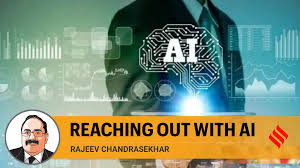
- 20 Nov 2024
In News:
India's rapid digital transformation, coupled with the advancements in Artificial Intelligence (AI), presents a unique opportunity to reimagine governance. The concept of GovAI—using AI to enhance public administration—holds the potential to revolutionize governance, improve efficiency, and create more responsive and inclusive public systems.
Digital Transformation in Governance
- Evolution of Digital Public Infrastructure (DPI)
- Over the past decade, India has made significant strides in digital governance through the development of Digital Public Infrastructure (DPI). DPI has reduced inefficiencies, enhanced transparency, and improved service delivery, transforming India's governance landscape.
- Impact of AI on Governance
- As AI becomes a critical enabler in various sectors, its application to governance promises to deliver more efficient, inclusive, and responsive government services. The potential of AI lies in its ability to provide more with less, driving innovation across key public services.
Key Trends Driving GovAI
- Rapid Digitalization of India
- Currently, 90 crore Indians are connected to the Internet, with projections indicating 120 crore by 2026, positioning India as the most connected country globally.
- Digitalization serves as the backbone for AI-driven governance, enabling efficient data collection, analysis, and informed policy-making.
- Data as a Valuable Resource
- The rapid digitalization of India has led to the generation of vast amounts of data. This data serves as the fuel for AI models, which can be used to enhance governance.
- Programs like the IndiaDatasetsProgramme aim to harness government datasets for AI development while safeguarding data privacy through legislation.
- Demand for Efficient Governance
- The post-COVID world has underscored the need for governments to deliver better outcomes with fewer resources. AI has the potential to optimize the use of public resources, enabling more efficient and targeted governance.
India’s Leadership in AI-Driven Governance
- Positioning India as a Global Leader
- India’s digital governance initiatives have placed it at the forefront of AI adoption in the public sector. Through GovAI, India can solidify its position as a global leader in using technology for public good.
- As the Chair of the Global Partnership on AI (GPAI), India is advocating for the inclusive development of AI to ensure that it benefits all nations, not just a select few.
- Role of Innovation Ecosystem
- India’s innovation ecosystem, comprising startups, entrepreneurs, and tech hubs, can play a crucial role in driving the development of AI models, platforms, and apps for governance.
- A strong partnership between the government and private sector is essential to successfully deploy AI solutions across various sectors of governance.
Potential Benefits of GovAI
- Enhanced Efficiency and Service Delivery
- AI-powered tools, such as chatbots, can provide citizens with 24/7 assistance, streamlining public service delivery and reducing waiting times.
- AI can help in automating processes and improving the overall efficiency of government operations.
- Data-Driven Decision-Making
- AI can analyze large datasets to make informed policy decisions and design targeted interventions in sectors like healthcare, education, and social welfare.
- Data-driven insights can enhance the effectiveness of welfare schemes, improving outcomes for marginalized communities.
- Increased Transparency and Accountability
- AI can enhance transparency in governance by minimizing human intervention in processes, thus reducing corruption and ensuring efficient use of public resources.
- Predictive analytics and real-time data monitoring can enable proactive governance, preventing issues before they escalate.
Challenges and Drawbacks of GovAI
- Privacy Concerns
- The use of AI in governance requires the collection and analysis of vast amounts of personal data, raising concerns about data privacy and surveillance.
- Robust data protection laws must be enforced to ensure citizens' data is handled responsibly.
- Accountability and Bias
- AI systems may produce biased outcomes depending on the data they are trained on. Ensuring accountability for decisions made by AI systems remains a challenge, particularly when errors or biases occur.
- Transparent mechanisms must be established to hold AI systems accountable for their actions.
- Increased State Control and Surveillance
- The integration of AI in governance could lead to increased state control, potentially compromising individual freedoms. Ensuring that AI is used responsibly to balance power between the government and citizens is critical.
- Digital Divide
- The benefits of AI in governance may not be evenly distributed across the population, exacerbating the digital divide.
- Efforts must be made to ensure that marginalized communities, without access to digital technologies or skills, are not left behind.
Conclusion
- Balancing Benefits and Risks
- The integration of AI into governance systems presents significant benefits, including enhanced efficiency, transparency, and proactive governance. However, there are challenges related to privacy, accountability, and state control.
- To ensure AI serves the public good, India must implement strong regulatory frameworks, promote transparency, and develop ethical AI systems that respect citizens’ rights and freedoms.
- Moving Toward Maximum Governance
- AI can help realize the vision of maximum governance, enabling more effective and targeted interventions across sectors like healthcare, security, education, and disaster management.
- The success of GovAI will depend on a trusted partnership between the government, private sector, and innovation ecosystem, ensuring that AI technology serves the larger public interest.
Khap Panchayats: Evolving Towards Modern Governance and Justice
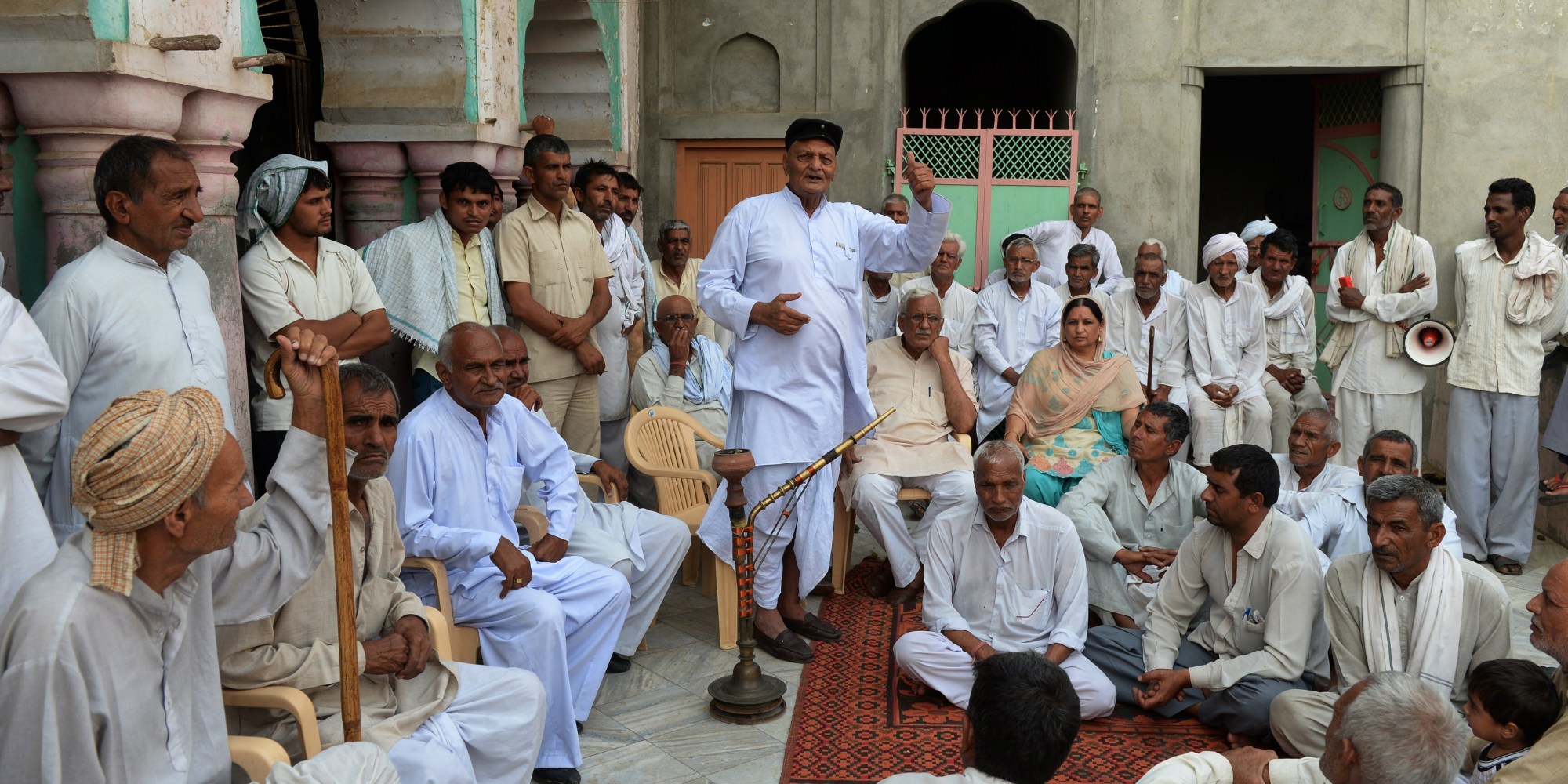
- 17 Nov 2024
Why in the News?
Khap Panchayats have attracted attention due to their evolving role in addressing key socio-economic issues like unemployment, education, and rural development. Modernization efforts are underway to regulate these traditional councils, integrating them into formal Alternative Dispute Resolution (ADR) systems for better governance, accountability, and social justice.
What are Khap Panchayats?
Definition and Origin:
Khap Panchayats are community-based councils primarily found in North India, particularly in Haryana, Uttar Pradesh, and parts of Rajasthan. These informal bodies, composed of elders from kinship groups (Khaps), have historically served as local governance bodies that resolve disputes within their communities. Their origins trace back centuries and they function alongside formal legal systems, often prioritizing customary norms over constitutional law.
Historical Role:
Historically, Khap Panchayats have maintained social order in rural areas, acting as forums for dispute resolution related to marriage, property, and community matters. While their decisions were respected within their communities, they operated parallel to formal courts, and their influence was often seen as a stabilizing force in rural society. However, their structure has also contributed to the perpetuation of patriarchal practices and social exclusion.
Issues with Khap Panchayats
- Patriarchal Practices:Khap Panchayats have often been associated with gender inequality. They enforce rigid social norms that limit women's autonomy, particularly in matrimonial matters, inheritance rights, and personal freedoms. This has led to criticism for their role in suppressing women's rights.
- Honor Killings and Social Conservatism:Khap Panchayats are notorious for opposing inter-caste and same-gotra marriages, at times even endorsing honor killings to preserve social order. Such practices are violations of fundamental rights and personal freedoms guaranteed by the Indian Constitution.
- Legality Concerns:The decisions of Khap Panchayats often clash with constitutional values such as equality, personal liberty, and dignity. Their informal judgments lack legal validity and frequently violate the rule of law, raising significant concerns about their adherence to India’s legal framework.
- Caste-based Discrimination:Khap Panchayats have been criticized for reinforcing caste hierarchies, which leads to discrimination and exclusion of marginalized communities. Their focus on preserving traditional caste structures often results in the oppression of the vulnerable, particularly lower-caste groups.
Gender Dynamics and Evolving Roles of Khap Panchayats
In recent years, some Khap Panchayats have started to show more progressive and inclusive stances, particularly in promoting gender justice:
- Support for Women Athletes:Khap Panchayats have begun to recognize and celebrate the achievements of women, particularly in sports. Several Khap bodies have felicitated women sportspersons, contributing to a growing culture of sports among rural women. This marks a shift from their traditionally patriarchal stance.
- Promoting Gender Justice:Notably, the MehamChaubisiKhap in Haryana has played a significant role in advocating for women’s rights and gender equality. It was involved in supporting the 2023 wrestlers' protest against sexual harassment, demonstrating a shift towards gender-related activism and social reform.
Supreme Court Ruling on Khap Panchayats:
In the landmark Shakti Vahini v. Union of India case (2018), the Supreme Court of India addressed the issue of honor killings and inter-caste marriages. The Court emphasized that honor killings violate fundamental rights and called for strict measures to prevent such crimes. The Court further directed state governments to establish special protection cells for couples facing threats from their families and communities. This ruling underscored the importance of personal liberty and freedom of choice, regardless of community or caste.
What is Alternative Dispute Resolution (ADR)?
Definition and Importance:
Alternative Dispute Resolution (ADR) refers to methods of resolving disputes without resorting to formal litigation. These methods include mediation, arbitration, and conciliation, all of which encourage cooperative problem-solving and mutually agreeable solutions. ADR is particularly important in India due to the overburdened judicial system, which faces a backlog of cases and delays.
ADR offers several advantages, including:
- Cost-effectiveness
- Confidentiality
- Flexibility
- Improved relationships between parties involved
Types of ADR Mechanisms:
- Arbitration: A formal process where an arbitrator resolves disputes and their decision is legally binding.
- Conciliation: A third-party neutral assists the parties in reaching an agreement, and the recommendations can be accepted or rejected.
- Mediation: A mediator facilitates communication between disputing parties, helping them reach a voluntary and mutually agreeable resolution.
- Negotiation: A direct negotiation between the parties without third-party involvement, aiming for a mutually acceptable settlement.
Integrating Khap Panchayats into the Formal ADR System
Given the potential of Khap Panchayats as community-based governance bodies, integrating them into the formal ADR framework can significantly enhance their role in dispute resolution. Here are some strategies for modernizing Khap Panchayats:
- Legal Recognition of ADR Role:Khap Panchayats can be legally recognized within the ADR framework, formalizing their role in mediation and dispute resolution, ensuring their decisions align with constitutional norms and human rights.
- Training and Capacity Building:Khap leaders can undergo training in ADR techniques such as mediation and arbitration, equipping them with skills to resolve conflicts impartially and in line with legal standards. This would help transition Khaps from informal bodies to more structured and legally compliant dispute resolution mechanisms.
- Legal Regulation and Oversight:Regulations can be put in place to define the scope and limitations of Khap Panchayats' authority, ensuring their decisions do not violate human rights or the constitution. Oversight mechanisms should be established to monitor their actions and prevent practices like honor killings or forced marriages.
- Shift Towards Developmental Roles:Some Khap Panchayats are already advocating for progressive reforms in areas like unemployment, education, and rural development. By focusing on these issues, Khap Panchayats can serve as agents of social change and contribute to community development.
- Awareness and Accountability:Awareness campaigns can educate rural communities about constitutional rights and the legal system, emphasizing the importance of formal legal frameworks and human rights. At the same time, Khap Panchayats should be held accountable for actions that undermine justice or equality.
- Collaboration with Formal Institutions:Khap Panchayats can collaborate with local governance bodies and judicial institutions, ensuring that their decisions align with the rule of law and contribute to social justice. This would enhance their role in inclusive decision-making and legally sound governance.
Conclusion
Khap Panchayats, with their deep-rooted history and influence, have the potential to evolve into modern governance institutions. By integrating them into the formal ADR framework, aligning their practices with constitutional values, and focusing on community development, they can contribute positively to dispute resolution and social reform in rural India. This transformation will require legal regulation, training, oversight, and awareness to ensure that Khap Panchayats function as effective, equitable bodies that respect the fundamental rights of all individuals.
Net Borrowing Ceiling
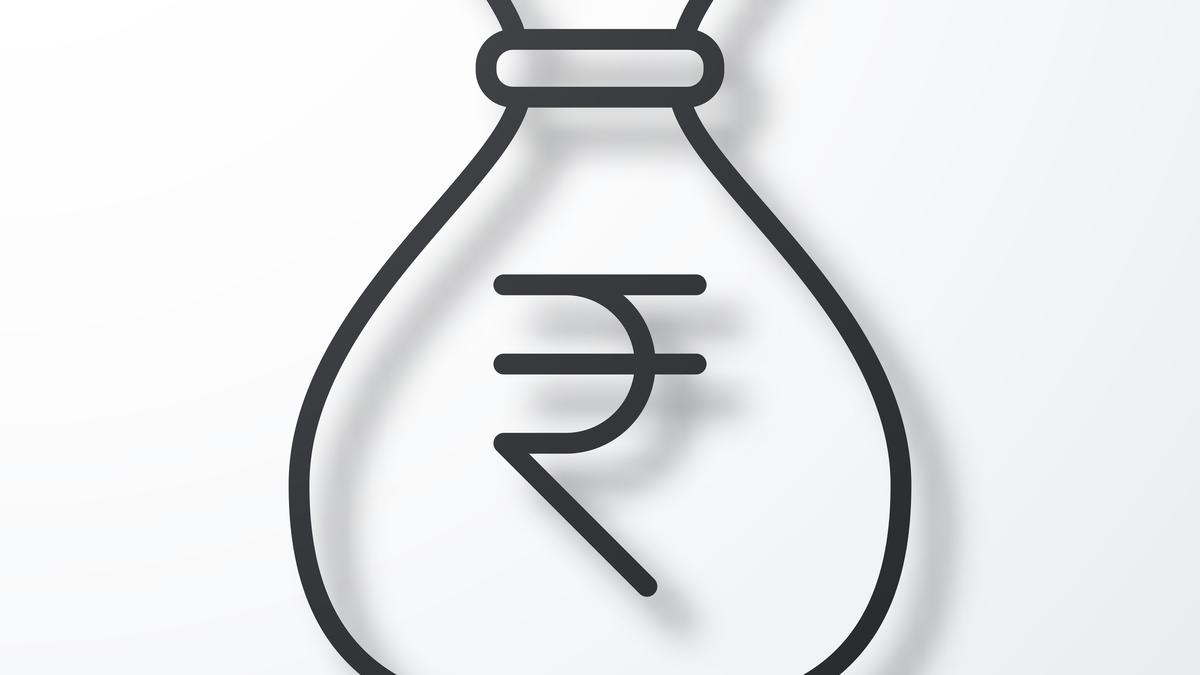
- 16 Nov 2024
In News:
- In 2023, the central government imposed a Net Borrowing Ceiling (NBC) on Kerala, limiting its borrowing capacity to 3% of the projected Gross State Domestic Product (GSDP) for the fiscal year 2023-24.
- Impact on Kerala’s Finances: This ceiling has significantly impacted Kerala’s ability to meet its expenditure needs and fund developmental activities, triggering political and legal disputes. Kerala has approached the Supreme Court of India, arguing that the imposition of NBC infringes upon its constitutional rights under Article 293 of the Indian Constitution.
Constitutional Provisions on Borrowing Powers
Article 292: Borrowing Powers of the Centre
- Central Government’s Borrowing: Article 292 grants the Central Government the authority to borrow money on the security of the Consolidated Fund of India.
- Limits on Borrowing: The extent of borrowing by the Centre is determined by laws enacted by Parliament.
Article 293: Borrowing Powers of the States
- State Borrowing: Article 293 allows State Governments to borrow within India against the Consolidated Fund of the State. However, it imposes certain conditions:
- If a State has outstanding loans or guarantees given by the Centre, the Centre’s consent is required to raise further loans.
- The Central government can impose conditions when granting such consent.
Centre’s Role in State Borrowing
- Article 293(3) allows the Centre to impose conditions on a state’s borrowing if it has existing liabilities or guarantees outstanding.
- The Centre has wide discretion in granting or denying consent, which has been a point of contention in Kerala’s case.
The Imposition of Net Borrowing Ceiling (NBC)
Scope of the NBC
- Comprehensive Coverage: The NBC encompasses all borrowing avenues, including open market loans, loans from financial institutions, and liabilities from State public accounts. To curb circumventing of the borrowing cap via State-owned enterprises, the NBC also covers borrowings by these entities.
Purpose of NBC
- Fiscal Discipline: The NBC is designed to regulate borrowing and prevent states from accumulating unsustainable levels of debt, thus ensuring financial stability.
- Transparency: By including all borrowing avenues, including off-budget borrowings by state-owned enterprises, the NBC aims to provide a clearer picture of a state’s financial health.
Arguments for the NBC
- Macroeconomic Stability: The NBC helps maintain macroeconomic stability by controlling the borrowing levels of states, thus protecting the national economy.
- Compliance with FRBM Act: The NBC aligns with the Fiscal Responsibility and Budget Management (FRBM) Act, aiming to keep the fiscal deficit within prescribed limits.
- Equitable Resource Distribution: The NBC ensures that wealthier states do not disproportionately borrow, thus promoting balanced regional development.
Arguments Against the NBC
- Erosion of Fiscal Autonomy: Critics argue that the NBC undermines the fiscal autonomy of states, as guaranteed by Article 293, by restricting their ability to make independent financial decisions.
- Impact on Developmental Activities: States, particularly Kerala, contend that the borrowing cap restricts their ability to fund key infrastructure projects and social welfare activities.
- Legal Concerns: The NBC’s impact on the interpretation of Article 293 raises legal questions regarding the extent of the Centre’s authority over state borrowing powers.
Fiscal Responsibility and Budget Management (FRBM) Act
Overview of the FRBM Act
- Objective: The FRBM Act, 2003 was enacted to promote fiscal discipline and ensure long-term financial stability in India.
- Key Features:
- Targets a 3% fiscal deficit of GDP for the Centre.
- Requires states to enact similar laws to control their fiscal deficit.
Amendments to FRBM Act
- 2018 Amendment: The FRBM Amendment Act required the central government to ensure that the fiscal deficit did not exceed 3% of GDP and total public debt remained under 60% of GDP.
- Fiscal Deficit Reduction: By 2025-26, the fiscal deficit is expected to be reduced to below 4.5% of GDP.
Way Forward: Strengthening Article 293
Guidelines for Borrowing Powers
- Transparency in Decision-Making: The Centre should ensure that the borrowing process is transparent, with clear standards and procedures for accepting or rejecting state borrowings.
- Consultative Process: The Centre should engage in consultations with states before imposing borrowing caps or conditions, fostering a cooperative federal structure.
- Equitable Treatment: Borrowing restrictions should apply uniformly to all states to avoid bias or favoritism.
Strengthening Fiscal Federalism
- Fiscal Autonomy: States should be given the flexibility to manage their finances in a way that reflects their unique economic needs and challenges.
- Periodic Reviews: The Net Borrowing Ceiling should be reviewed periodically to account for changing economic conditions and developmental priorities.
The Need for More Women in Politics
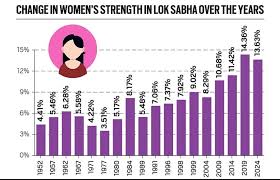
- 15 Nov 2024
In News:
India, the world's largest democracy, is at a crucial juncture where women’s active political participation is essential for holistic development and true democratic engagement. The year 2024 demands increased involvement of women in politics to address issues of gender inequality and ensure comprehensive policy representation.
Current Status of Women’s Political Representation in India
Women in Parliament
- Initial Representation: In 1952, women accounted for only 4.41% of the Lok Sabha. This gradually rose to around 14.36% in the 2019 elections.
- Recent Trends: In the 2024 elections, women made up approximately 16% of the Lok Sabha, with 74 women MPs, 43 of whom are first-time representatives.
Women in State Legislatures
- Representation in state legislative assemblies remains low, with the highest percentages in Chhattisgarh (14.4%), West Bengal (13.7%), and Jharkhand (12.4%).
Global Comparison
- According to the Inter-Parliamentary Union (IPU), India ranks lower than many countries in terms of female representation in parliament, with global averages standing at 26.1%. India lags behind several African and South Asian nations.
Importance of Women’s Political Empowerment
- Enhancing Governance and Accountability: Political empowerment of women ensures better representation of gender-sensitive issues, promoting accountability in governance.
- Breaking Patriarchal Norms: Increasing women’s participation helps challenge the patriarchal structure that dominates Indian politics and promotes inclusive governance.
- Policy and Social Impact: Women in politics are more likely to advocate for policies that address issues like health, education, and gender equality, leading to improved societal welfare.
- Economic Benefits: Studies suggest that women in political leadership tend to improve economic outcomes for their constituencies by prioritizing social infrastructure.
Barriers to Women’s Political Participation
- Gender Gaps in Political Ambition: Women are less likely to pursue political careers due to gender conditioning, family pressures, and stereotypes about leadership abilities.
- Patriarchal Culture: A deeply ingrained patriarchal society hampers women’s political involvement, with male-dominated party structures and social norms limiting opportunities.
- High Election Costs: The financial burden of running for office often discourages women from contesting elections due to unequal access to resources.
- Male Gatekeepers in Politics: Political parties often show a preference for male candidates, especially for higher-profile positions, hindering the rise of women leaders.
- Criminalisation and Corruption in Politics: Growing criminalisation in politics and lack of political education further alienates women from the political process.
Key Legislative and Constitutional Measures for Women’s Political Empowerment
Legislative Measures
- Nari Shakti VandanAdhiniyam (2023): Provides 33% reservation for women in the Lok Sabha and state assemblies.
- 73rd and 74th Amendments (1992): Introduced 33% reservation for women in Panchayats and Municipalities.
- Gender-Neutral Rules: Lok Sabha adopted gender-neutral rules in 2014, promoting inclusivity in legislative procedures.
Constitutional Provisions
- Article 14 and 15: Ensure equality and non-discrimination, fundamental to women’s political participation.
- Article 243D: Mandates 33% reservation for women in Panchayats.
International Commitments
- CEDAW (1979): Advocates for women’s participation in political and public life.
- Beijing Platform (1995) and SDGs (2015): Call for removing barriers to women’s participation in politics.
Measures for Promoting Women’s Political Participation
- Quotas and Reservations: Ensuring mandatory quotas for women candidates in party tickets and legislative bodies can help bridge gender gaps.
- Capacity Building and Training: Offering political training programs for women can empower them with the skills and resources necessary for effective political participation.
- Strengthening Grassroots Movements: Support for Self-Help Groups (SHGs) and Panchayati Raj Institutions (PRIs) can build leadership among women at the local level.
- Supportive Political Ecosystem: Political parties should be encouraged to nominate women for higher office positions, such as the Rajya Sabha or state legislative councils.
- Raising Public Awareness: Public awareness campaigns focusing on the importance of women in politics can shift societal attitudes and garner wider public support.
Conclusion:
As India moves forward, the active participation of women in politics is not merely a matter of equity but an essential building block for a vibrant, inclusive, and effective democracy. Through structural reforms, public awareness, and the promotion of female leadership, India can strengthen its democratic framework, ensuring that all citizens, regardless of gender, have an equal stake in shaping the nation's future.
Inter-State Council
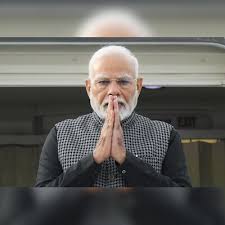
- 14 Nov 2024
In News:
The Inter-State Council, which works for Centre-State and interstate coordination and cooperation, has been reconstituted with Prime Minister Narendra Modi as its chairman, all chief ministers and nine Union ministers as members and 13 Union ministers as permanent invitees.
About the Inter-State Council (ISC)
Formation of ISC
- Establishment: Created on May 28, 1990, through a Presidential Order following the recommendations of the Sarkaria Commission (1988).
- Headquarters: New Delhi.
- Meetings: The Council has convened 12 times since its formation.
Constitutional Provisions
- Not a Constitutional Body: It was established under Article 263 of the Constitution, making it a non-permanent advisory body.
- Role: Article 263 empowers the President to create the ISC for improving coordination between States and the Union.
Powers and Functions
- Investigate and Discuss: The ISC discusses subjects of common interest between the Centre and States.
- Recommendations: It recommends measures for better coordination and addressing inter-state issues.
- Deliberations: The ISC also deliberates on matters referred by the Chairman.
Composition of the ISC
- Chairperson: Prime Minister of India.
- Members:
- Chief Ministers of all States and Union Territories with legislative assemblies.
- Lieutenant Governors/Administrators of Union Territories without assemblies.
- 6 Union Cabinet Ministers nominated by the Prime Minister.
- Governors of States under President’s rule.
- Standing Committee:
- Chaired by the Union Home Minister.
- Includes 5 Union Cabinet Ministers and 9 Chief Ministers.
Functions and Role of the ISC
Role in Centre-State Cooperation
- Facilitates better coordination and cooperation between the Centre and States.
- Addressing disputes related to Centre-State and Inter-State relations.
Additional Functions
- Make Recommendations: Based on discussions, it recommends actions to align policies.
- Promote Social Legitimacy: Through consensus-driven decisions, ISC strengthens policy acceptance among states.
Key Bodies Related to Centre-State Relations
Zonal Councils
- Purpose: Promote interstate cooperation and coordination.
- Constitution: There are five Zonal Councils (Northern, Central, Eastern, Western, Southern) and a separate North Eastern Council established in 1972.
River Water Dispute Tribunals
- Function: Set up under the Inter-State River Water Disputes Act, 1956, these tribunals resolve disputes over river water sharing between States.
GST Council
- Constitution: Established under Article 279A, the GST Council is responsible for decisions related to GST implementation, ensuring cooperative federalism.
Chief Justice of India
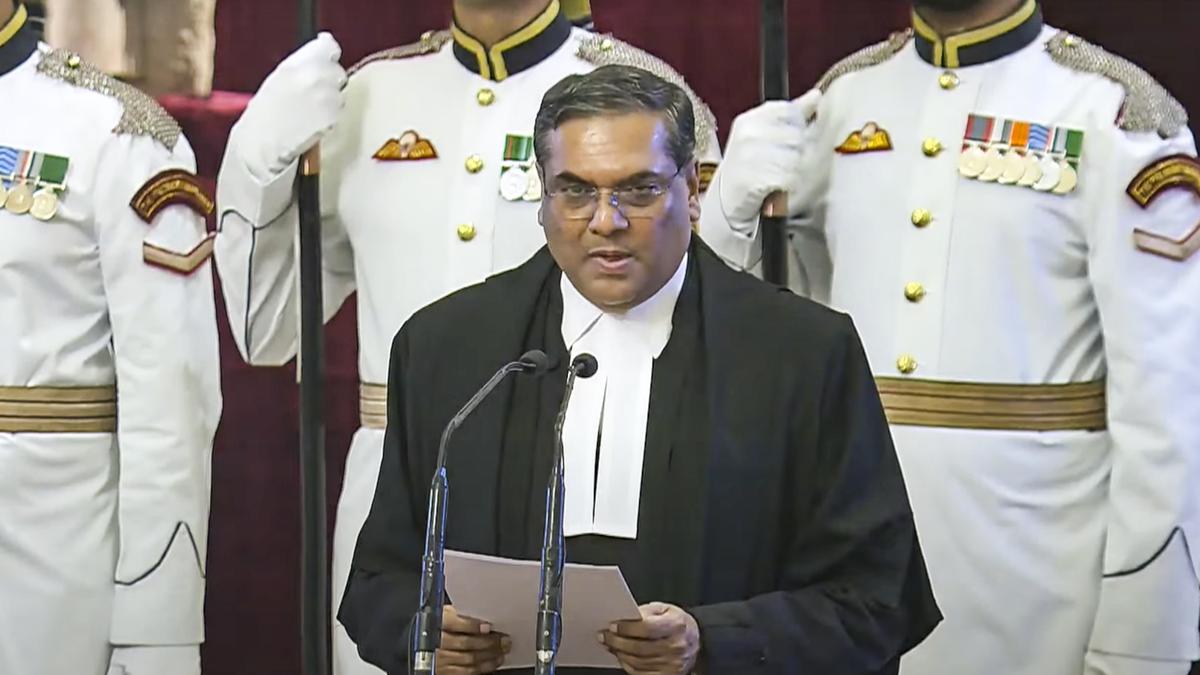
- 13 Nov 2024
In News:
On November 11, 2024, Justice Sanjiv Khanna was sworn in as the 51st Chief Justice of India (CJI) at the Rashtrapati Bhavan, New Delhi, marking a significant milestone in the Indian judiciary. He succeeds Justice D.Y. Chandrachud, who retired on November 10, 2024. Justice Khanna's term as CJI will last until May 13, 2025.
Background of Justice Sanjiv Khanna
Early Life and Legal Career
- Legal Practice: Justice Khanna began his legal career in 1983 after completing his law degree from Delhi University. He practiced in the District Courts of Delhi and handled cases in constitutional law, taxation, arbitration, and environmental law.
- Career in Delhi High Court: He was appointed as an Additional Judge to the Delhi High Court in 2005 and became a Permanent Judge in 2006.
- Appointment to the Supreme Court: Justice Khanna was appointed as a Supreme Court Judge in January 2019, without having served as a Chief Justice of a State High Court, and superseding 32 senior High Court judges.
Key Judicial Rulings of Justice Sanjiv Khanna
Major Constitutional Bench Decisions
- Abrogation of Article 370: Justice Khanna was part of the Bench that upheld the abrogation of Article 370 of the Constitution, which revoked Jammu and Kashmir’s special status.
- Electoral Bonds Scheme: He also contributed to the ruling that struck down the 2018 Electoral Bonds scheme, raising questions about the transparency of political funding.
Support for EVMs
- Justice Khanna defended the use of Electronic Voting Machines (EVMs) and rejected calls to revert to paper ballots, emphasizing the need for technological progress and institutional trust.
Personal Liberty and Bail Decisions
- Arvind Kejriwal’s Interim Bail: Justice Khanna granted interim bail to Delhi Chief Minister Arvind Kejriwal in the liquor policy case, underscoring personal liberty as a fundamental right.
- Judicial Review of Bail Conditions: He also initiated discussions on setting standards for bail conditions in cases involving significant political figures.
Role of the Chief Justice of India (CJI)
Appointment Process
- Article 124(2): A Supreme Court judge is appointed by the President of India, with the senior-most judge of the Supreme Court traditionally becoming the CJI.
- Qualifications: The CJI must be a citizen of India and have served as a judge in a High Court for at least five years or as an advocate in a High Court for ten years.
Powers and Responsibilities
- Master of the Roster: The CJI is the "Master of the Roster," responsible for assigning cases to specific benches and determining the court's schedule.
- Collegium System: The CJI, along with four senior judges, forms the Collegium that recommends judicial appointments for the Supreme Court and High Courts.
- Ad-Hoc Appointments: The CJI can also appoint ad-hoc judges to the Supreme Court under Article 127 of the Constitution.
Removal
- A CJI can only be removed through a process initiated in Parliament, requiring a special majority in both Houses of Parliament.
Appointment of CJI in Other Countries
United States
- The Chief Justice of the United States serves for life, with tenure continuing until impeachment or voluntary retirement.
United Kingdom
- The Lord Chief Justice in the UK is appointed by a special panel from the Appeal Court or the Supreme Court. The tenure is life, but mandatory retirement is set at 75 years of age.
Conclusion
Justice Sanjiv Khanna’s appointment as the 51st Chief Justice of India represents a significant moment in the country's judicial history. With his extensive experience and legal acumen, he faces numerous challenges, from dealing with case pendency to navigating sensitive constitutional issues. His tenure will likely shape the future trajectory of the Indian judiciary, with a focus on upholding justice and personal liberty while addressing the evolving needs of a democratic society.
Uttar Pradesh Board of Madarsa Education Act, 2004
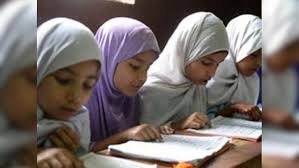
- 09 Nov 2024
In News:
The Supreme Court recently upheld the constitutional validity of the Uttar Pradesh Board of Madarsa Education Act, 2004 (also called the Madarsa Act), while striking down certain provisions related to the granting of higher education degrees. The Court overturned the Allahabad High Court's previous decision, which had deemed the Act unconstitutional on the grounds that it violated the principle of secularism.
What is the Madarsa Act?
The Madarsa Act provides a legal framework for regulating madrasas (Islamic educational institutions) in Uttar Pradesh. The Act:
- Establishes the Uttar Pradesh Board of Madarsa Education, which oversees the curriculum and examinations for madrasas.
- Ensures that madrasas follow the National Council of Educational Research and Training (NCERT) curriculum for mainstream secular education alongside religious instruction.
- Empowers the state government to create rules for regulating madrasa education.
Allahabad High Court's Ruling
In March 2024, the Allahabad High Court declared the Madarsa Act unconstitutional, citing:
- Violation of secularism: The Court argued that the Act's emphasis on compulsory Islamic education, with modern subjects being optional, discriminated on religious grounds, violating the secular nature of the Constitution.
- Right to Education: The Court also claimed that the Act denied quality education under Article 21A, which guarantees free and compulsory education to children.
- Higher Education Degrees: The Act's provisions allowing the granting of Fazil and Kamil degrees were found to conflict with the University Grants Commission Act, 1956, which regulates higher education.
Supreme Court's Ruling
The Supreme Court overturned the Allahabad High Court's decision on several grounds:
- Basic Structure Doctrine: The Court clarified that the basic structure doctrine, which applies to constitutional amendments, does not apply to ordinary legislation like the Madarsa Act. Therefore, a law cannot be struck down simply for violating secularism unless explicitly prohibited by the Constitution.
- State's Authority to Regulate Education: The Court held that the state has the right to regulate education in minority institutions, as long as the regulation is reasonable and rational. It emphasized that the Madarsa Act does not deprive these institutions of their minority character.
- Right to Education for Minority Institutions: Referring to a 2014 decision, the Court ruled that the Right to Education Act (RTE) does not apply to minority institutions, as it would undermine their right to impart religious education and self-administer.
Striking Down Higher Education Provisions
While upholding most of the Act, the Supreme Court struck down the provisions related to higher education degrees (Fazil and Kamil). It ruled that:
- Section 9 of the Act, which allowed the Board to grant these degrees, is in conflict with the University Grants Commission Act, which only permits degrees to be awarded by universities recognized by the UGC.
Implications of the Ruling
- Regulation of Madrasa Education: The ruling affirms the state's authority to ensure quality education in madrasas, balancing religious instruction with secular subjects.
- Protection of Minority Rights: By upholding the Madarsa Act, the Court protected the rights of religious minorities to run educational institutions while ensuring they meet educational standards.
- Focus on Inclusivity: The judgment emphasizes the integration of madrasas within the broader educational framework, ensuring that madrasa students receive quality education.
In conclusion, the Supreme Court's decision supports the regulation of madrasa education while safeguarding the rights of minority institutions, except in areas related to the granting of higher education degrees, which remain under the jurisdiction of the UGC Act.
Supreme Court Ruling on Property and Redistribution
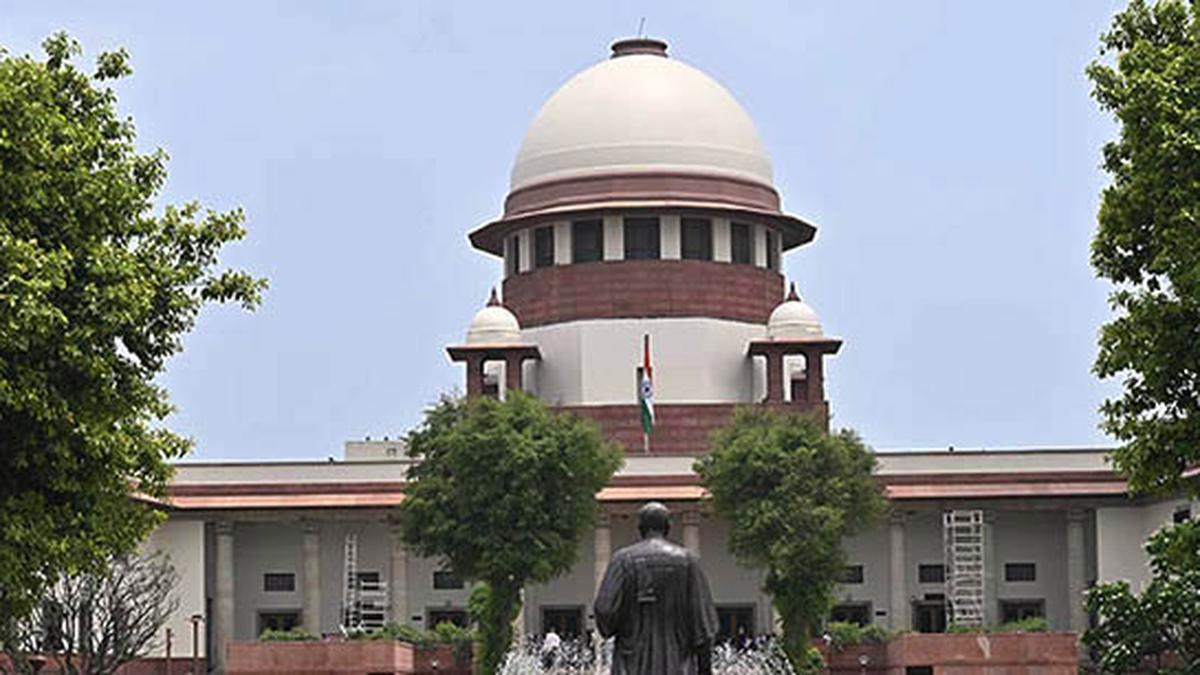
- 06 Nov 2024
In News:
A crucial 9-judge bench of the Supreme Court ruled on the scope of government powers over private property, with a focus on Articles 39(b) and 31C of the Constitution.
Key Issues Considered by the Court
- Article 31C: Whether it still protects laws giving effect to Articles 39(b) and 39(c), even after amendments and past rulings.
- Interpretation of Article 39(b): The meaning of “material resources of the community” and the limits on government acquisition.
Legal and Constitutional Background
- Article 31C and 39(b) Overview:
- Article 31C was introduced by the 25th Amendment (1971) to protect laws related to the distribution of resources for the common good.
- Article 39(b) (Directive Principle of State Policy) mandates that resources should be distributed to best serve the common good.
- Historical Context:
- Kesavananda Bharati Case (1973): The Supreme Court affirmed the Constitution’s "basic structure," impacting the interpretation of amendments to Article 31C.
- Minerva Mills Case (1980): The Court struck down further amendments to Article 31C.
The Supreme Court’s Ruling in 2024
- Restoration of the Post-Kesavananda Position: The Supreme Court clarified that the interpretation of Article 31C is restricted, and the protection under this article applies only to laws implementing Articles 39(b) and 39(c), not all directive principles.
- On Redistributing Private Property:
- The majority opinion held that not all privately owned properties can be considered “material resources of the community” for redistribution under Article 39(b).
- The Court dismissed the broad interpretation of "material resources" used in previous rulings (e.g., Justice Krishna Iyer’s dissent in the Ranganatha Reddy case, 1977).
Dissenting and Concurring Opinions
- Justice Nagarathna’s Concurring Opinion:
- Acknowledged that certain privately owned resources could be considered material resources (e.g., forests, wetlands), but emphasized a balanced approach.
- Distinguished between personal belongings and resources that could be considered part of the public domain.
- Justice Dhulia’s Dissent:
- Argued for a broader interpretation, in line with past rulings, that private resources could be considered material resources if they served the public good.
Interpretation of Article 39(b)
- Scope of the Article:
- Article 39(b) directs the State to ensure that the ownership of material resources is distributed to serve the common good.
- It imposes a positive obligation on the State to create policies for resource distribution, but does not authorize arbitrary expropriation of private property.
- Private Property as Material Resources:
- The Court clarified that private property cannot be deemed a material resource of the community unless specific conditions are met (e.g., scarcity, public welfare implications).
- The judgment emphasized a case-by-case analysis rather than a blanket approach.
Criteria for Assessing Material Resources
The Court provided criteria to evaluate whether a private property could be considered a “material resource of the community”:
- Nature of the Resource: What is the resource’s fundamental characteristic?
- Impact on Public Welfare: Does the resource impact the common good or public interest?
- Ownership Type: Is the resource privately owned or under state control?
- Scarcity: Is the resource scarce or in finite supply?
- Concentration of Ownership: Are the resources concentrated in the hands of a few private entities?
Implications of the Ruling
- Protection of Private Property Rights: The ruling strengthens protections against arbitrary State acquisition of private property, reinforcing the constitutional safeguards for property rights.
- Economic Implications: The Court noted that India’s economic trajectory has shifted from socialism to a market-based economy, and that resource redistribution policies should reflect this change.
- Policy Shifts: The ruling marks a shift away from a socialist economic ideology towards one that emphasizes private property rights, while still considering public welfare in resource distribution.
Conclusion
- Balancing Individual Rights with Public Welfare: The ruling underscores the importance of balancing private property rights with the need for equitable resource distribution to serve the common good.
- Implications for Constitutional Interpretation: This judgment marks a pivotal moment in the interpretation of property rights in India, affirming the evolving nature of the Constitution in response to dynamic economic and social policies.
Does Data Justify Subdivision of Quotas?
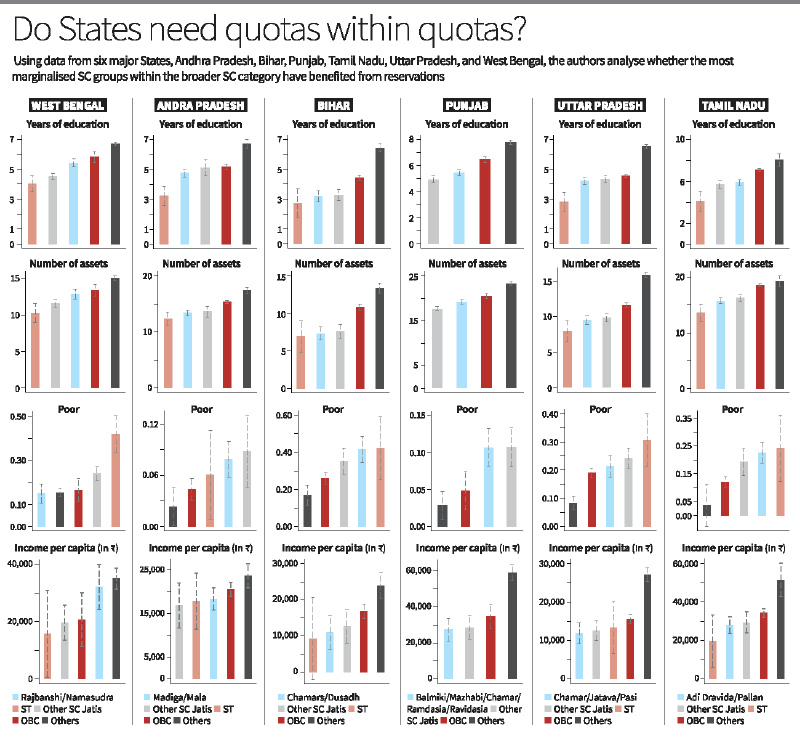
- 05 Nov 2024
Context
India's reservation system has long been a tool for uplifting historically marginalized communities, especially Scheduled Castes (SCs) and Scheduled Tribes (STs). However, recent debates have questioned whether the system serves its intended purpose, particularly in light of disparities within the SC groups. The need for a ‘quota-within-quota’ system has been raised to ensure more equitable outcomes across different SC subgroups.
The Reservation System: Origins and Objectives
Purpose of Reservations
- Historical Background: Established to correct centuries of social and economic exclusion faced by SCs and STs.
- Mechanism for Equality: Aimed to create opportunities in education, government employment, and public offices for historically marginalized groups.
- Dr. B.R. Ambedkar’s Vision: Reservations were designed to transition from formal legal equality to substantive equality.
Challenges of the Current System
- Despite progress, certain SC subgroups seem to have benefited more than others.
- A Supreme Court ruling has led to calls for a 'quota-within-quota' to address intra-SC disparities.
Exploring Intra-SC Disparities: The Data Analysis
States Examined
- Key States: Andhra Pradesh, Bihar, Punjab, Tamil Nadu, Uttar Pradesh, and West Bengal.
- Objective: To investigate whether some SC subgroups have disproportionately benefited from the reservation system.
Findings Across States
- Andhra Pradesh: Minor differences between SC groups (Malas vs. Madigas), with both groups showing similar socio-economic progress.
- Tamil Nadu: No significant disparity between Adi Dravida and Pallan groups, both benefiting equally from reservations.
- Punjab: Subdivision of quotas since 1975 has led to better outcomes for disadvantaged groups like Mazhabi Sikhs and Balmikis.
- Bihar: The Mahadalit category, introduced in 2007, failed due to political intervention, undermining the policy’s goals.
Key Insights
- In some states (e.g., Punjab), a subdivision of quotas has been effective in addressing intra-SC disparities.
- In other states, like Andhra Pradesh and Tamil Nadu, the benefits of reservations are already distributed fairly evenly among SC subgroups.
- The gap between SCs and upper-caste groups remains much larger than the gap within SCs.
The Issue of Access to Reservations
Caste Certificates as a Proxy for Access
- Data from IHDS: Less than 50% of SC households in Uttar Pradesh and Bihar report having caste certificates, limiting access to reserved positions.
- Better Access in Some States: Over 60-70% of SC households in Tamil Nadu and Andhra Pradesh have caste certificates.
Core Issue: Ensuring Access
- Access Challenges: Without proper access to caste certificates, many SCs are excluded from the benefits of the reservation system.
- Priority Area: Ensuring that all eligible SCs have access to reservations is a critical concern before considering subdivision.
The 'Quota-within-Quota' Proposal
Concept and Potential Benefits
- Targeted Assistance: A ‘quota-within-quota’ would provide more focused help to the most disadvantaged SC subgroups, as seen in Punjab.
- Political Considerations: However, the political motivations behind quota subdivision, as seen in Bihar, can undermine the policy’s effectiveness.
Criticism and Limitations
- Uneven Need for Subdivision: In many states, the need for further subdivision is minimal, as the benefits of reservations are already fairly distributed.
- Political Exploitation: The policy risks becoming a political tool rather than a genuine means of achieving social justice, as political influence often determines who is categorized as the most disadvantaged.
Addressing Inequality Beyond Reservations
Income-Based Criteria and Monetary Benefits
- Current Approach: Monetary benefits (e.g., scholarships, lower fees) are a part of the affirmative action system.
- Income Criterion: Should be used to determine eligibility for monetary benefits to focus assistance on those most in need.
The "Creamy Layer" Debate
- Supreme Court’s Suggestion: The introduction of a "creamy layer" exclusion for SCs, akin to the Other Backward Classes (OBCs) model, remains contentious and requires stronger evidence.
Challenges of Economic Mobility
- Stigma and Discrimination: Economic progress does not necessarily eliminate social stigma or discrimination, especially for historically marginalized groups.
- Long-Term Goal: While reservations have contributed to creating a Dalit middle class, addressing stigma will require a gradual process.
The Need for Updated Data and Evidence-Based Policy
Data Deficiency
- Lack of Comprehensive Data: The absence of updated, reliable data on caste-based disparities limits the effectiveness of any policy reform.
- National Census Delay: India’s national Census, the only source of comprehensive data on caste, has been delayed, exacerbating the problem.
Evidence-Driven Reform
- Importance of Data: Robust and up-to-date data is essential to assess the true impact of reservations and to make informed policy decisions.
Conclusion: Reforming the Reservation System
- Reservations’ Success: The reservation system has played a significant role in improving the socio-economic status of SCs and STs.
- Intra-SC Disparities: While some subgroups benefit more than others, the broader gap between SCs and upper-caste groups remains far more pronounced.
- Focus on Access: The primary focus should be on improving access to reservations, ensuring that all eligible SCs benefit fully from affirmative action.
Tackling Judicial Pendency and Adjournments in India
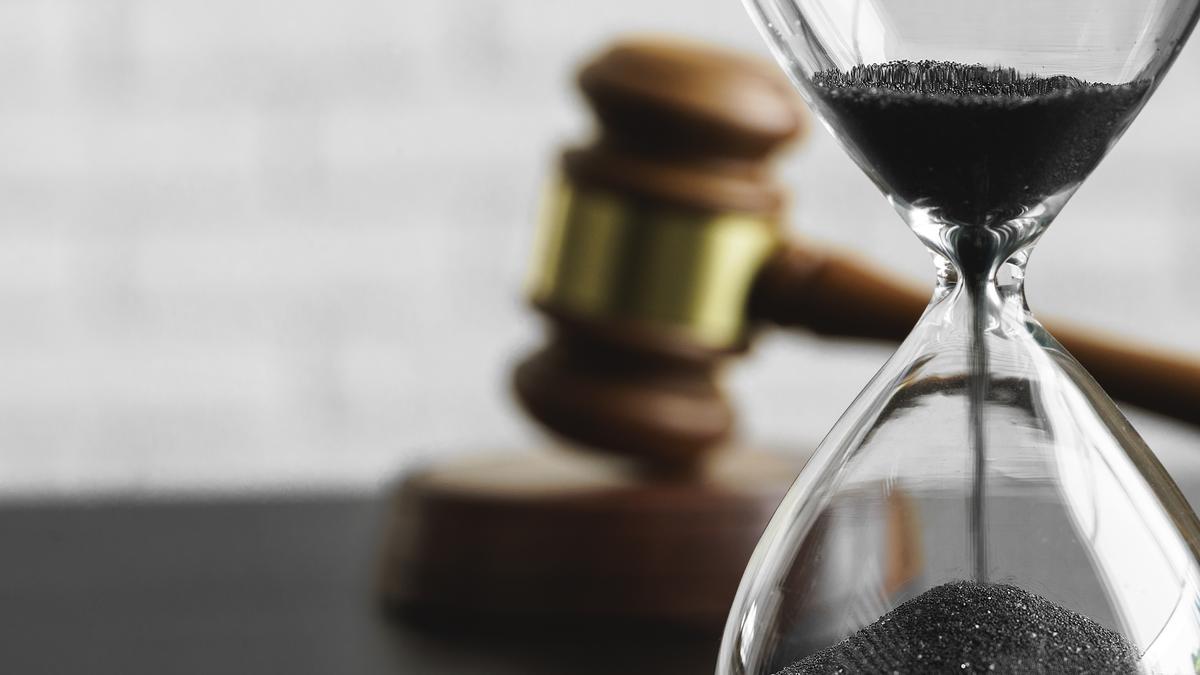
- 01 Nov 2024
In News:
The issue of judicial delays and adjournments has become a significant concern in India’s judicial system. President Droupadi Murmu, while addressing the National Conference of District Judiciary in September 2024, emphasized the need to eliminate the culture of adjournments. These delays particularly affect the poor and rural populations, who often suffer in silence, avoiding court due to the fear of protracted justice.
Background of the Indian Judicial System
India’s judicial system has evolved under various legal frameworks, including the Code of Civil Procedure (CPC) and the Criminal Procedure Code (CrPC). Initially, civil courts dealt with a wide range of cases, while criminal courts focused on criminal offenses. The establishment of the Supreme Court and High Courts further strengthened India’s judicial architecture to handle constitutional and appellate cases.
To address the growing caseload, the Indian government introduced the tribunal system through the 42nd Constitutional Amendment Act, 1976, aiming to manage specialized disputes. However, despite these reforms, case pendency continues to rise.
Key Issues Contributing to Judicial Delay and Pendency
- Judge-to-Population Ratio - India currently has 21 judges per million people, far below the recommended 50 judges per million as per the 120th Law Commission Report. The shortage of judges directly contributes to the growing backlog of cases.
- Vacant Judicial Positions - As of late 2024, 30% of High Court positions remain vacant, exacerbating the case pendency crisis. The delay in filling these vacancies has resulted in overburdened judges, further delaying case resolution.
- Legislative Overload - The enactment of laws without conducting prior judicial impact assessments leads to an increase in the number of cases, often without considering the capacity of the judiciary to handle them. This lack of foresight results in excessive pressure on courts.
- Overworked Judiciary - Judges often face a heavy workload, with some handling multiple responsibilities across different courts. This overburdening leads to mental fatigue, increased errors, and prolonged decision-making.
- Witness Delays - The absence of witnesses and delays in their appearance in court can significantly prolong the judicial process, contributing to case pendency.
Government Initiatives and Challenges
-
- National Judicial Infrastructure Plan (NJIP): The NJIP aims to modernize judicial infrastructure, improving court functioning and case processing. However, its full implementation across the country remains a work in progress.
- E-Courts Project: The E-Courts project aims to digitize the judicial process, including e-filing and virtual hearings. This initiative has shown promise in reducing procedural delays but still requires wider application.
- Tribunal System: While tribunals were introduced to reduce the burden on regular courts, their success has been limited, and the abolition of six tribunals in 2021 has added additional pressure on High Courts.
- Case Timeline Legislation: Laws prescribing time-bound adjudication for sensitive cases have been enacted, but due to inefficiencies in the system, deadlines are rarely met.
Recommendations for Reform
-
- Enhance Judicial Strength
-
- Increase the Judge-to-Population Ratio: The government should prioritize the appointment of judges to meet the 50 judges per milliontargets.
- Fill Vacant Positions: High Courts should fill vacant positions six months in advance to ensure a steady supply of judges.
-
- Judicial Impact Assessment
- Implement Judicial Impact Assessments: The Justice M. Jagannadha Rao Committee’s recommendation for judicial impact assessments should be made mandatory. Every new Bill should assess the likely increase in judicial workload, the required number of judges, and the necessary infrastructure.
- Promote Alternative Dispute Resolution (ADR)
-
- Encourage ADR Mechanisms: Mediation and arbitration should be promoted as cost-effective alternatives to court proceedings. Public awareness campaigns and legal reforms can encourage the use of ADR.
-
- Strengthen Infrastructure and Technology
- Modernize Court Infrastructure: The judiciary should invest in technology such as e-filing and virtual hearings to reduce administrative burdens and expedite case resolutions.
- Streamline Administrative Processes: Technology can also help automate administrative tasks, thereby reducing the workload on judges and speeding up case processing.
- Limit Adjournments
- Stricter Norms for Adjournments: Judicial bodies should enforce stricter norms for granting adjournments, ensuring that they are not used excessively.
- Oversight Mechanism: An independent body can monitor the frequency of adjournments and take corrective action if needed.
Conclusion
Addressing the issue of judicial adjournments and case pendency requires a comprehensive approach involving structural reforms, better resource allocation, and the adoption of technology. Strengthening the judiciary’s infrastructure, increasing judicial appointments, and promoting alternative dispute resolution are vital steps toward ensuring quicker, fairer justice. The collaborative efforts of the judiciary, government, and society at large are essential to ensuring that India’s judicial system can meet the demands of justice in a timely and efficient manner.
Analysis of Election Expenditure in India
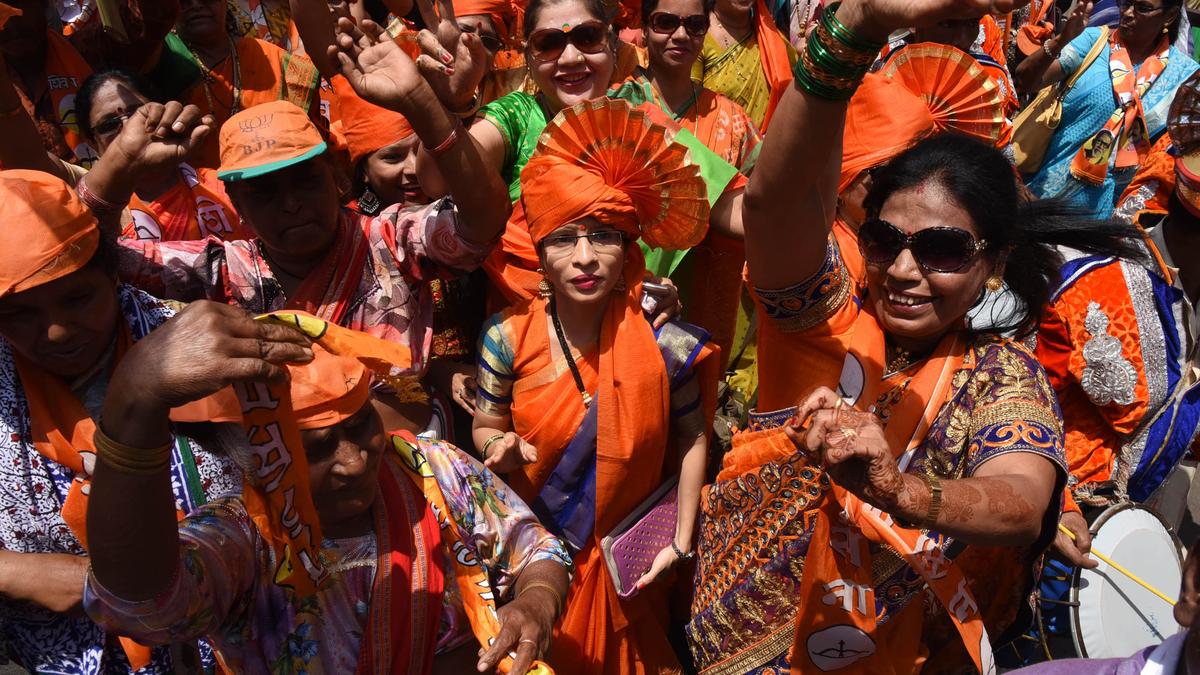
- 30 Oct 2024
Overview
Election expenditure has become a pressing issue in modern democracies, with growing concerns about its implications for political integrity and fair competition. In India, the skyrocketing costs of elections—both in terms of candidate spending and political party expenditure—pose significant challenges to electoral transparency, governance, and equity.
Current State of Election Expenditure in India
The total expenditure on elections in India has risen dramatically in recent years. For the 2024 Lok Sabha elections, the total expenditure by various political parties is estimated to reach around ?1,00,000 crores. This is a significant jump from the ?9,000 crores spent in the 1998 general elections. The expenditure per vote has also risen substantially, from ?25,000 in 1951 to ?1,400 in 2024.
The election expenditure limits for individual candidates are capped by the Election Commission of India (ECI):
- ?95 lakh for larger states (Lok Sabha constituencies)
- ?75 lakh for smaller states
- ?40 lakh for legislative assembly elections in larger states
- ?28 lakh for smaller states
However, these caps apply only to individual candidates. Political parties are not subject to any expenditure limits, allowing them to spend unlimited amounts during campaigns. This discrepancy leads to considerable financial disparities between well-funded national parties and regional or smaller parties, undermining the principle of equitable competition.
Global Comparisons: Election Financing and Spending Limits
Election financing varies widely across democracies, with countries like the United States and the United Kingdom adopting specific limits and regulations to curb excessive spending.
- United States: U.S. elections are financed largely through contributions from individuals, corporations, and Political Action Committees (PACs). Notably, Super PACs—which can raise and spend unlimited funds—have exacerbated concerns over money's influence on political outcomes. The 2024 U.S. presidential election is expected to cost around $16 billion (approximately ?1,36,000 crores).
- United Kingdom: Political parties are subject to strict expenditure limits. Each political party is allowed to spend £54,010 for each constituency, with an overall cap of £35 million for contests across all constituencies. This is aimed at ensuring that elections are not swayed by wealth alone and that smaller parties have a fighting chance.
Despite these measures, the United States still faces issues with unlimited corporate donations and the growing influence of wealthy donors, highlighting the complexities in curbing money in politics.
Challenges Posed by Rising Election Expenditure
The rising costs of elections present multiple challenges in India, exacerbating corruption, unfair competition, and political inequality.
a) Political Corruption and Influence
Large election expenditures are often funded by corporate donations and other private entities, creating a nexus between politicians and donors. This can lead to a quid-pro-quo relationship, where politicians may prioritize the interests of their donors over public welfare. This undermines public trust in the political system.
b) Unaccounted Money and Illegal Practices
A significant portion of the election expenditure is unaccounted for. The Centre for Media Studies (CMS) reports that in the 2019 general elections, around 25% of the total expenditure was spent on illegally distributing cash to voters. This practice, coupled with the absence of strict regulations on third-party campaigners, enables the use of black money in elections, further skewing the electoral process.
c) Uneven Playing Field
The absence of limits on party spending creates a situation where well-funded national parties have an inherent advantage over smaller regional parties and independent candidates. This financial inequality reduces the ability of under-funded candidates to compete based on ideas and merit rather than financial muscle. Furthermore, the growing influence of digital advertising and media campaigns has further widened this gap, with larger parties investing heavily in digital platforms like Google and Facebook, marginalizing those without the resources to do so.
Proposed Reforms to Address Election Expenditure Issues
To address these challenges, several reforms have been suggested by experts, committees, and the Election Commission. These reforms aim to curb excessive spending, ensure fairness, and increase accountability in the electoral process.
a) Capping Expenditure by Political Parties
There is a pressing need to introduce expenditure ceilings for political parties, in addition to those imposed on individual candidates. According to the 2016 Electoral Reforms Report by the Election Commission, political party spending should be capped at a level not exceeding the total expenditure limit for all candidates fielded by the party. This would level the playing field, ensuring that the influence of money is curtailed during elections.
b) State Funding of Elections
Recommendations for state funding of elections have been made by the Indrajit Gupta Committee (1998) and the Law Commission Report (1999). The state could partially finance the campaigns of recognized political parties, ensuring that candidates are not solely reliant on private donations. However, this reform faces challenges in terms of feasibility and implementation, especially regarding the mechanism for allocation of funds.
c) Regulation of Third-Party Campaigners
India should follow the example of countries like Australia, where third-party campaigners are formally registered and required to disclose their funding sources. This would help in tracking illegal contributions and ensure that election spending is transparent.
d) Ban on Government Advertisements During Election Periods
The use of government advertisements by the ruling party during the run-up to elections often leads to an uneven playing field. A ban on government-funded ads during the six months before elections would ensure that the ruling party does not gain an unfair advantage through public resources.
e) Strengthening Electoral Oversight
An independent electoral oversight body could be established to oversee campaign financing and ensure that all parties comply with spending limits. This would include measures to audit party finances, track donations, and verify spending claims, making it more difficult for parties to evade rules or use black money.
Conclusion: The Need for Comprehensive Electoral Reforms
The rising costs of elections in India present significant challenges to the democratic process. While expenditure limits for candidates exist, the lack of restrictions on party spending creates financial inequalities that undermine fair competition. The increasing role of corporate donations, illegal cash distribution, and unregulated third-party spending further complicates the situation.
To ensure fair elections, it is crucial that India adopts reforms such as capping political party expenditures, state funding of elections, and stronger oversight mechanisms. These steps, coupled with bipartisan political will, could help create a more equitable, transparent, and accountable electoral system, fostering greater public trust in the democratic process.
By addressing these challenges head-on, India can work toward an election system that encourages political participation based on ideas and policies rather than financial clout, ultimately strengthening the foundations of democracy.
Strengthening the Anti-Defection Law to Uphold India's Democratic Integrity

- 28 Oct 2024
In News:
The Anti-Defection Law, introduced in 1985 through the 52nd Constitutional Amendment, aims to curb political instability caused by legislators switching parties for personal or financial reasons. While the law has helped maintain political stability, it faces several challenges, including delays in decision-making, potential bias in adjudication, and lack of transparency in party directives. These issues undermine its effectiveness in safeguarding democratic integrity.
Historical Context and Genesis
The issue of political defections, exemplified by the term "Aaya Ram, Gaya Ram," traces its origins to the 1960s when frequent party-switching destabilized governments. To address this, the Anti-Defection Law was enacted in 1985, disqualifying members who voluntarily gave up their party membership or defied party whips on critical votes. Initially effective in reducing defections, the law has faced challenges due to emerging loopholes, particularly regarding party "splits" and "mergers."
Gaps and Loopholes in the Current Law
One major loophole was the provision allowing a party split if one-third of its members defected, exploited until the 91st Amendment in 2003, which increased the threshold for mergers to two-thirds. Despite this change, defections continue, particularly through "mergers." Another issue is the role of the Speaker in deciding disqualification petitions. Given that the Speaker is often affiliated with the ruling party, their decisions are sometimes seen as biased, leading to delays in resolving defection cases. Additionally, the lack of transparency in issuing party whips has caused disputes regarding their legitimacy.
Proposed Reforms
To address these challenges, two key amendments are proposed:
- Fixed Time Frame for Decision-Making: A clear time frame—such as four weeks—should be established for the Speaker or an adjudicatory body to resolve defection cases. If no decision is made within this period, defecting members should automatically be disqualified.
- Transparency in Whips: Political parties should be required to make the issuance of whips public, either through newspaper publications or electronic communication, to ensure that members are fully informed of party positions on critical votes.
Ethical Concerns and Impact on Democracy
While the Anti-Defection Law was introduced to promote political stability, it has inadvertently stifled internal dissent within parties. Legislators are often forced to follow party lines, even when their personal convictions or constituents' interests conflict. This limits their freedom of expression and undermines the representative nature of democracy. Furthermore, the law has not fully curbed unethical practices such as "poaching" of members or defectors seeking personal gain, which continue to destabilize governments and erode public trust in the system.
The Way Forward: Political Will and Comprehensive Reforms
To strengthen the Anti-Defection Law, reforms must balance party discipline with individual freedoms. Key steps include:
- Independent Adjudication: Establishing an independent tribunal to handle defection cases can reduce political bias and expedite the decision-making process.
- Clear Timeframes: Setting a fixed timeline for resolving defection cases will prevent delays and ensure accountability.
- Transparency in Whip Issuance: Ensuring public notice of party whips will reduce ambiguity and disputes.
- Promoting Ethical Conduct: Strengthening ethical guidelines to discourage "poaching" and protect the integrity of the electoral process.
The right to die with dignity
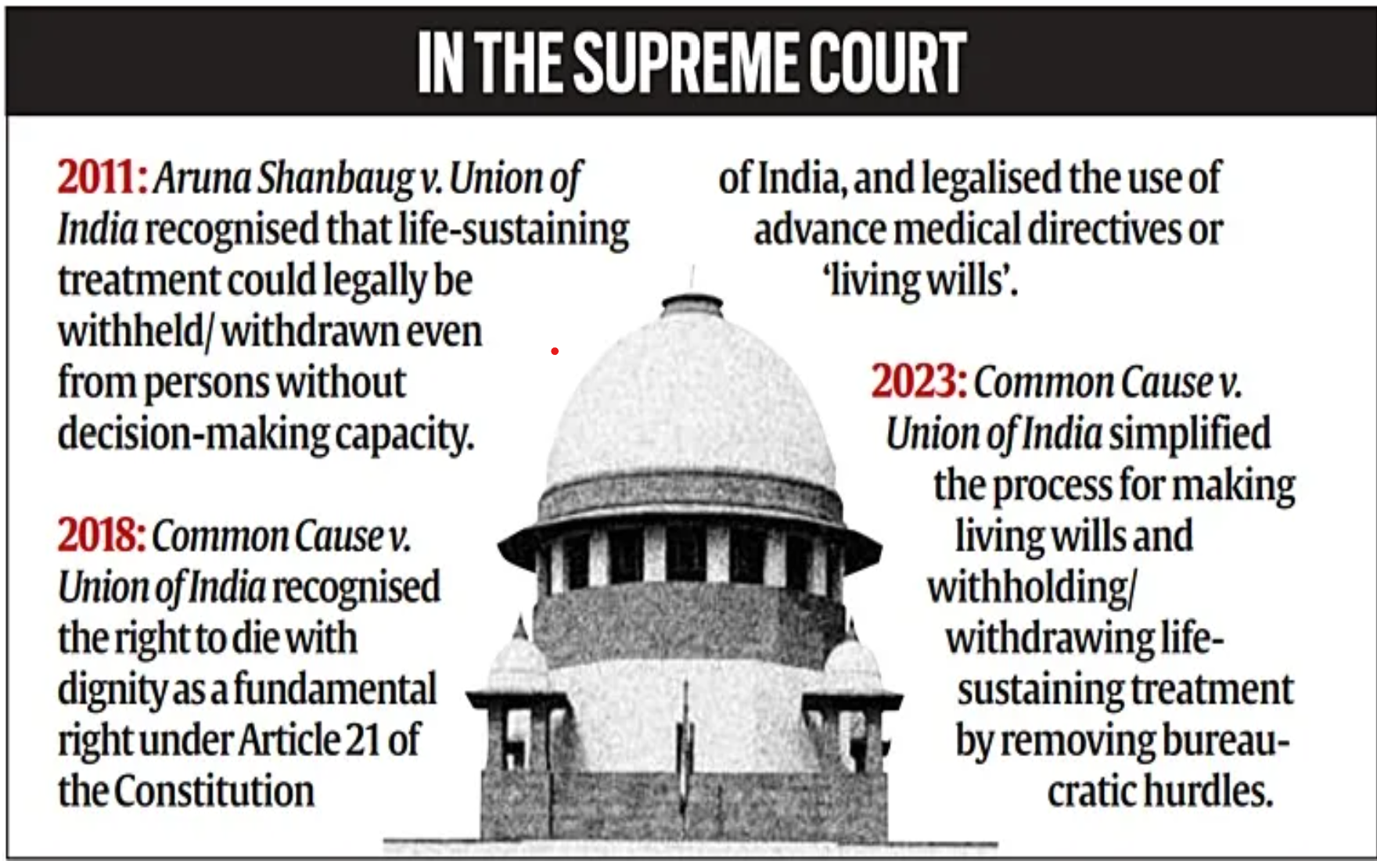
- 26 Oct 2024
In News:
- The Ministry of Health and Family Welfare's draft guidelines (October 2024) aim to implement the Supreme Court's 2018 and 2023 orders on the right to die with dignity.
Legal Context: Supreme Court Rulings and Constitutional Rights
- Right to Refuse Treatment:
- Common Law & Article 21: The right to refuse medical treatment is grounded in common law and is now recognized as a fundamental right under Article 21 of the Indian Constitution, following the 2018 Supreme Court judgment in Common Cause v. Union of India.
- Supreme Court Rulings: The court's rulings in 2018 and 2023 affirmed that individuals have the constitutional right to refuse life-sustaining treatment and to die with dignity.
Withholding and Withdrawing Life-Sustaining Treatment
- Definition and Meaning:
- What Is Life-Sustaining Treatment? Life-sustaining treatments, such as ventilators and feeding tubes, artificially replace vital bodily functions to sustain life.
- Withholding/Withdrawal: This refers to discontinuing these treatments when they no longer improve the patient's condition or merely prolong suffering.
- When Is It Done?
- End-of-Life Care: Withholding or withdrawing treatment is considered when further medical intervention is futile and would only artificially prolong the dying process.
- Focus on Comfort: After withdrawing life-sustaining measures, the focus shifts to palliative care to alleviate pain and suffering.
Understanding Euthanasia and Misconceptions
- What Is Euthanasia?
- Definition: Euthanasia refers to the intentional ending of a terminally ill patient’s life by medical professionals to relieve suffering.
- Passive Euthanasia Misconception: In India, the term "passive euthanasia" is often mistakenly used to describe withholding or withdrawing life-sustaining treatment, but this does not involve the active killing of the patient.
- Legal Framework: The Indian Council of Medical Research (ICMR) clarified in 2018 that "passive euthanasia" is not a legally accepted practice in the country.
The Role of Doctors: Ethical Dilemmas and Shared Decision-Making
- Is Withdrawing Treatment "Giving Up" on the Patient?
- Not Abandonment: Withdrawing life-sustaining treatment is not about abandoning the patient but recognizing when further interventions would cause unnecessary suffering.
- Palliative Care: The patient’s comfort and dignity are prioritized through palliative care, which focuses on pain management and emotional support for both the patient and family.
- Doctors' Ethical Responsibility:
- Shared Decision-Making: The process encourages a collaborative approach between doctors and the patient’s family or surrogate decision-makers. This joint decision-making ensures that the wishes of the patient are respected and relieves the doctor from bearing sole responsibility for life-and-death decisions.
Living Wills and Advance Medical Directives
- What Is a Living Will?
- Definition: A living will is a legal document where a person outlines their medical preferences in the event they lose decision-making capacity.
- Eligibility and Process: Individuals aged 18 or older, who are capable of making decisions, can draft a living will, naming at least two trusted surrogate decision-makers.
- Legal Requirements: The document must be signed in the presence of an executor, two witnesses, and notarized to be legally binding.
- 2023 Supreme Court Guidelines: The Court simplified the procedure for making living wills to ensure that the right to die with dignity is upheld.
Medical Procedure for Withholding or Withdrawing Treatment
- Supreme Court Guidelines
- The Supreme Court laid out a clear procedure for withholding or withdrawing life-sustaining treatment, emphasizing patient autonomy, expert assessments, and family consent.
- Primary and Secondary Medical Boards:
- Primary Medical Board: The treating hospital sets up a Primary Medical Board, consisting of the treating doctor and two subject-matter experts, to assess the patient's condition and determine if life-sustaining treatment is appropriate.
- Secondary Medical Board: A Secondary Medical Board, comprising independent experts, reviews the Primary Board's decision for added oversight.
- Consent from Family/Surrogate Decision-Makers:
- The patient’s wishes, as outlined in an advance directive or by a surrogate, must be respected, and their consent is essential for proceeding with treatment withdrawal.
- Judicial Oversight:
- Once the decision to withdraw treatment is made, the hospital is required to notify the local judicial magistrate, ensuring transparency and accountability.
Conclusion: Legal and Ethical Clarity in End-of-Life Care
- Shared Decision-Making: The process ensures that medical teams, families, and surrogate decision-makers collaborate, preventing any medical professional from facing moral or legal dilemmas alone.
- Protection of Autonomy: These frameworks and guidelines uphold patient autonomy, offering a legal and ethical pathway for terminally ill patients to exercise their right to die with dignity.
Section 6A of the Citizenship Act, 1955
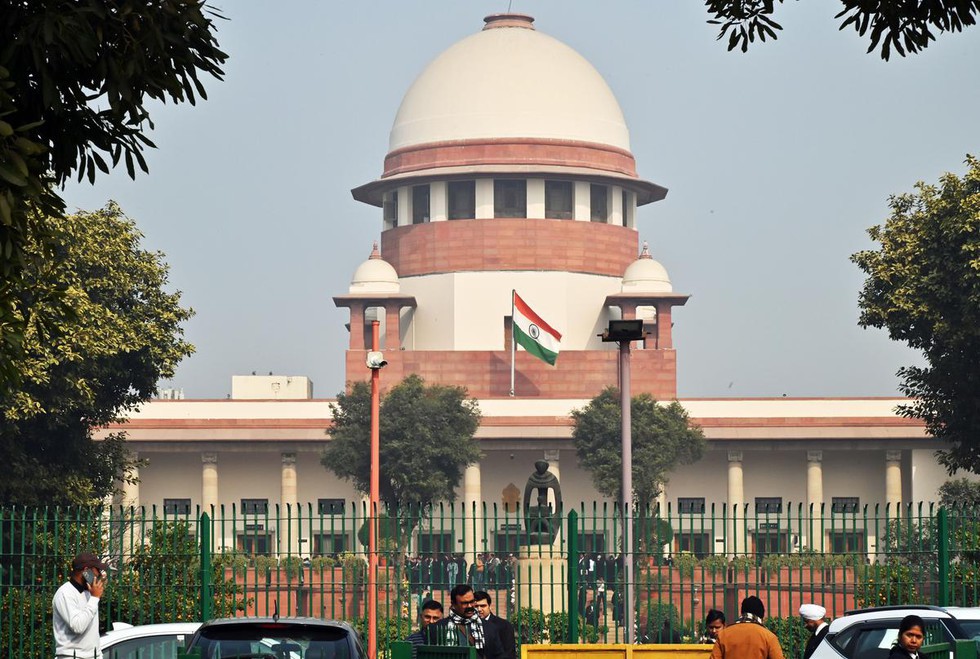
- 19 Oct 2024
In News:
A Constitution Bench of the Supreme Court, in a majority judgment of 4:1 ratio, upheld the constitutionality of Section 6A of the Citizenship Act, 1955, which permits immigrants from Bangladesh residing in Assam to secure Indian citizenship, as a valid piece of legislation aligned to the Preambular value of fraternity.
Background:
- Section 6A of the Citizenship Act, 1955, deals with the citizenship status of immigrants from Bangladesh who entered Assam before March 25, 1971.
- Introduced as part of the 1985 Assam Accord, it provides a special provision for Assam due to the unique demographic challenges posed by large-scale migration from Bangladesh.
Key Aspects of the Supreme Court Ruling
Majority Opinion
- Constitutional Validity: The Court reaffirmed that Section 6A does not violate Articles 6 and 7 of the Constitution. These Articles set the cut-off for granting citizenship to migrants from East and West Pakistan. Section 6A, operating from a later date, is distinct and does not interfere with these earlier constitutional provisions.
- Justification of Cut-off Date: The March 25, 1971 cut-off date is upheld as reasonable. This date coincides with Operation Searchlight, launched by the Pakistani Army to suppress the Bengali nationalist movement. Migrants arriving before this date are considered part of India's post-partition demographic landscape.
- Fraternity and Equal Treatment: The Court emphasized that the principle of fraternity, as enshrined in the Preamble, cannot be selectively applied. Immigrants who arrived before March 25, 1971, are entitled to citizenship, while those arriving after are considered illegal immigrants. The ruling aims to balance the humanitarian aspect of migration with the state's right to protect its cultural and economic integrity.
- Historical Context: The judgment also invoked the Assam Accord, which was designed to address the issue of large-scale migration from Bangladesh, providing a political solution to Assam’s concerns. The Court held that the special provisions for Assam under Section 6A do not violate Article 14 (equality before the law) due to the distinct situation in Assam compared to the rest of India.
Section 6A of the Citizenship Act: Provisions and Purpose
- Section 6A was introduced under the 1985 Citizenship (Amendment) Act following the Assam Accord. It allows migrants who entered Assam before January 1, 1966, to automatically gain citizenship. For those entering between January 1, 1966, and March 25, 1971, citizenship can be granted after fulfilling specific conditions.
- Exclusion of Post-1971 Migrants: Migrants arriving in Assam after March 25, 1971, are not eligible for Indian citizenship under Section 6A and are considered illegal immigrants.
- Assam Accord Context: The Assam Accord sought to resolve the issue of illegal immigration from Bangladesh and address the political, cultural, and economic concerns of the indigenous Assamese population. It set the cut-off date of March 25, 1971, as a landmark for distinguishing between legal and illegal migrants.
Implications of the Supreme Court Judgment
Impact on Immigrant Recognition
- Continued Citizenship: By upholding Section 6A, the Court grants continued citizenship rights to immigrants from Bangladesh who entered Assam before the cut-off date of March 25, 1971. This decision affirms India's commitment to protect those displaced by the Bangladesh Liberation War.
Assamese Identity Preservation
- Cultural Protection: The majority opinion dismissed concerns that the presence of immigrants would infringe upon the cultural and linguistic rights of the Assamese people. The Court emphasized that existing constitutional safeguards (e.g., Article 29(1)) are sufficient to preserve the unique identity of the Assamese community, even in the face of demographic changes.
Demographic and Economic Impact
- Tensions on Demographic Shift: Critics argue that the continued influx of migrants, though legally recognized, may strain Assam’s demographic balance, potentially threatening its cultural identity and economic resources. This could fuel local demands for stricter immigration controls and increase political mobilization around cultural preservation.
- Resource Allocation Challenges: The judgment implies that immigrants who are granted citizenship will have access to public resources, adding pressure on Assam's limited economic resources. This may necessitate the implementation of more robust policies for equitable resource distribution.
Pressure on Immigration Laws and Enforcement
- Immigration Law Enforcement: The judgment stresses the need for more effective enforcement of immigration laws, particularly regarding the detection and deportation of illegal immigrants who entered Assam post-1971. The inefficiencies in the current mechanisms for detecting such immigrants were criticized, and the Court called for judicial oversight to improve the enforcement process.
Regional and International Implications
- Bangladesh Relations: The decision, by excluding post-1971 immigrants from citizenship, may strain India-Bangladesh relations, as it could be perceived as India pushing responsibility for these migrants onto Bangladesh. This has the potential to complicate regional cooperation on issues like border management, migration control, and security.
Conclusion: Balancing Humanitarian and Political Interests
The Supreme Court’s decision to uphold Section 6A of the Citizenship Act, 1955, reflects a delicate balance between humanitarian concerns—acknowledging the plight of displaced persons—and the political necessity of protecting Assam’s cultural and demographic integrity. While the judgment provides clarity on the legal status of immigrants in Assam, it also highlights the need for efficient immigration enforcement, greater judicial oversight, and equitable resource management to address the ongoing challenges posed by migration in the region.
CONCERNS OVER JUDICIAL CONDUCT
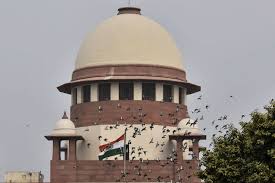
- 29 Sep 2024
Background
A recent incident involving Justice V Srishananda of the Karnataka High Court has raised serious concerns regarding judicial comments and conduct. During a hearing, Justice Srishananda referred to a locality in Bengaluru as being “in Pakistan” and made an objectionable remark against a female lawyer. Although he subsequently apologized, the Supreme Court, led by Chief Justice D Y Chandrachud, expressed serious concern, highlighting the rarity of such judicial reproach.
Constitutional Framework for Judicial Discipline
Impeachment: The Sole Recourse
Judges of constitutional courts, including the Supreme Court and High Courts, enjoy substantial protections to maintain independence from executive interference. However, this raises the question of accountability: who oversees the judiciary?
- Article 124(4): This article outlines that judges can only be removed through impeachment, which requires a political process involving both Houses of Parliament. The grounds for impeachment are limited to "proved misbehaviour" or "incapacity."
- High Standards for Impeachment: The necessity for a two-thirds majority in both Houses makes successful impeachment exceedingly rare. Historically, only five impeachment proceedings have been initiated, with only one resulting in successful impeachment (Justice Soumitra Sen).
Challenges in Addressing Judicial Misconduct
Certain actions, such as indiscipline or bias, may not meet the impeachment standard but still warrant attention. The Supreme Court faces a dilemma: how to address these issues without the option of impeachment.
Mechanisms for Judicial Accountability
Judicial Intervention
The Supreme Court can intervene through judicial action, as evidenced by past cases:
- Contempt of Court: In 2017, the Supreme Court sentenced Calcutta High Court’s Justice C S Karnan to six months’ imprisonment for contempt. This case raised concerns about one constitutional court punishing judges of another, as it set a precarious precedent.
Transfer Policy
The Supreme Court also influences High Court judges through its Collegium system:
- Collegium Recommendations: The Collegium recommends the transfer of judges, which can serve as a disciplinary tool. The case of Justice P D Dinakaran illustrates this practice. Facing allegations of corruption, he was transferred from Karnataka to Sikkim, a move criticized as merely “transferring corruption.”
Conclusion
The incident involving Justice Srishananda underscores the complexities of judicial accountability in India. While the Constitution provides for impeachment as the only formal recourse against errant judges, the high threshold for such proceedings necessitates alternative mechanisms for maintaining judicial integrity. The Supreme Court's ability to intervene and the use of transfer policies are critical components in addressing judicial misconduct, but they also raise questions about the balance between accountability and judicial independence.
How do emergency provisions impact Centre-State relations?
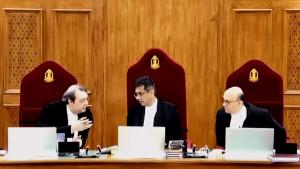
- 17 Sep 2024
In News:
The recent spate of renewed violence in Manipur has once again triggered the discussion around Centre-State relations and the use of emergency provisions by the Centre.
What is our federal set-up?
India is a federation with governments at the Centre and the States. The Seventh Schedule to the Indian Constitution distributes the power between the Union and States. Under this scheme, it is the domain of the State governments to maintain law and order in their respective States.
What are emergency provisions?
The emergency provisions are provided in Part XVIII of the Constitution. Articles 355 and 356 deal primarily with the affairs of government in a State under this part.
Article 355 imposes a duty on the Centre to protect every State from external aggression and internal disturbance. It also specifies that the Centre should ensure that every State government operate according to the Constitution.
Article 356 allows for the imposition of the President’s rule if a State’s government cannot function in accordance with constitutional provisions. While in the U.S. and Australia, federal government functions also involve protecting States, their constitutions do not contain provisions for removing State governments.
B.R. Ambedkar explained the purpose of Article 355, keeping in mind the federal character of our polity, that if the Centre is to interfere in the State’s administration under Article 356, it must be by or under some obligation which the Constitution imposes on the Centre. Hence, Article 355 was incorporated to check any arbitrary or unauthorised use of Article 356.
What have the courts ruled?
Dr. Ambedkar again in the constituent Assembly wished that Articles 355 and 356 would never be called into operation and would remain a dead letter. However, it was a travesty of the Constitutional principles and federalism that Article 356 was misused on several occasions removing elected governments that enjoyed majority in the States. Reasons varied from loss in Lok Sabha elections to deterioration of law and order in the States. It was only after the Supreme Court’s categorical judgement in the S R Bommai case (1994) that such misuse was restricted. The court held that Article 356 should be imposed only in the event of a breakdown of constitutional machinery, as distinguished from an ordinary breakdown of law and order. It also held that the imposition of the President’s rule is subject to judicial review and should not be misused for political reasons.
On the other hand, the scope of Article 355 has been widened by various Supreme Court rulings. In State of Rajasthan Vs Union of India (1977), the court had a narrow interpretation of Article 355 as justifying the employment of Article 356. However, in subsequent cases such as Naga People’s Movement of Human Rights Vs Union of India (1998), Sarbananda Sonowal Vs Union of India (2005), and H.S.Jain Vs Union of India (1997), the legal position with respect to Article 355 has shifted. The scope of actions under this article has been widened to permit all statutorily and constitutionally available actions by the Union to discharge its duties of protecting the State and ensuring that its governance is in accordance with the Constitution.
What are the suggestions?
The Sarkaria Commission on Centre-State Relations (1987), the National Commission to Review the Working of the Constitution (2002), and the Punchhi Commission on Centre-State Relations (2010) have all opined that Article 355 not only imposes a duty on the Union but also grants it the power to take necessary actions for the effective performance of that duty. Imposition of the President’s rule under Article 356 must be used as a last resort in situations of utmost gravity and urgency.
The situation in Manipur is grave. Large-scale violence against innocent civilians, women and children; looting of ammunition from police armoury; drone and missile attacks targeting civilians cannot be viewed as just an ordinary breakdown of law and order. Constitutional as well as political expediency, considering that the same party is in power at the Centre and the State, has resulted in Article 356 not being invoked. However, under Article 355, all possible instructions and actions should continue to be pursued to restore normalcy at the earliest.
Preventive Detention
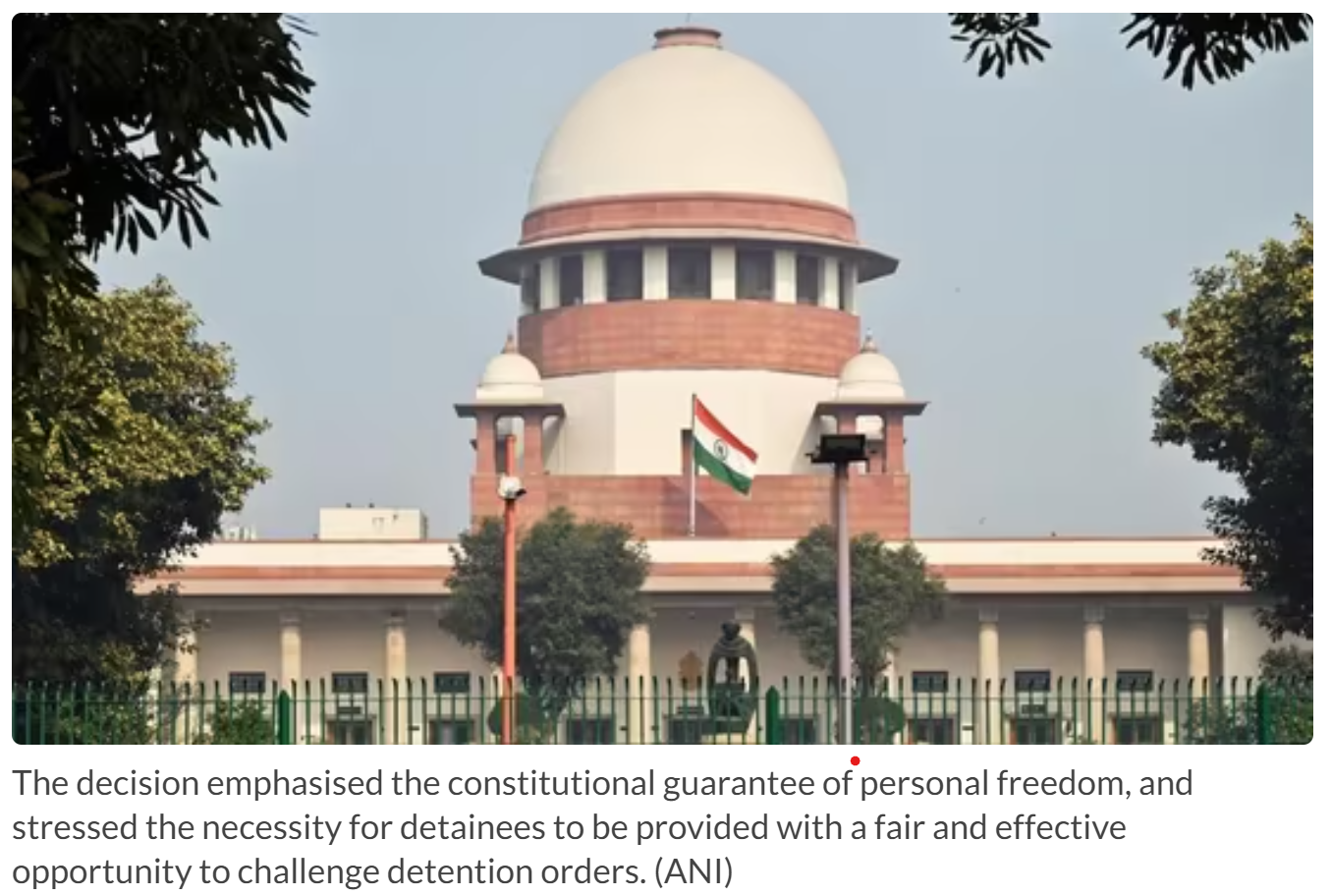
- 16 Sep 2024
In News:
The recent Supreme Court ruling in Jaseela Shaji vs. Union of India (2024) introduces new standards for preventive detention in India, aiming to strengthen safeguards for individual liberty.
Key Aspects of the Ruling
- Strict Standards for Preventive Detention:
- The Court emphasized the need for authorities to furnish all essential materials relied upon in detention orders to the detainee.
- This includes providing documents in a language the detainee understands to ensure fair representation.
- Constitutional Guarantees:
- The ruling reinforced the constitutional right to personal liberty and the need for a fair process in preventive detention cases, as guaranteed under Article 22(5) of the Constitution.
- The Court asserted that individual freedom is paramount and cannot be curtailed without adherence to due process.
- Importance of Timely Representation:
- The Court criticized the significant delays in handling and deciding the detainee's representation.
- Authorities are mandated to act with “utmost expedition” in processing and deciding representations related to personal liberty.
- Case-Specific Findings:
- In the case of Appisseril Kochu Mohammed Shaji, the Court found that critical documents and witness statements were not provided to him, nor were translations of important documents made available in his native language, Malayalam.
- The delay in handling Shaji’s representation was deemed “callous and casual,” impacting his right to challenge his detention effectively.
- Criticism of Procedural Lapses:
- The Court overturned the Kerala High Court's decision, finding that procedural lapses, including the failure to provide key documents and delays in processing representations, violated Shaji’s constitutional rights.
- The Supreme Court highlighted the necessity for detaining authorities to avoid arbitrary actions and ensure the detainee’s rights are respected throughout the process.
Implications
This ruling has significant implications for preventive detention practices:
- Enhanced Accountability: Authorities must now ensure meticulous compliance with procedural requirements to avoid legal challenges.
- Stronger Protections for Detainees: The ruling reinforces the need for transparency and fairness in the detention process, potentially impacting future cases involving preventive detention.
- Administrative Efficiency: The Court’s focus on prompt processing of representations underscores the need for administrative efficiency and accountability in handling such matters.
What is Preventive detention?
- Preventive detention refers to the detention of an individual without a trial or conviction by a court. The primary objective of preventive detention is not to punish an individual for a past offence but to prevent them from committing an offence in the future.
- Preventive detention laws are enacted by governments to ensure public safety and maintain social order.
- The detention of an individual under preventive detention cannot exceed three months, as specified by the Indian Constitution's Article 22. However, if an advisory board reports sufficient cause for extended detention, the detention can be extended. The advisory board is an independent body that reviews the case and provides its opinion on whether the detention is necessary.
- Article 22 of the Indian Constitution grants protection to individuals who are arrested or detained. It has two parts—
- The first part deals with cases of ordinary law, which includes situations where an individual is detained as part of a criminal investigation.
- The second part deals with cases of preventive detention law, which pertains to the detention of individuals without a trial or conviction.
Two types of detentions
There are two types of detentions: preventive detention and punitive detention.
- Preventive detention is when someone is held in police custody based on a suspicion that they might commit a crime. The police can make arrests without a warrant in certain cases.
- Punitive detention is when someone is detained as punishment for committing a criminal offence. This type of detention occurs after the offence has been committed or attempted
Preventive Detention Laws in India
- Maintenance of Internal Security Act (MISA), 1971 (repealed in 1978)
- COFEPOSA, 1974
- National Security Act (NSA), 1980
- Terrorist and Disruptive Activities (Prevention) Act (TADA), 1985 (repealed in 1995)
- Prevention of Terrorism Act (POTA), 2002 (repealed in 2004)
- Unlawful Activities (Prevention) Act (UAPA), 1967 (amended several times)
Important Judicial Cases
- Shibban Lal v. State of Uttar Pradesh (1954): Established limited judicial intervention in preventive detention.
- Khudiram v. State of West Bengal (1975): Reaffirmed that the judiciary cannot assess the validity of detention grounds.
- Nand Lal Bajaj v. State of Punjab (1981): Criticized preventive detention laws as inconsistent with parliamentary principles.
- Rekha v. State of Tamil Nadu (2011): Urged limiting preventive detention to avoid violating fundamental rights.
- Mariappan v. District Collector (2014): Stressed preventive detention should prevent harm, not punish.
- Prem Narayan v. Union of India (2019): Highlighted that preventive detention should not be imposed casually.
- Abhayraj Gupta v. Superintendent, Central Jail (2021): Stressed that preventive detention should not duplicate existing detention.
A Message on the Model Code of Conduct for Leaders – From Mahabharata and Beyond
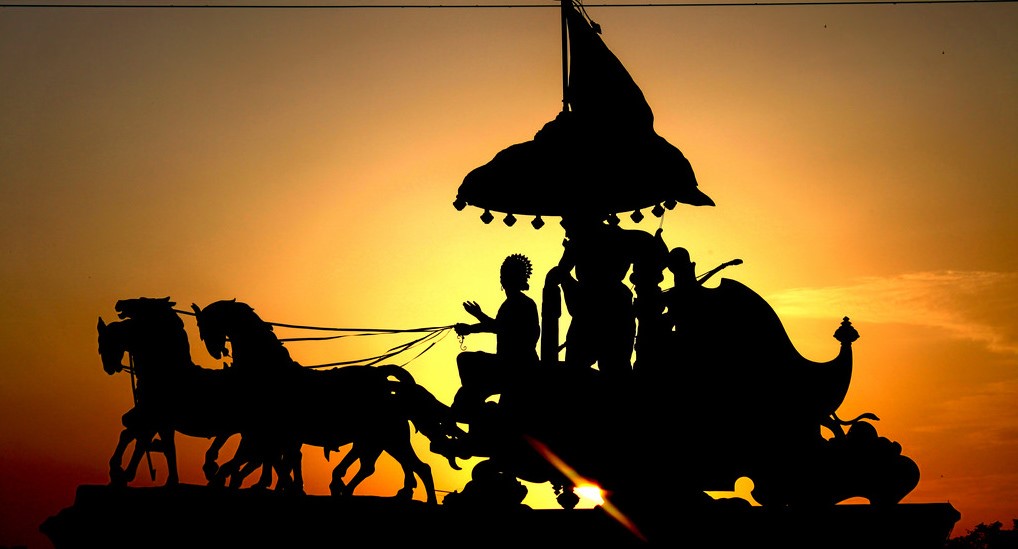
- 24 May 2024
Why is it in the News?
In a democracy, while elections are imperative, it's equally crucial for both the populace and our leaders to retain their moral integrity, as a loss of ethical grounding could result in repercussions that extend far beyond the periodic act of political selection.
Context:
- Satyameva Jayate ("Truth alone triumphs") from the Mundaka Upanishad was adopted as the national motto on January 26, 1950, the day India became a Republic.
- A day earlier, the country's Election Commission was formed with the primary responsibility of enabling citizens to exercise their democratic right to choose a government.
- The Election Commission is expected to provide a level playing field so that candidates, political parties, and their campaigners do not unduly influence voters through excessive use of money, force, or dishonesty.
About The Model Code of Conduct (MCC):
- The Election Commission of India introduced the Model Code of Conduct with the hope that it would encourage self-control among political stakeholders.
- The 2019 Manual emphasized that those seeking public office should behave in a way worthy of being emulated by others.
- The Commission considers the Code an important contribution by political parties to democracy.
- It expects parties to exhibit model behaviour in their actions and rhetoric.
- However, reality often deviates from this expectation. Political discourse sometimes degrades into coarse and ignoble exchanges.
- This has led to debates on whether it should be called a moral code rather than just a model code.
The Complexity of Truth from a Philosophical Perspective:
- Francis Bacon's Essay of Truth commences with Pilate's profound questioning, "What is truth?" - a query that resonates through the ages, its answer shrouded in layers of complexity.
- This intricate nature finds symbolic representation in the Ashokan pillar's trio of visible lions, embodying the three dimensions of truth: my viewpoint, your perspective, and an objective third-person narrative.
- Yet, there exists a fourth, unseen dimension - that of absolute truth, often perceived as knowable only to a higher power.
- Amidst this philosophical labyrinth, the Election Commission of India (ECI) navigates the realm of human imperfection, striving to enforce the Model Code of Conduct (MCC) – a framework designed to curb dishonest practices during the electoral process.
- However, expecting individuals to adhere to this model solely for the duration of elections, if they have not upheld such principles in their daily lives, could be considered a naive endeavor.
The Intersection of Morality and Law in the Electoral Process:
- Foundations of the Model Code of Conduct (MCC):
- At the core of the Model Code of Conduct lies a fundamental interplay between legal requirements and moral expectations.
- Morality governs individual behaviour based on notions of right and wrong, often rooted in cultural, religious, or personal beliefs.
- Law, conversely, comprises rules established by a governing authority to regulate conduct and ensure order and justice within society.
- Philosophical perspectives offer valuable insights into this dynamic. Immanuel Kant's philosophy distinguishes between morality and law, viewing moral actions as those driven by a sense of duty, while societal rules govern legal actions.
- Utilitarianism, advocated by thinkers like Jeremy Bentham and John Stuart Mill, evaluates actions based on their consequences and their contribution to the overall well-being of society.
- In the context of the Model Code of Conduct, this perspective suggests that political behaviour should be assessed not only against legal standards but also by its broader impact on societal harmony and democratic health.
- Legal Framework and Enforcement:
- The legal framework encompassing the Model Code of Conduct includes specific provisions in the Indian Penal Code and the Representation of the People Act, 1951.
- These laws define actions that constitute corrupt practices and electoral offences, providing a legal basis for enforcing the Code.
- However, the intersection of morality and law within this framework presents unique challenges.
- In legal terms, "mens rea" refers to the intention or knowledge of wrongdoing, and establishing mens rea is crucial for proving guilt in many cases.
- The Model Code of Conduct implicitly addresses mens rea by prohibiting actions intended to manipulate or deceive voters, such as false promises or appeals to communal sentiments.
- Sections 123(3) and 123(3A) of the Representation of the People Act classify appeals to caste or communal feelings as corrupt practices, punishable under the law.
- Similarly, Section 125 prohibits promoting enmity between different groups in connection with elections.
- These legal provisions aim to curb divisive tactics and uphold the ethical conduct envisioned by the Model Code of Conduct.
- However, enforcement requires clear evidence linking the actions to the intent of influencing electoral outcomes.
Ethical Reflection in the Electoral Process & Lesson from Mahabharata:
- Upholding Integrity: The imperative for ethical reflection in the electoral process stems from the need to uphold the integrity of democracy itself.
- The conduct of elections must align with the core values of truth and fairness that underpin the democratic ethos.
- Ethical Lesson from Mahabharata: The story of Yudhishthira in the Mahabharata, who lost his moral high ground despite technically telling the truth, underscores the importance of ethics over mere adherence to rules.
- Ethics in elections transcends simply following the law; it involves adhering to higher standards of honesty, integrity, and fairness.
- Moral Soundness over Legal Compliance: Ethical reflection ensures that political actions and decisions are not just legally compliant but also morally sound.
- This is particularly crucial in a democracy, where the legitimacy of the government is derived from the consent of the governed, and this consent must be obtained through fair means.
- Safeguarding Democratic Norms: When ethical standards are compromised, democratic norms such as transparency, accountability, and fairness are weakened.
- This erosion can lead to a governance crisis where the authority of elected officials is questioned, undermining the very foundation upon which democracy rests.
Conclusion
“Satyameva Jayate” is not just India’s motto however it encapsulates a guiding principle that should permeate the conduct of individuals and institutions alike. The Election Commission of India's efforts to enforce the Model Code of Conduct reflect an ongoing struggle to strike a delicate balance between legal enforcement and moral persuasion. For a truly democratic society to thrive, this equilibrium must be continually sought and maintained. The pursuit of political power must never be allowed to erode the foundational value of truth upon which the democratic edifice rests. By upholding the principle of Satyameva Jayate, not just in rhetoric but in action, the integrity of the electoral process and the sanctity of democratic norms can be safeguarded, ensuring that the will of the people remains the cornerstone of governance.
SC Verdict on Newsclick Highlights the Vitality of Adhering to Due Process Beyond Formalities
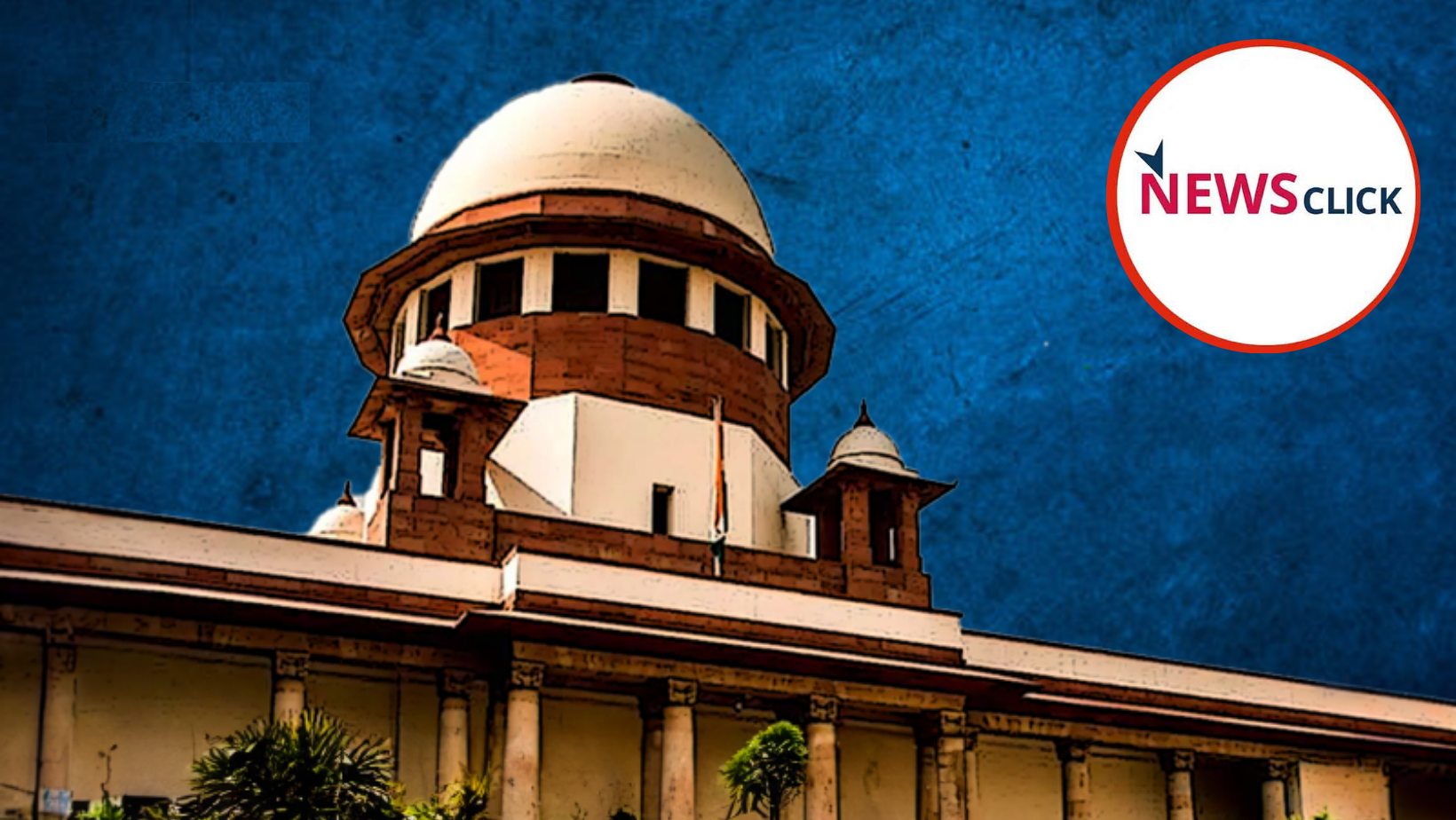
- 17 May 2024
Why is it in the News?
The Supreme Court recently ordered the release of NewsClick Editor Prabir Purkayastha after hearing his plea, challenging the arrest by Delhi Police in an Unlawful Activities Prevention Act (UAPA) case.
Context:
- The recent ruling by the Supreme Court of India reaffirms its dedication to due process, dispelling assertions of subservience to the executive branch.
- Through a landmark judgment, the Court underscored the indispensable role of due process, especially concerning the arrest and detention of Prabir Purkayastha, founder-editor of Newsclick.
- This verdict emphasizes the crucial disparity between reasons for arrest and the grounds for arrest, emphasizing that the latter must be tailored to the individual and formally communicated in writing to safeguard personal liberty.
Why did the Supreme Court Invalidate Purkayastha’s Arrest?
- The court invalidated the arrest due to the absence of provided grounds, citing a precedent set in the Pankaj Bansal case (2023).
- This landmark ruling emphasized the constitutional right, under Article 22(1), to be informed about the grounds of arrest in writing, deeming any infringement of this right as vitiating the arrest and remand process.
- Furthermore, the verdict underscored the fundamental and statutory right of an arrested person to receive a written copy of the grounds of arrest without exception.
- The court criticized the clandestine manner in which the procedure was conducted, noting that the accused was deprived of the opportunity to defend himself and avail legal representation.
- Additionally, the judgment clarified that an FIR serves to initiate criminal proceedings and is not exhaustive in detailing grounds of arrest.
- The court emphasized that the grounds of arrest must convey specific, personal facts to the accused, distinct from general reasons for arrest.
What is the Due Process of Law?
- Due process of law is a foundational legal principle that ensures the fair and just application of laws while protecting individual rights.
- The concept requires the state to adhere to established legal rules and principles in every case, ensuring that all legal rights owed to a person are respected.
- It serves as a safeguard against the arbitrary exercise of government power.
Significance:
- Fairness and Reasonableness: Due process emphasizes fairness, reasonableness, justness, and non-arbitrariness in legal proceedings.
- Invalidation of Inequality: Any procedural inequality in the law can be rendered invalid under due process.
- Legislative Oversight: Courts consider legislative intent while evaluating statutes in light of due process.
- Protection of Individual Rights: Due process emphasizes the importance of individual rights and grants courts the authority to nullify biased laws.
- Adherence to Basic Legal Procedures: Laws must follow a fundamental process to receive state assent.
Historical Background:
- First mentioned in a statute by British King Edward III in the 14th century.
- The Fifth Amendment of the US Constitution (1791) introduced due process in a constitutional framework.
- In India, due process was invoked by freedom fighters against unjust colonial laws.
- The Constituent Assembly considered including due process in India's Constitution but ultimately adopted a "procedure established by law" instead.
Evolution through Case Laws:
- The Supreme Court's interpretation of due process evolved over time.
- Initial judgments, such as A K Gopalan (1950) and ADM Jabalpur (1976), limited due process by focusing on the narrow meaning of "procedure established by law."
- The Bank Nationalisation case (1970) extended due process to property rights.
- The landmark Maneka Gandhi case (1978) established due process as an integral part of the right to life and personal liberty, requiring laws to be reasonable, just, fair, and non-arbitrary.
Concerns Regarding the Unlawful Activities (Prevention) Act (UAPA) 1967 and Due Process of Law:
The UAPA 1967 raises concerns regarding due process of law due to several provisions that deviate from established criminal law principles. These include:
- Extended Remand and Custody Periods: UAPA allows for 30-day remand orders instead of the usual 15 days and extends the maximum period of judicial custody before filing a chargesheet from 90 to 180 days.
- In the 2023 Pramod Singla case, the Supreme Court highlighted the potential for abuse in preventive detention laws and emphasized the need for strict procedural adherence.
- Controversial Bail Provisions: Section 43D(5) of the Act makes obtaining bail extremely difficult for suspects if the court believes there are reasonable grounds to presume the charges are true.
- The accused must prove the case is false without inviting the court to evaluate evidence, which human rights defenders argue is draconian and undermines due process.
- Expanded Scope Over Time: The Act was amended in 2004 and 2013 to broaden its coverage, including the declaration of unlawful associations, punishment for terrorist acts, and activities threatening the country's security.
- This expanded scope, along with an increased ban on organizations from two to five years, raises concerns about potential misuse and erosion of due process protections.
- Pendency of Cases: According to the National Crime Records Bureau (NCRB), over 12,000 people were imprisoned under such laws in 2021, with 76% being undertrials in 2022.
- Only 18% of UAPA cases result in conviction, and there is an alarming 89% pendency rate for UAPA cases in courts.
- This raises questions about the effectiveness and fairness of the Act in ensuring due process.
Achieving a Balance Between State Security and Due Process of Law:
Ensuring national security while preserving due process of law requires a nuanced approach that respects individual rights and maintains checks on state power. The following strategies can help achieve this balance:
- Clear Legal Framework: Establish precise laws that define the limits and procedures for state actions in the name of security.
- This framework should ensure accountability and prevent misuse of authority.
- A parliamentary committee can oversee and recommend changes to security legislation.
- Strengthened Judicial Oversight: Enhance judicial mechanisms to review and check arbitrary actions by state authorities, including scrutinizing the legality of detentions and other security measures.
- A judicial review committee can assess cases under laws like the UAPA.
- Independent Monitoring Bodies: Create independent bodies to monitor the implementation of security laws and investigate abuses.
- These entities should hold state actors accountable, with organizations like the National Commission for Minorities and NHRC playing crucial roles.
- Human Rights Training: Train law enforcement and security personnel on human rights standards, emphasizing the importance of protecting individual liberties while maintaining security.
- Develop training programs in collaboration with institutions such as the National Police Academy.
- Public Participation: Encourage public engagement in security policy discussions through platforms like MyGov.
- This fosters transparency and acceptance of policies that balance security and rights.
- International Cooperation: Collaborate with international organizations like UNESCO and press freedom groups to promote best practices, upholding press freedom and ensuring a safe environment for journalists and media workers, as outlined in the UN Plan of Action on the Safety of Journalists.
Conclusion
As India continues to evolve, it is crucial to ensure that stringent laws, such as the UAPA, do not overshadow the fundamental rights of its citizens. Achieving a balance between state security and individual liberties is vital not only for the protection of personal freedoms but also as a testament to the strength and integrity of India's democratic society. By fostering a legal and constitutional ethos that values this equilibrium, India can pave the way for continued progress, safeguarding the well-being of its people and the future of its democracy.
Balancing Fundamental Rights (FR) and the Directive Principles of State Policy (DPSP)
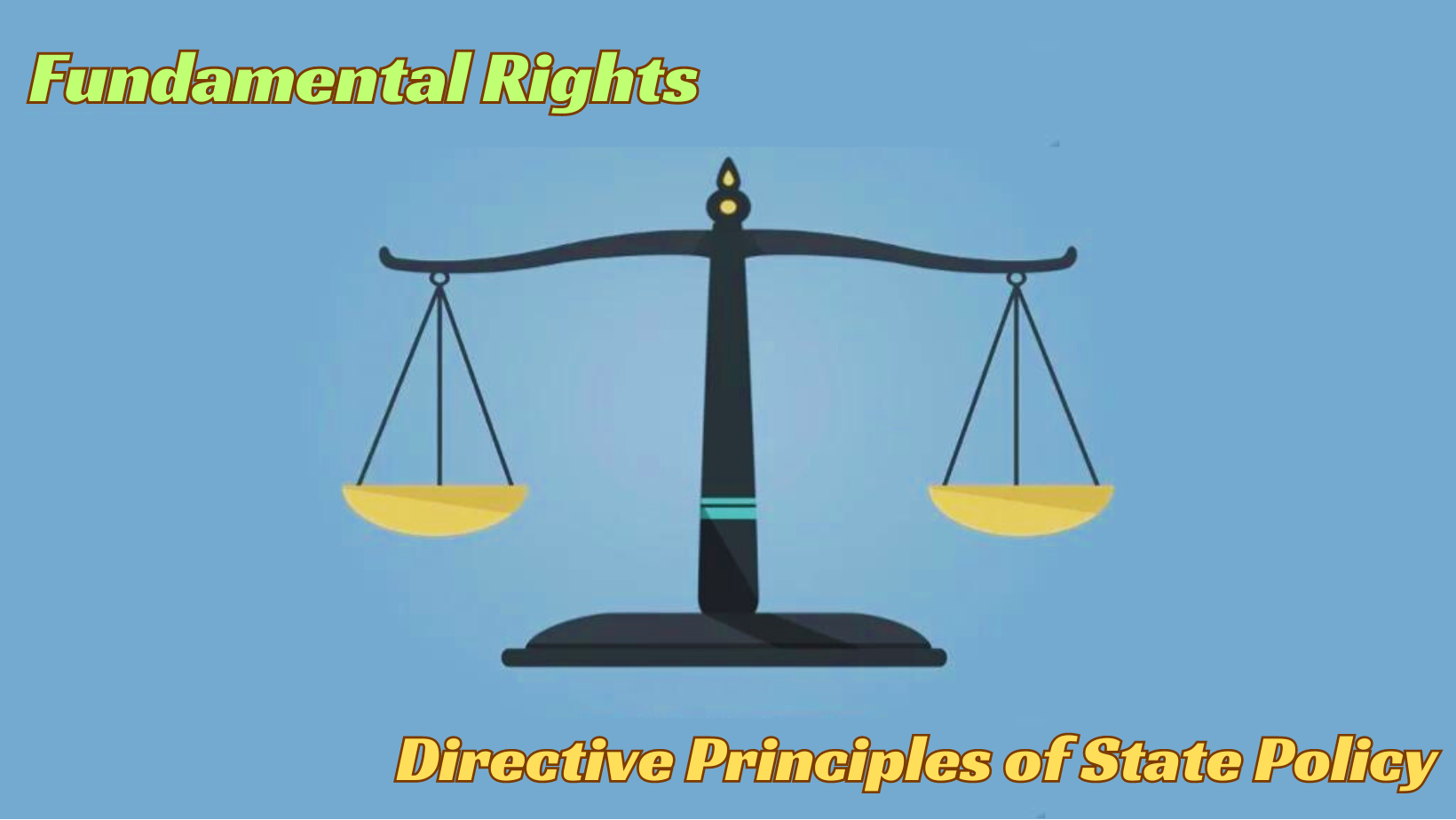
- 09 May 2024
Why is it in the News?
The top court has a chance, in Property Owners Association vs State of Maharashtra, to resolve the clash between fundamental rights and Directive Principles of State Policy.
Context:
- In a recent hearing before a nine-judge Bench of the Supreme Court of India in Property Owners Association vs State of Maharashtra, two crucial questions have surfaced concerning the interpretation and implementation of constitutional provisions.
- The initial query revolves around elucidating the concept of "material resources of the community" as articulated in Article 39(b) of the Indian Constitution.
- The subsequent issue delves into the potential discord between legislation crafted to fulfil the objectives delineated in Article 39(b) and the fundamental rights to equality and liberty enshrined in Part III of the Constitution.
The Conflict Between Fundamental Rights (FR) and Directive Principles of State Policy (DPSP):
- Inherent Dilemma: At the core of India's constitutional framework lies a significant tension between fundamental rights and directive principles of state policy (DPSP).
- Part III guarantees citizens' fundamental rights, while Part IV outlines DPSPs as guiding principles for state action.
- This tension stems from the divergent nature of these provisions:
- fundamental rights are legally enforceable
- whereas DPSPs serve as moral and political directives without judicial enforceability.
- Clash of Objectives: The conflict between fundamental rights and DPSPs arises from conflicting priorities: individual liberties versus collective welfare.
- While fundamental rights focus on safeguarding individual autonomy and limiting state interference, DPSPs underscore the state's responsibility to foster social and economic justice for citizens' well-being.
- This tension is compounded by India's diverse societal fabric, marked by varying social, economic, and cultural landscapes.
- Historical Discourse: The conflict between fundamental rights and DPSPs has sparked considerable debate and legal scrutiny throughout India's constitutional history.
- Courts have grappled with striking a balance between state intervention for societal welfare and safeguarding individual freedoms, especially when legislative measures aimed at fulfilling DPSPs impinge on fundamental rights.
- The Supreme Court's pivotal role in adjudicating these conflicts has significantly shaped India's constitutional democracy.
- Intensified Debate: During the 1970s, the conflict between fundamental rights and DPSPs reached a zenith, prompting amendments to shield certain laws from judicial review.
- The landmark Kesavananda Bharati vs State of Kerala (1973) case sought to address this conflict, yet it persisted, reflecting the ongoing struggle to reconcile competing constitutional imperatives.
What is the Article 31C of the Indian Constitution?
- The 25th Amendment (Birth of Article 31C): Enacted through the 25th amendment to the Indian Constitution, Article 31C was introduced to shield laws aimed at actualizing Article 39(b) and (c) from judicial scrutiny concerning potential violations of fundamental rights.
- This constitutional provision sought to safeguard legislative measures crafted to secure the material resources of the community, shielding them from challenges under Articles 14 and 19, which safeguard equality and various freedoms, respectively.
- Kesavananda Bharati Case (Challenging Article 31C): The landmark Kesavananda Bharati vs State of Kerala (1973) case questioned the validity and breadth of Article 31C.
- The Supreme Court deliberated on whether Article 31C, by immunizing certain laws from fundamental rights challenges, infringed upon the basic structure of the Constitution.
- While affirming the principle of judicial review and the supremacy of the Constitution's basic structure, the ruling left uncertainties about the extent to which Article 31C could restrict fundamental rights.
- Expansion via the 42nd Amendment: Despite judicial scrutiny in Kesavananda, Parliament expanded Article 31C's reach through the 42nd Amendment in 1976.
- This amendment aimed to widen the immunity granted to laws furthering directive principles, extending beyond Article 39(b) and (c) to encompass any directive principle.
- The 42nd Amendment marked a significant shift in the equilibrium between fundamental rights and directive principles, sparking concerns over potential encroachments on individual liberties.
- Minerva Mills Case (Judicial Intervention): The constitutionality of the expanded Article 31C faced judicial scrutiny in Minerva Mills vs Union of India (1980).
- In a seminal verdict, the Supreme Court struck down the 42nd Amendment, emphasizing the symbiotic relationship between fundamental rights and directive principles within the constitutional framework.
- Chief Justice Y.V. Chandrachud's assertion regarding fundamental rights serving as a check against unchecked state authority underscored the significance of this ruling.
- Ambiguities and Pending Matters: Following the Minerva Mills case, ambiguities persisted regarding the status of Article 31C and its alignment with the Constitution's basic structure.
- Justice Y.V. Chandrachud's divergent opinions in Minerva Mills and Waman Rao vs Union of India added complexity to the issue.
- The absence of a definitive Supreme Court ruling on the validity of Article 31C has perpetuated the tension between fundamental rights and directive principles.
Property Owners Association Vs State of Maharashtra: Resolving a Constitutional Conundrum
- Comprehensive Legal Examination by the Supreme Court: At the heart of this case lies a critical examination of a law granting a state government board full control over dilapidated buildings, contingent upon the consent of at least 70% of residents.
- The legality of this law is under scrutiny, particularly regarding its potential infringement on fundamental rights enshrined in Articles 14 and 19, which ensure equality and various freedoms, respectively.
- Rebalancing Fundamental Rights and Directive Principles: The verdict in the Property Owners case holds profound significance for recalibrating the equilibrium between fundamental rights and directive principles in India's constitutional fabric.
- It will delineate whether laws designed to uphold directive principles, such as acquiring dilapidated buildings for the common good, can withstand challenges based on fundamental rights.
- This raises fundamental questions regarding the hierarchy of rights and duties within the constitutional framework and the extent to which the state can limit individual liberties for the collective welfare.
- Addressing Ambiguities and Pending Issues: The Property Owners case offers an opportunity for the judiciary to clarify ambiguities surrounding the interpretation and implementation of Article 31C, considering previous judicial precedents.
- Prior conflicting rulings in cases like Kesavananda Bharati and Minerva Mills have left unresolved queries regarding the validity and scope of Article 31C, particularly concerning its alignment with the Constitution's basic structure.
- Despite subsequent judgments like Waman Rao and Sanjeev Coke vs Bharat Coking Coal (1982), which followed, the Supreme Court has yet to provide a definitive analysis of Article 31C introduced by the 25th amendment and its compatibility with the Constitution's foundational principles.
- By offering clarity on these matters, the Supreme Court can foster a more coherent and uniform approach to reconciling the divergent demands of fundamental rights and directive principles.
Conclusion
The verdict in the Property Owners case stands as an opportunity to reinforce the core tenets of equality, liberty, and social justice embedded within the Indian Constitution. By delicately reconciling the safeguarding of individual rights with the advancement of societal well-being, the judiciary holds the key to preserving the integrity of India's constitutional democracy. Such a decision would ensure that principles of justice and fairness remain paramount in the governance of the nation, fostering a more inclusive and equitable society.
The Judiciary’s Shadow Over Standard-essential Patents
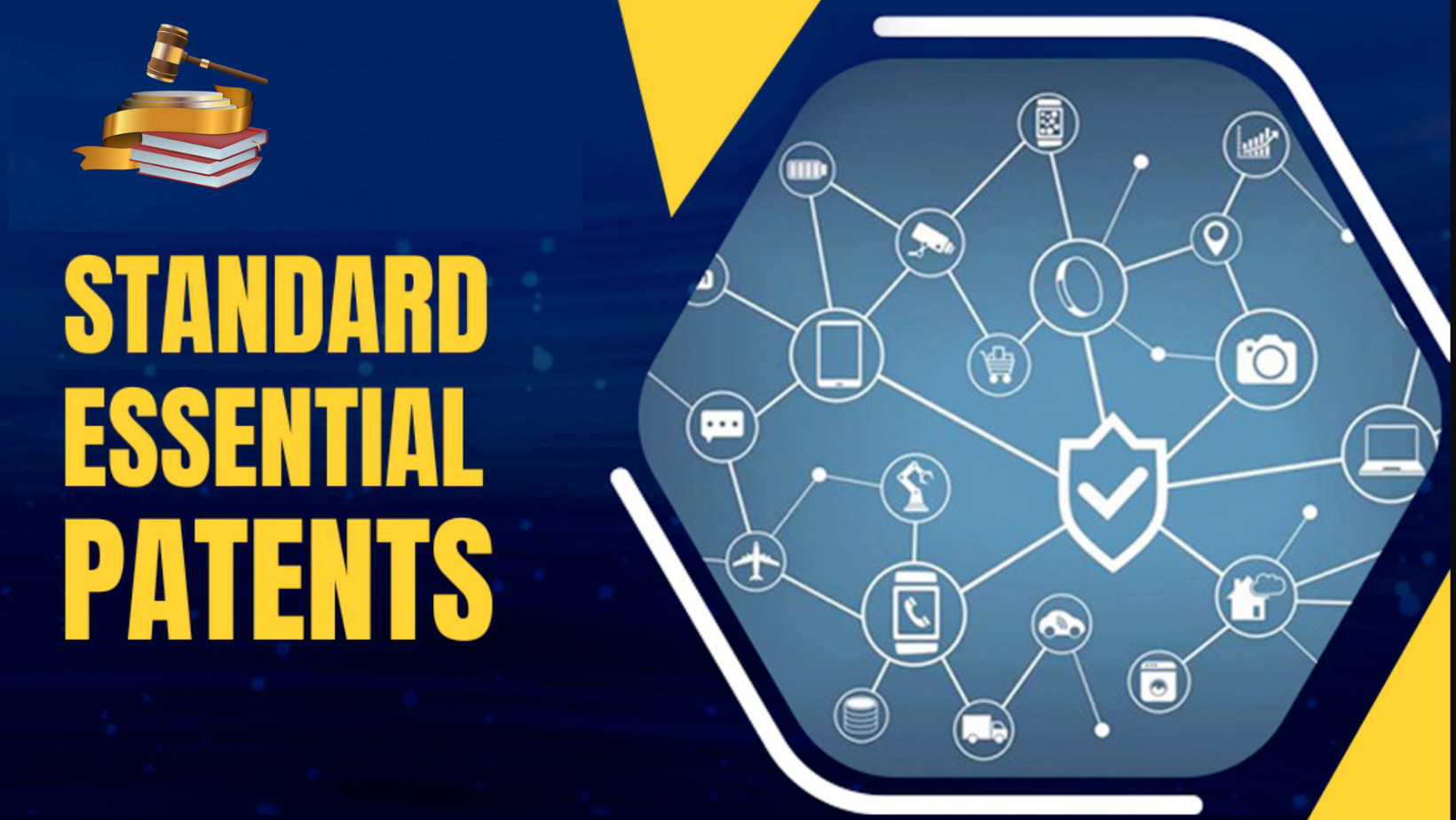
- 03 May 2024
Why is it in the News?
The government must put in place measures to regulate standard essential patents before the judiciary causes further damage to India’s manufacturing dreams.
Context:
- The emergence of Standard Essential Patents (SEPs) and their implications for India's telecom manufacturing industry has become a significant policy issue.
- However, the utilization of SEPs by technology firms presents hurdles, potentially jeopardizing India's domestic manufacturing sector.
- Thus, it is crucial to delve into the intricacies of this matter, scrutinizing the role of SEPs, the regulatory challenges they present, and the necessity for regulatory action.
What are Standard Essential Patents (SEPs)?
- EPS are patents indispensable for implementing a technical standard, particularly prominent in industries like telecommunications reliant on standards such as 3G, 4G, and 5G for seamless device and network communication.
- Typically owned by entities or individuals, these patents are vital for guaranteeing the interoperability and compatibility of products and technologies adhering to specific standards.
- Critical for fostering interoperability and competitiveness in the cellular phone market, EPS covers technologies adopted as industry standards.
- Despite their significance, conflicts over EPS licensing and infringement are common, often resulting in legal disputes and negotiations between companies and patent holders to establish equitable licensing terms.
Significance of Essential Patents and Regulatory Hurdles:
- Essential Patents (EPs) such as CDMA, GSM, and LTE serve as the linchpin of technological standards in the telecom industry, ensuring seamless compatibility among various cellular phone brands.
- However, the standard-setting process, predominantly governed by private Standard Setting Organizations (SSOs), limits India's influence in shaping these standards.
- Consequently, owners of EPs may demand excessive royalties, resulting in the "patent holdup" dilemma.
- Although SSOs strive for fair, reasonable, and non-discriminatory (FRAND) licensing, opacity and anti-competitive behaviours persist, as illustrated by substantial fines levied on companies like Qualcomm by multiple jurisdictions.
Judicial Response to Standard Essential Patents (SEPs) Issues:
- Competition Law Enforcement Inertia: The Competition Commission of India (CCI) commenced an inquiry in 2013 upon a complaint by Micromax against Ericsson, alleging SEP licensing abuse.
- However, Ericsson contested the CCI's jurisdiction, resulting in protracted legal wrangling.
- Despite a favourable ruling for the CCI in 2016, Ericsson's appeals prolonged the case until a final judgment in 2023.
- India, due to this prolonged litigation, remains the sole major economy yet to examine potential anti-competitive SEP licensing practices.
- Patent Infringement Cases and Judicial Engagement: While competition law matters linger, the Delhi High Court actively hears lawsuits by SEP owners against cellular phone manufacturers accused of patent infringement.
- These lawsuits entail intricate trials to ascertain patent validity, infringement, and damages.
- Rather than pausing proceedings pending competition law resolution, the court issues interim measures favouring SEP owners.
- Such measures often mandate manufacturers, many of them Indian, to deposit substantial sums with the court for ongoing production during trials.
- Unprecedented "Deposit" Orders: Issuing "deposit" orders, compelling manufacturers to deposit significant funds before trial, is unprecedented in commercial law.
- These orders, lasting throughout lengthy trials, impose heavy financial burdens on defendants, depriving them of vital working capital.
- While lacking legal foundation and fairness, the Delhi High Court justifies them using its "inherent powers to ensure justice."
- This judicial activism, while aimed at expediting legal proceedings, raises concerns about procedural fairness and equitable treatment of litigants.
Impact of Judicial Interventions and Legal Battles on India's Manufacturing Goals:
- Undermining Investor Confidence and Market Stability: Extended legal battles and judicial interventions sow uncertainty, denting investor trust in India's manufacturing sector.
- Foreign investors may perceive the unpredictable legal environment as a barrier to entering or expanding operations in the nation.
- Uncertainty regarding SEP licensing practices and potential adverse court rulings disrupts market stability, impeding long-term investment planning for both domestic and international enterprises.
- Stifling Growth and Innovation: SEP-related disputes divert attention and resources away from fostering innovation and technological progress in the telecom manufacturing domain.
- Rather than directing efforts towards research and development (R&D) or embracing new technologies, companies become entangled in legal disputes, hindering productive pursuits.
- This diversion of resources curtails innovation, obstructs product development, and undermines India's global competitiveness.
- Impact on Employment and Economy: The manufacturing sector is a vital source of employment and economic advancement, especially in emerging economies like India.
- However, uncertainties surrounding SEP-related litigation pose a threat to job stability and employment opportunities, particularly in the telecom manufacturing sector.
- Protracted legal proceedings and financial burdens may compel companies to downsize operations, leading to workforce reductions and inhibiting future investments.
- Policy Inconsistencies: Contradictions arise between judicial rulings favouring SEP owners and government initiatives to incentivize domestic manufacturing.
- While the government aims to attract investment and bolster indigenous production, SEP-related disputes undermine these objectives.
- The disconnect between supporting manufacturers and overlooking financial burdens imposed by SEP owners questions the coherence of policies promoting industrial growth.
- Long-term Industrial Landscape Implications: Unresolved tensions surrounding SEP licensing practices and judicial handling of disputes cast shadows over India's industrial future.
- Failure to address these issues may deter investors, jeopardize job creation, and impede India's transition to a knowledge-based economy.
- With regulatory intervention to streamline legal processes and ensure fairness, India can catch up to global peers in manufacturing prowess.
Way Forward:
- The European Parliament's proactive stance on regulating SEPs offers valuable lessons for global intervention in this arena.
- Given India's constrained influence in standard-setting and obligations to uphold patents of foreign tech firms, it presents a strong rationale for similar regulatory action.
- Enhancing regulatory frameworks to foster transparency, equity, and non-discriminatory practices in SEP licensing is essential to protect India's economic welfare and foster indigenous manufacturing.
Conclusion
The Indian government must prioritize resolving regulatory uncertainties regarding SEPs to protect domestic manufacturers' interests and drive industrial advancement. Regulatory actions should strive for a harmonious balance between technology firms' interests and overarching goals of economic progress, innovation, and consumer protection. Through decisive intervention, India can assert its autonomy, cultivate fair competition, and cultivate an environment conducive to investment and innovation.
Constitution and the Redistribution of Wealth
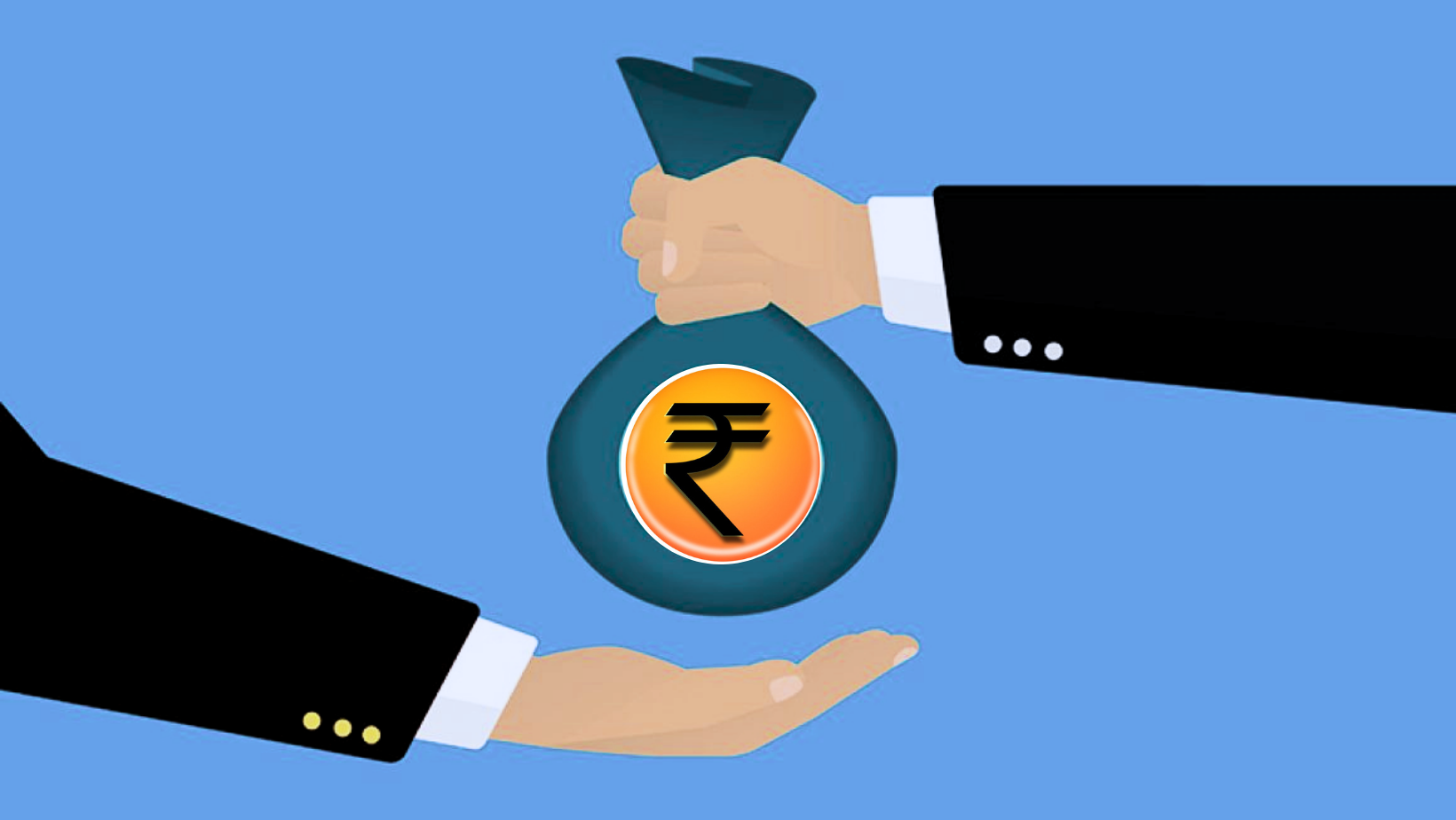
- 01 May 2024
Why is it in the News?
During the ongoing election campaign, there have been intense debates between the ruling government and the Opposition regarding wealth redistribution, while the SC has formed a nine-judge Bench to interpret the DPSP concerning ownership and control of material resources.
Context:
- Congress leader Rahul Gandhi during the Lok Sabha campaign said that there will be a financial survey to determine the distribution of wealth in the country for addressing the issue of inequality.
- The ruling BJP targeted Gandhi and alleged that Congress if elected, would bring back the "socialistic model" of economics and hinder India's growth as an economy.
What is Wealth Redistribution?
- The meaning of wealth redistribution is the transfer of wealth from one individual to another through a social mechanism such as taxation, charity, or public services.
- One biggest example of wealth redistribution would be income tax wherein higher earnings pay a higher percentage of tax compared to lower-income earners.
- Proponents of this exercise note that wealth redistribution is necessary to bridge the inequality gap between members of society.
- And in India, the gap between the rich and the poor is only growing further.
- As per a recent study, the country’s richest one per cent of the population now owns 40 per cent of the country’s wealth.
- According to the report titled Income and Wealth Inequality in India: The Rise of The Billionaire Raj, and published by The World Inequality Lab, “the inequality gap widened after the economy’s opening up in the early 1990s, but “between 2014-15 and 2022-23, the rise of top-end inequality has been particularly pronounced in terms of wealth concentration”.
- Based on figures from the World Inequality Database, India’s income inequality is among the very highest in the world, behind only Peru, Yemen and a few other small countries.
What Does India’s Constitution Say on Wealth Distribution?
- The Preamble to the Constitution aims to secure for all citizens social and economic justice, liberty and equality.
- Part III of the Constitution lists down the fundamental rights that guarantee liberty and equality while Part IV contains the DPSP.
- These are principles that the central and State governments should follow to achieve social and economic justice in our country.
- Unlike the fundamental rights in Part III, the DPSP is not enforceable in court.
- They are nevertheless fundamental in the governance of the country.
- Article 39(b) and (c) in Part IV contain principles that are aimed at securing economic justice.
- They provide that ownership and control of material resources of the society should be distributed to serve the common good and that the operation of the economic system does not result in the concentration of wealth to the common detriment.
- India’s Constitution-makers haven’t explicitly spoken of wealth redistribution.
- It’s noteworthy that when Article 39 (Draft Article 31) was being added to the Constitution, it was heavily debated.
- The economist KT Shah wanted the Constitution to outrightly prevent the creation of monopolies in industries.
- In agreement with him was Shibban Lal Saxena, who wanted it to be explicitly put down that the State shall control a few key industries.
- However, there were others Naziruddin Ahmad, who were not comfortable with the Constitution endorsing contested political and economic ideologies.
What is the Historical Context of the Redistribution of Wealth?
- The Constitution originally guaranteed the right to property as a fundamental right under Article 19(1)(f).
- It is provided under Article 31 that the state shall pay compensation in case of the acquisition of private property.
- It is pertinent to note that at the time of independence, the main property rights related to agricultural and other land.
- The government had to acquire the rights in such estates for carrying out land reforms and the construction of public assets.
- Considering the inadequate resources of the government and in order to provide greater flexibility in acquiring land for public welfare, various amendments were carried out curtailing the right to property.
- The Supreme Court in various cases has interpreted the relationship between fundamental rights and the DPSP.
- Most of these cases were against constitutional amendments made by the state that curtailed the right to property which was then a fundamental right.
- In the Golak Nath case (1967), the Supreme Court held that fundamental rights cannot be abridged or diluted to implement DPSP.
- Finally, in the Kesavananda Bharati case (1973), a thirteen-judge Bench of the Supreme Court upheld the validity of Article 31C but made it subject to judicial review.
- In the Minerva Mills case (1980), the Supreme Court ruled that the Constitution exists on a harmonious balance between fundamental rights and DPSP.
- In 1978, in order to avoid excessive litigation directly in the Supreme Court by the propertied class, the 44th Amendment Act omitted the right to property as a fundamental right and made it a constitutional right under Article 300A.
- The right to private property continues to be an important constitutional cum legal right.
- Any law to acquire private property by the state should be only for a public purpose and provide adequate compensation.
What is the Current Debate on the Redistribution of Wealth?
- The government of India in the first four decades after independence followed a “socialistic model” of economy.
- The economic policies resulted in the nationalisation of banking and insurance, extremely high rates of direct taxes (even up to 97%), estate duty on inheritance, tax on wealth etc.
- The rationale behind these measures during those times was to reduce inequality and redistribute wealth among the poorer sections that constituted the majority of the population.
- However, such measures stifled growth and also resulted in the concealment of income/wealth.
- Taxes like estate duty and wealth tax generated revenue that was much less than the cost incurred in administering them.
- The nineties saw the country move from a closed economy towards liberalisation, globalisation and privatisation.
- A new industrial policy was unveiled in 1991 with the objective of empowering market forces, improving efficiency and rectifying deficiencies in the country’s industrial structure.
- Estate duty was abolished in 1985 and wealth tax in 2016.
- The market-driven economy has resulted in additional resources for the government that has helped in bringing people out of abject poverty.
- Nonetheless, this economic system has also resulted in growing inequality.
- A report by the World Inequality Lab states that the top 10% of the country’s population have a share of 65% and 57% of the wealth and income respectively as of 2022-23.
- The bottom 50% on the other hand have a meagre share of 6.5% and 15% of the wealth and income respectively.
- The manifesto for the current Lok Sabha elections of the Congress promises that there will be a financial survey to ascertain the distribution of wealth among the people in the country and address the issue of inequality.
- The ruling party campaigners led by the PM have targeted the Opposition on this matter.
- The SC meanwhile has constituted a nine-judge Bench to interpret whether material resources under Article 39(b) include private resources as well.
Way Forward:
- Growing inequality is a worldwide problem of a liberalised open-market economic system.
- It is the responsibility of the government to protect the interest of the poorer classes who are most dependent on the state machinery for their livelihood.
- At the same time past policies of extremely high tax rates, estate duty, wealth tax etc., did not achieve their desired goals. Instead, they only led to the concealment of income and wealth.
- Innovation and growth should not be curtailed but the benefits of growth should reach all sections especially the marginalised.
- It's essential to design inclusive policies through informed debates, aligning with current economic models, to ensure that the benefits of growth reach marginalized sections, in line with the constitutional principle of economic justice for all.
Conclusion
The debate on wealth redistribution in India underscores the complex challenge of balancing economic growth with equitable resource allocation. While past policies have had mixed results, it remains essential for the government to protect vulnerable populations and promote inclusive growth. To achieve this, policymakers must foster innovation while ensuring the benefits reach marginalized communities. By designing policies aligned with current economic models and adhering to the constitutional principle of economic justice, India can work towards a future where growth and social equity coexist harmoniously.
EC’s Model Code Needs Reform and India Needs Model Leadership
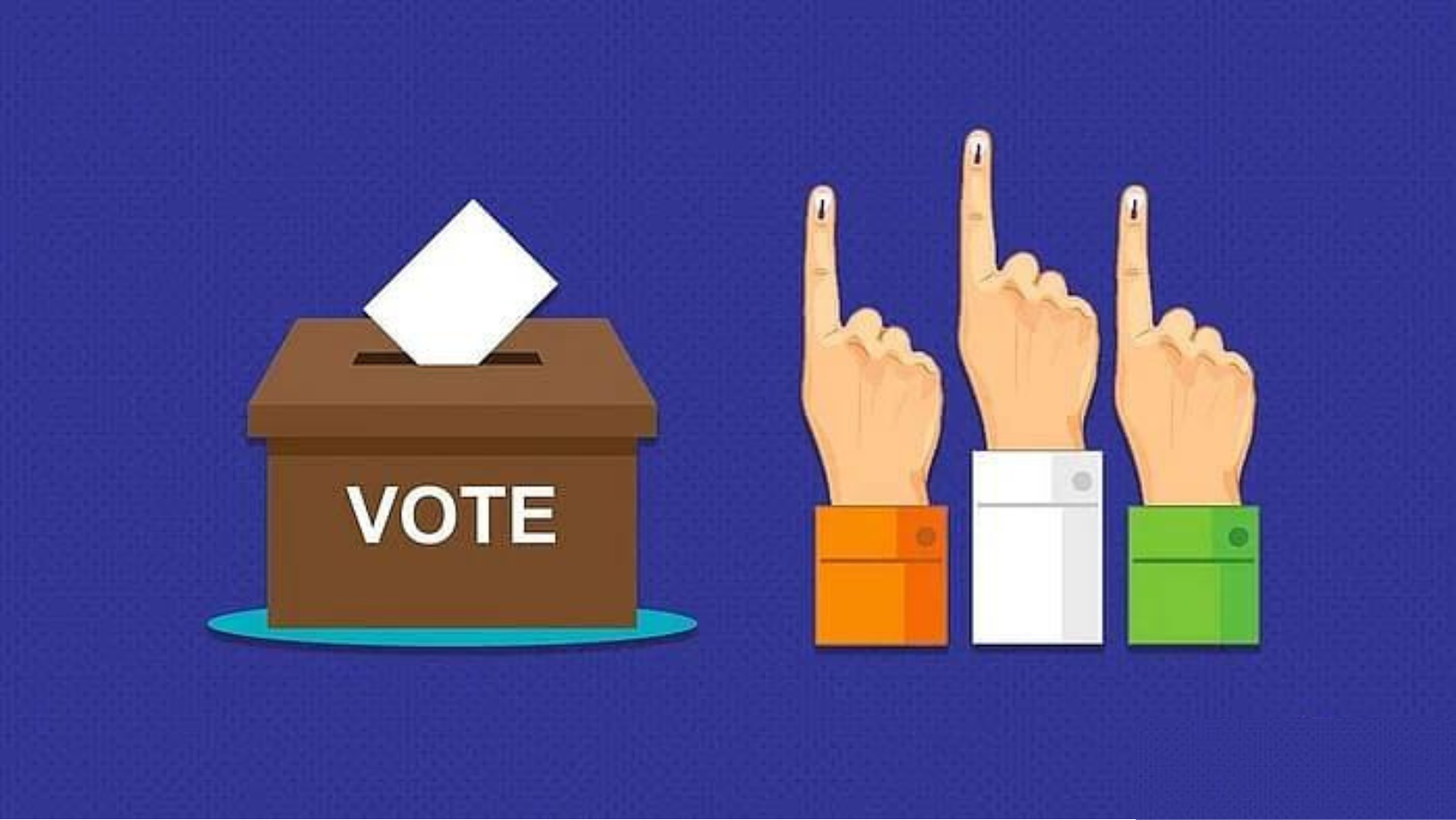
- 30 Apr 2024
Why is it in the News?
Former Election Commissioner Ashok Lavasa points out that a significant gap in the present framework is that the Model Code of Conduct for elections has not spelled out the consequences of defaults, thus diluting its deterrent effect.
Context:
- The Model Code of Conduct (MCC) plays a pivotal role in India's electoral process, having evolved considerably since its inception to uphold fairness in elections.
- While originally crafted to regulate conduct during elections, the MCC faces new hurdles in today's dynamic political environment.
- Hence, it becomes imperative to delve into the historical progression of the MCC, identify existing deficiencies, and suggest strategies to bolster its implementation.
Evolution of the Model Code of Conduct (MCC):
- Kerala was the first state to adopt a code of conduct for elections.
- In 1960, ahead of the Assembly elections in the state, the administration prepared a draft code that covered important aspects of electioneering such as processions, political rallies, and speeches.
- It was only in 1974, just before the mid-term general elections, that the EC released a formal MCC.
- It also set up bureaucratic bodies at the district level to oversee its implementation.
- So the EC, just before the 1979 Lok Sabha elections, released a revised Model Code with seven parts, with one part devoted to the party in power and what it could and could not do once elections were announced.
- The MCC has subsequently evolved as an integral part of conducting fair and free elections.
Challenges Faced by the MCC and the Imperative for Strengthening Enforcement:
- Escalating Violations: Political parties and candidates routinely flout the MCC's regulations, engaging in activities like hate speech, vote-buying, and spreading misinformation, undermining the trust in the electoral process and compromising its fairness and transparency.
- Exploitation of Loopholes: In today's political landscape, there's a discernible trend of exploiting MCC loopholes to bypass its regulations.
- With the advent of technology and social media, political entities find novel ways to propagate propaganda and target voters, evading traditional MCC constraints and necessitating revisions to address these evolving challenges.
- Inadequate Deterrents: While the MCC sets ethical standards, it often lacks effective penalties for violations, resulting in politicians perceiving minimal risks in flouting its provisions.
- Strengthening the MCC entails imposing clear and proportionate penalties for transgressions to foster a culture of accountability.
- Complexity of Enforcement: India's vast and diverse electoral terrain, coupled with a surge in reported violations, strains the Election Commission's enforcement capabilities.
- Adjudicating MCC breaches can be arduous and resource-intensive, leading to accountability delays. Streamlining enforcement procedures and enhancing the EC's capacity is pivotal for ensuring prompt and efficient MCC implementation.
- Erosion of Public Trust: Widespread disregard for ethical norms and regulations can erode citizens' trust in the democratic process, fostering voter apathy and disenchantment.
- Restoring public confidence in elections necessitates robust measures to strengthen the MCC and underscore the EC's dedication to upholding electoral integrity.
Proposed Reforms to Enhance MCC Enforcement:
- Clear and Comprehensive Guidelines: The initial step towards MCC reform entails establishing clear and comprehensive guidelines delineating permissible and impermissible conduct during electoral campaigns.
- Regular updates to these guidelines are crucial to address evolving challenges and technological advancements, enabling political entities to navigate ethical standards effectively and prevent inadvertent violations.
- Strict Enforcement Mechanisms: Implementation of proportional penalties for infringements, such as fines, campaigning bans, and withdrawal of electoral symbols, constitutes a vital aspect of reform.
- Streamlining enforcement procedures by the Election Commission (EC) ensures swift adjudication of cases, bolstering the MCC's credibility and deterrent impact.
- Indirect Liability for Political Parties: Imposing penalties on parties for MCC violations, irrespective of individual culpability, incentivizes enhanced oversight over members' conduct.
- This fosters collective responsibility within political organizations, promoting greater accountability and ethical governance.
- Transparency and Public Accountability: Maintaining a publicly accessible database documenting all reported MCC violations and their dispositions empowers citizens to monitor regulatory compliance.
- This transparency holds political actors accountable for their actions, reinforcing public trust in the electoral process.
- Timely and Credible Adjudication: Prioritizing prompt resolution of violations and ensuring impartial decision-making by the EC are essential to uphold the MCC's deterrent effect.
- Timely adjudication prevents erosion of public confidence and underscores the EC's commitment to fair electoral practices.
- Continuous Evaluation and Revision: Vigilance in identifying areas for improvement and updating the MCC in response to emerging challenges and evolving electoral dynamics is crucial.
- This iterative approach ensures the MCC remains relevant and effective in safeguarding India's electoral integrity.
The Role of Political Parties and Election Commission in Safeguarding Electoral Integrity:
Political Leadership's Responsibility:
- Political leaders wield significant influence in upholding electoral integrity by adhering to ethical standards and fostering responsible conduct within their parties.
- By exemplifying ethical leadership, politicians can instill a culture of integrity and accountability among their supporters and party members.
- Effective self-regulation within political parties is imperative to minimize MCC violations and preserve the integrity of electoral campaigns.
- Through a commitment to fairness, transparency, and democratic principles, leaders can instill confidence in the electoral process and encourage civic engagement among voters.
The Election Commission's Mandate:
- As the guardian of electoral integrity, the Election Commission plays a pivotal role in impartially adjudicating MCC violations and enforcing electoral regulations.
- Timely and decisive enforcement of the MCC is crucial for deterring violations and upholding the integrity of electoral campaigns.
- Maintaining transparency in its actions and decisions related to MCC enforcement is essential for the EC to uphold public accountability.
- By providing regular updates on reported violations, adjudication outcomes, and enforcement measures, the EC fosters public trust in its ability to safeguard electoral integrity.
- Enhancing the EC's capacity for MCC enforcement is paramount for effectively addressing emerging challenges and ensuring the integrity of electoral processes.
- This includes investing in training programs, technological infrastructure, and human resources to enable the EC to adapt to evolving electoral dynamics and enforce regulations effectively.
Conclusion
While the Model Code of Conduct (MCC) serves as a crucial bulwark against electoral misconduct, its effectiveness hinges on vigorous enforcement and adaptability to evolving scenarios. Through the adoption of suggested reforms and the cultivation of ethical leadership, India can fortify the integrity of its democratic mechanisms, guaranteeing equitable and transparent elections for its populace.
Legal Amendments Likely to Increase Medicine Costs without Improving Quality

- 22 Apr 2024
Why is it in the News?
The amended rules will prolong the life of drugs on account of frivolous patenting, increase their prices, and make lives difficult for patients.
Context:
- India's healthcare system depends largely on accessible medications, with the generic pharmaceutical sector crucial for delivering quality drugs at affordable rates.
- The expense of medicines represents a substantial part of healthcare spending, with almost half of individuals' medical costs dedicated to purchasing prescriptions.
- Yet, the considerable expenses associated with medications, largely influenced by patenting, create significant hurdles for obtaining vital treatments.
What is the Role of Generic Pharmaceutical Companies?
- Generic pharmaceutical companies are pivotal in addressing the challenge of affordability by offering cost-effective alternatives to patented drugs.
- India's generic industry has earned global recognition for its role in providing essential medications at accessible prices.
- The development of India's patent laws has significantly influenced its pharmaceutical sector and its capacity to produce generic drugs.
- Initially, the Indian Patent Act of the early 1970s limited patent protection to the manufacturing processes rather than the products themselves.
- This approach facilitated the growth of the generic industry, positioning India as a major exporter of generic drugs by the late 1980s.
- However, recent revisions to the Indian Patent Law pose a threat to this ecosystem and jeopardize access to affordable healthcare.
What is the Impact of the TRIPS Agreement on India's Pharmaceutical Industry?
- The Trade-Related Aspects of Intellectual Property Rights (TRIPS) Agreement, introduced in 1995, had a significant impact on India's pharmaceutical sector, shaping its development and global position. Key aspects of this impact include:
- Transition to Product Patents: A critical change brought by TRIPS was the requirement for member countries to grant patents for both products and processes, including pharmaceuticals.
- This shift from process to product patents posed challenges for India's thriving generic pharmaceutical industry, which had previously capitalized on producing affordable versions of patented drugs.
- Challenges for India's Generic Industry: The introduction of product patents threatened India's generic pharmaceutical sector, renowned for its capacity to manufacture low-cost essential medicines.
- These patents granted exclusive rights to inventors, restricting generic manufacturers' ability to produce and distribute affordable alternatives.
- Pressure to Comply with International Standards: The TRIPS Agreement pressured India to align its intellectual property laws with international standards, encompassing pharmaceutical patent protection.
- This necessitated amendments to India's Patent Act to comply with TRIPS obligations while preserving the interests of its generic pharmaceutical industry and public health priorities.
- Preserving Access to Medicines: Despite TRIPS challenges, India implemented measures to safeguard access to affordable medicines.
- Provisions like Section 3(d) of the Indian Patent Act, introduced in 2005, aimed to prevent granting frivolous patents for incremental innovations lacking significant therapeutic benefits.
- This ensured compliance with TRIPS requirements while maintaining access to affordable medicines.
- Balancing Innovation and Access: The TRIPS Agreement presented India with the challenge of balancing innovation and access to essential medicines.
- While patents incentivize innovation and investment in research and development, they can restrict access to life-saving treatments, particularly in developing countries with limited healthcare resources.
- Global Leadership in Generic Manufacturing: Despite the challenges posed by TRIPS, India emerged as a global leader in generic drug manufacturing.
- Leveraging its manufacturing capabilities and adherence to TRIPS flexibilities, the country's generic pharmaceutical industry continued to thrive, supplying affordable medicines domestically and globally.
What is Section 3(d) of India's Patent Act?
- Section 3(d) is a crucial provision in India's Patent Act that exemplifies the flexibilities embedded within the country's patent laws.
- It tackles concerns related to "evergreening"—a practice used by pharmaceutical companies to extend patent life through minor modifications or incremental innovations.
- The primary objective of Section 3(d) is to prevent the granting of patents for incremental innovations that lack significant therapeutic efficacy or novelty.
- By doing so, it aims to protect access to generic versions of essential medicines and promote affordability.
- Under Section 3(d), pharmaceuticals and chemical substances are eligible for patent protection only if they demonstrate enhanced efficacy compared to existing formulations.
- This requirement ensures that patents are granted for inventions representing genuine advancements in therapeutic efficacy rather than minor modifications or variations of existing drugs.
- Through Section 3(d), India's patent laws strike a balance between innovation and public health priorities, contributing to the overall well-being and access to medicines for its citizens.
What are the Contemporary Challenges in India's Patent Regime?
- India's patent regime currently faces several challenges, including issues related to pre-grant opposition, competition, international trade agreements, and flexibilities in patent law. These challenges have implications for access to affordable medicines, the financial burden on patent opponents, and drug availability.
- Threats to Pre-Grant Opposition: Amendments to the Indian Patent Rules have made filing opposition to patents at the pre-grant stage more challenging.
- This change could lead to granting patents for inventions lacking genuine novelty or therapeutic efficacy.
- Impact on Competition and Drug Prices: Limitations to the pre-grant opposition process may stifle competition in the pharmaceutical market and contribute to higher drug prices.
- By hindering generic manufacturers and civil society organizations from challenging frivolous patents, the amendments impede the availability of affordable generic drugs.
- Pressure from Pharma Majors and International Trade Agreements: These amendments reflect pressure from multinational pharmaceutical corporations, particularly Western and Japanese companies, seeking to align India's patent rules with their interests.
- Their lobbying efforts aim to weaken India's patent regime, facilitating patent grants for incremental innovations and extending market exclusivity for their products.
- Threats to Flexibilities in Patent Law: Amendments to India's patent rules threaten the flexibilities inherent in its patent law, including provisions such as Section 3(d) that set stringent patentability criteria based on enhanced efficacy.
- Weakening these provisions undermines India's capacity to protect public health priorities and promote access to affordable medicines.
- Financial Burden on Opponents of Patents: Imposing fees on patent opponents could deter patients, civil society organizations, and generic manufacturers from filing pre-grant oppositions.
- This financial burden limits stakeholders' ability to safeguard public health interests and promote affordable medicines.
- Impact on Compulsory Licensing and Drug Availability: The amendments also affect the issuance of compulsory licenses, crucial for ensuring access to medicines when patents hinder availability.
- By weakening provisions that enable compulsory licensing and limit evergreening, the amendments impede efforts to address healthcare disparities and promote equitable access to essential medicines.
Conclusion
Access to affordable medicines is vital for public health and universal healthcare. Policymakers must preserve patent law flexibilities, promote competition, and protect patient interests to ensure healthcare systems uphold affordability, accessibility, and quality. Amendments to India's Patent Rules should balance innovation, intellectual property rights, and societal well-being, mitigating negative impacts on essential medicines and public health outcomes.
Supreme Court's Directive Sets Delhi Metro Back on Course with Clear Roadmap
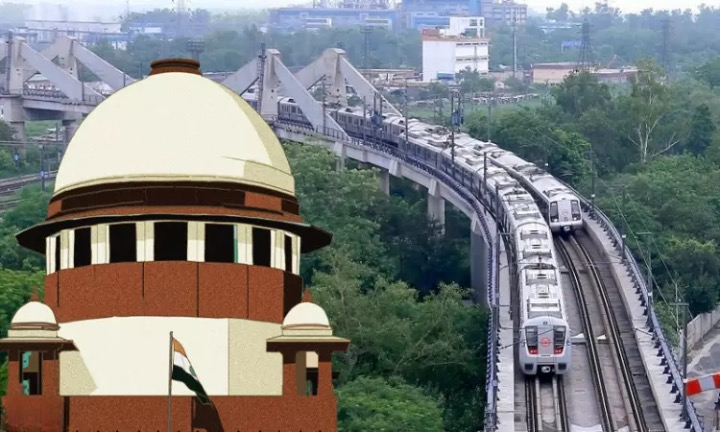
- 18 Apr 2024
Why is it in the News?
The case involving DMRC (Delhi Metro Rail Corporation) and DAMEPL (Delhi Airport Metro Express Pvt Ltd) which has been in and out of courts for over a decade, has concluded with the Supreme Court verdict on April 10.
Context:
- On April 10, the Supreme Court delivered its verdict on the case concerning the Delhi Metro Rail Corporation (DMRC) and Delhi Airport Metro Express Pvt Ltd (DAMEPL), bringing it to a close.
- This ruling holds exceptional importance within the legal sphere, setting a notable precedent for arbitration tribunals and courts.
- Moreover, it carries significant implications for public service delivery via partnership models and demonstrates effective litigation strategies for infrastructure projects, contributing to India's future resilience.
What is the Dispute Between DMRC and DAMPEL?
- The dispute between the Delhi Metro Rail Corporation (DMRC) and Delhi Airport Metro Express Pvt Ltd (DAMEPL) arises from the development and operation of the Airport Metro Express Line, a crucial infrastructure project in India's capital city, which began operations in 2011.
- The partnership between DMRC and DAMEPL followed a public-private partnership (PPP) model, where DMRC was responsible for constructing civil structures such as tunnels, viaducts, and station buildings, while DAMEPL was in charge of laying tracks, overhead equipment, signaling, and procuring rolling stock.
- Problems arose shortly after the line became operational.
- In 2012, DAMEPL suspended operations on the line, citing defects in the civil engineering works executed by DMRC.
- DAMEPL claimed that these defects compromised safety and functionality and demanded that DMRC rectify the issues within 90 days, threatening to treat the situation as a material breach of the agreement and terminate the contract if not addressed.
- DMRC attempted to resolve the issues through conciliation proceedings, but these efforts proved unsuccessful.
- Consequently, DAMEPL issued a notice of termination, asserting that DMRC had failed to remedy the defects.
- This led to a breakdown in the relationship between the two parties and prompted legal battles.
- Despite the challenges, DMRC and DAMEPL submitted a joint application in November 2012 to the commissioner of metro rail safety for inspection and permission to restart operations.
- Train services were eventually restored on the line by DAMEPL in 2013, with train speeds on the line increasing to 80 km/h. However, in June of the same year, DAMEPL announced its unwillingness to continue operating the line and ceased operations almost immediately.
- Recognizing the importance of the metro line for the public, DMRC stepped in to operate the nearly abandoned Airport Metro Express Line.
- DMRC resumed train operations and provided other ancillary services to maintain public transportation on the line.
- This intervention prevented a complete suspension of services and ensured continuity for commuters.
Findings of the Arbitration Tribunal:
- The tribunal awarded DAMEPL Rs 2,782 crore with interest after concluding that the termination notification was legitimate.
- In 2018, the Delhi High Court's single-judge bench maintained the award notwithstanding DMRC's protest.
- The Division Bench of the Delhi High Court, responding to DMRC's appeal, criticized the arbitral tribunal's methodology, pointing out errors such as failing to consider safety considerations and failing to read contractual provisions. As a result, the arbitration decision was revoked.
Supreme Court's Intervention and Final Judgement:
- Both DMRC and DAMEPL appealed to the Supreme Court through special leave petitions, leading to a significant legal process.
- Initially, the Supreme Court overturned the High Court's ruling and reinstated the arbitral award in 2021.
- However, following DMRC's curative petition, the Supreme Court revisited the case.
- After a thorough examination, considering various factors including factual background and tribunal decisions, the Court found significant errors in the arbitral award.
- Concluding that the award lacked coherence and resulted in serious injustice, the Court upheld the Division Bench's decision, deeming the award as flawed and illegal.
- This reversal of its earlier decision restored the parties to the status quo as per the Division Bench's judgment.
Importance of the Supreme Court Verdict:
- Establishing Precedent for Arbitration: The verdict sets a precedent for arbitration tribunals and courts, outlining the meticulous scrutiny required for arbitral awards.
- It underscores the importance of coherence and evidence-based reasoning in such decisions, ensuring fairness and consistency in dispute resolution.
- Ensuring Fairness and Justice: By reinstating the parties to the status quo as per the Delhi High Court Division Bench's judgment, the Supreme Court prioritizes fairness and justice in public-private partnership (PPP) projects.
- This safeguards public utilities from undue financial strain and upholds the interests of all stakeholders involved in contractual disputes.
- Promoting Accountability and Due Diligence: The ruling emphasizes accountability in infrastructure projects, stressing the need for due diligence and adherence to contractual obligations.
- It underscores the responsibility of all PPP participants to act in good faith, particularly in managing critical public infrastructure, thereby fostering transparency and integrity.
- Guiding Future Infrastructure Ventures: The judgment provides clarity for pending cases, especially in the infrastructure domain, offering a roadmap for handling disputes arising from PPP agreements.
- It ensures that future projects benefit from transparent and equitable dispute resolution mechanisms, enhancing the efficiency and credibility of infrastructure development efforts.
- Boosting Confidence in PPPs: By reaffirming the judiciary's commitment to legal integrity and fairness, the ruling instills confidence in both public and private entities engaging in PPPs.
- This confidence is essential for attracting investment in infrastructure projects, driving economic growth, and modernizing India's infrastructure landscape.
Conclusion
The prolonged legal conflict between DMRC and DAMEPL highlighted the complexities and challenges inherent in PPP projects, spanning over a decade with various assertions from both sides. This case serves as a testament to the judiciary's pivotal role in preserving equity and integrity within PPP ventures, crucial for advancing the nation's infrastructure. Furthermore, it underscores the significance of adhering to principles of fairness in contractual disagreements and the enduring influence of legal precedents on the trajectory of public-private collaborations
New Data Law, a Barrier to Journalistic Free Speech
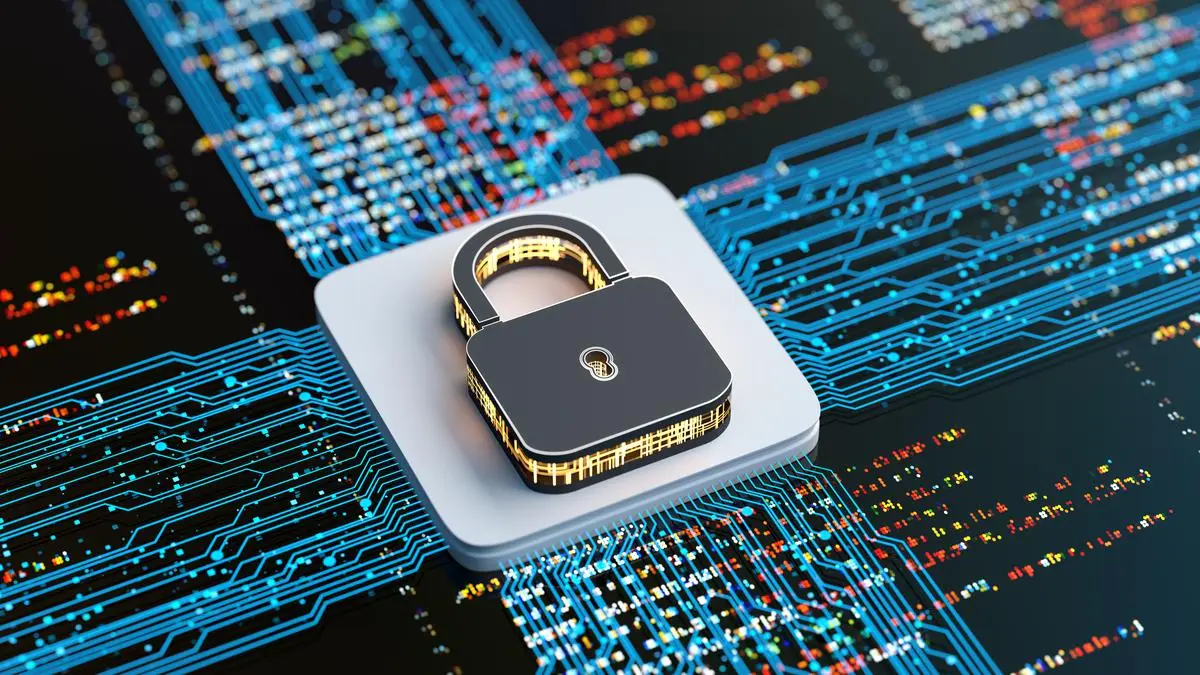
- 16 Apr 2024
Why is it in the News?
In August 2023, India enacted its first comprehensive data protection law, the Digital Personal Data Protection (DPDP) Act, 2023, with the government currently in the process of formulating rules and regulations for its implementation, anticipated to conclude post the general election.
Context:
- In August 2023, India introduced its first comprehensive data protection law, the Digital Personal Data Protection (DPDP) Act, 2023.
- While aimed at safeguarding personal data, its impact on journalistic freedom warrants examination, as the absence of exemptions for journalistic activities may threaten the foundational principles of a free press.
Provisions of Digital Personal Data Protection (DPDP) Act:
- The Digital Personal Data Protection (DPDP) Act, 2023 is a landmark legislation aimed at regulating the collection, processing, storage, and use of personal data in India.
- The Act establishes a comprehensive framework for lawful and transparent handling of personal data, seeking to safeguard individuals' privacy and data rights.
Key provisions of the DPDP Act, 2023 include:
- Definition of personal data: Any information capable of identifying an individual, directly or indirectly.
- Principles of data protection: Lawfulness, fairness, transparency, purpose limitation, data minimisation, accuracy, storage limitation, integrity, confidentiality, and accountability.
- Data handlers: Distinction between data fiduciaries (determining processing purpose and means) and data processors (processing data on behalf of fiduciaries).
- Consent: Requirement for explicit consent before processing personal data, with provisions for withdrawal.
- Individual rights: Access, correction, erasure, and transfer of personal data.
- Data localisation: Potentially mandating the storage and processing of certain sensitive data within India.
- Oversight: Establishment of a Data Protection Board to monitor compliance and resolve grievances.
- Non-compliance: Penalties and sanctions, including fines and legal consequences for violations.
- Cross-border data transfers: Ensuring data protection standards comparable to India's when transferring data across borders.
- Obligations for data fiduciaries and processors: Security measures, data breach notifications, and data impact assessments.
- The DPDP Act, 2023 represents a significant step towards upholding individual privacy rights in India and ensuring responsible data management by government entities, organisations, and individuals alike.
Journalistic Exemptions in Data Protection Laws:
- Traditionally, data protection laws include exemptions for journalistic activities, allowing journalists to access and report on personal data without consent for investigative purposes.
- These exemptions ensure freedom of the press and facilitate accountability in society.
- However, the Digital Personal Data Protection (DPDP) Act, 2023 does not provide such exemptions.
- Previous drafts of the Act, including versions released by an expert committee on data protection (2018), the government (2019), and a Joint Parliamentary Committee (2021), contained provisions for journalistic activities.
- The unexplained removal of these exemptions in the DPDP Act's final iterations (2022 and 2023) raises concerns over potential negative impacts on journalism and its role in maintaining transparency and accountability.
- Addressing this absence of journalistic exemptions will be crucial to upholding the freedom of the press and protecting the public's right to information.
Challenges for Journalists under the DPDP Act:
- Consent Requirements: Journalists are now obligated to secure consent from individuals before utilizing their personal data in news stories.
- This could impede investigative reporting, as subjects may refuse consent, thereby obstructing access to crucial information.
- Right to Erasure: The right to erasure permits individuals to demand the deletion of published stories containing their personal data.
- This provision may result in the removal of significant investigative work, undermining transparency.
- For instance, when reporting on a Member of Parliament (MP) and their activities, journalists often gather information such as meeting details, travel itineraries, and familial financial investments, all of which constitute personal data under the DPDP Act.
- This provision may result in the removal of significant investigative work, undermining transparency.
- Obtaining consent for such data usage poses challenges, and even after publication, MPs can invoke the right to erasure, compelling journalists to delete pertinent stories.
- Government Oversight: The Act grants the government authority to request information from data processors, potentially compromising the confidentiality of journalists' sources and research materials.
- This governmental oversight may curtail the press's capacity to hold the state accountable.
Addressing Concerns and Potential Solutions for Journalistic Freedoms under the DPDP Act:
- To ensure a balanced approach that protects personal data while preserving journalistic freedoms, addressing the concerns raised by the Digital Personal Data Protection (DPDP) Act is essential.
- The following solutions could help achieve this goal:
- Transparent Consultation: The removal of exemptions for journalistic activities highlights the need for open and transparent public consultations.
- Although drafts of the DPDP Act were released for public input, the comments received were not made publicly available.
- Greater transparency in the consultation process would enable better comprehension of stakeholder perspectives and inform more effective law-making.
- Exemptions for Journalists: The central government should consider using its rule-making powers under the DPDP Act to exempt journalistic entities, including citizen journalists, from specific obligations within the Act.
- This exemption would protect the freedom of the press and encourage a transparent and open environment for journalism.
- Public Consultation: Implementing an open, transparent, and robust public consultation process could facilitate better understanding and consideration of various viewpoints.
- This approach would lead to a more balanced and effective data protection law that upholds both personal data privacy and freedom of the press.
Conclusion
The Digital Personal Data Protection (DPDP) Act, 2023, is an essential step towards safeguarding personal data in India. However, its potential impact on journalistic free speech raises significant concerns that must be addressed.
To strike a balance between protecting individual privacy and upholding the fundamental principles of a free press, the government should consider implementing exemptions for journalists and fostering transparent consultation processes. These measures would enable a harmonious coexistence of personal data protection and journalistic freedoms, ensuring that both critical elements thrive in India's democratic landscape
A Battle to Save Ladakh, and All of Humanity
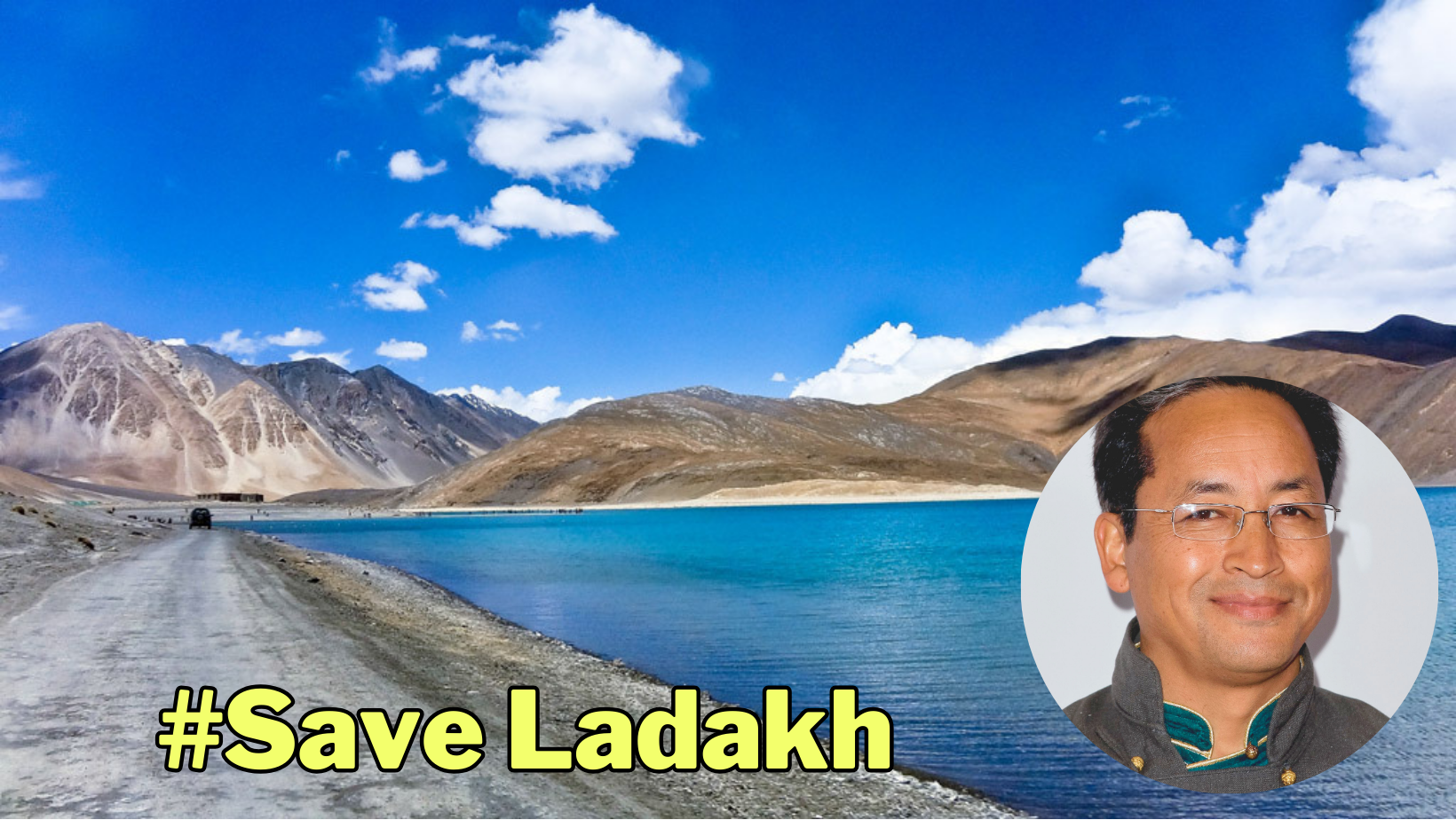
- 12 Apr 2024
Why is it in the News?
When climate activist Sonam Wangchuk took the stage in Leh, Ladakh recently, addressing a gathering of 30,000 individuals, his announcement of a 21-day climate fast resonated not only with the people of Ladakh but also with a global audience.
Context:
- The Himalayan region, situated between India's neighbors Pakistan and China, encompasses Ladakh, where 97% of the population comprises indigenous tribes whose livelihoods primarily depend on agriculture and animal husbandry.
- Despite its breathtaking beauty, this region grapples with various challenges, including the adverse effects of climate change, border tensions, and a surge in large-scale infrastructure projects.
- As climate activist Sonam Wangchuk leads protests and fasts, it becomes imperative to grasp the broader context of the Himalayan ecosystem's vulnerability.
The Climate Change Challenge in the Himalayan Region:
- Extreme Weather Events: Climate change manifests in more frequent and severe weather phenomena like heavy rainfall, cloudbursts, and flash floods.
- These events trigger landslides, wreaking havoc on mountain communities by damaging infrastructure, crops, and property, and endangering lives.
- Shifts in Monsoon Patterns: The region heavily relies on monsoon rains for agriculture and water supply.
- Climate change-induced alterations in monsoon patterns disrupt rainfall timing, intensity, and distribution, jeopardizing agricultural cycles and economic stability.
- Temperature Rise: Elevated temperatures impact both mountain and downstream ecosystems.
- Snowmelt patterns alter, local biodiversity faces disturbance, and traditional farming and animal husbandry practices suffer.
- Melting Glaciers: The Himalayas, often dubbed the Third Pole, harbor approximately 15,000 glaciers crucial to regional hydrology.
- These glaciers feed vital rivers like the Indus, Ganga, and Brahmaputra, serving as lifelines for millions downstream.
- However, accelerated glacier melt due to global warming poses threats such as rising river levels, heightened flood risks, and potential water scarcity.
- Loss of Biodiversity: The Himalayan region hosts diverse flora and fauna, including many endemic species.
- Climate change threatens this unique biodiversity through habitat loss, altered migration routes, and ecosystem stress.
- Livelihood Impacts: Indigenous tribes and rural communities depend on farming and animal husbandry.
- Climate change-induced disruptions, such as erratic weather and natural disasters, challenge their traditional livelihoods.
National Mission for Sustaining the Himalayan Ecosystem (NMSHE):
- The National Mission for Sustaining the Himalayan Ecosystem (NMSHE) is one of the eight missions under the National Action Plan on Climate Change (NAPCC).
- NMSHE is a multi-pronged, cross-cutting mission across various sectors.
- It contributes to the sustainable development of the country by enhancing the understanding of climate change, its likely impacts, and adaptation actions required for the Himalayas- a region on which a significant proportion of India’s population depends for sustenance.
- NMSHE seeks to facilitate the formulation of appropriate policy measures and time-bound action programs to sustain ecological resilience and ensure the continued provisions of key ecosystem services in the Himalayas.
- NMSHE intends to evolve suitable management and policy measures for sustaining and safeguarding the Himalayan ecosystem along with developing capacities at the national level to continuously assess its health status.
- Recognizing the importance of scientific and technological inputs required for sustaining the fragile Himalayan Ecosystem, the Ministry of Science and Technology has been given the nodal responsibility of coordinating this mission.
- However, the mission involves valuable cooperation of the Indian Himalayan States, the Planning Commission, and the Ministry of Environment, Forests and Climate Change to achieve its goals.
NMSHE's Role in Preserving the Himalayan Region:
- Accelerated Infrastructure Development: Since Ladakh transitioned to a Union Territory, numerous large-scale infrastructure projects have been rapidly implemented, including road expansions, bridge constructions, tunnel installations, railway lines, and solar energy initiatives.
- These endeavors, driven by entities such as the Border Roads Organisation (BRO) and the National Highways & Infrastructure Development Corporation Ltd. (NHIDCL), focus on promoting tourism and industrial growth.
- Oversight of Previous Disasters: Despite past calamities in the Himalayan region, such as the catastrophic 2013 Kedarnath floods, and more recent incidents like the 2023 Joshimath disaster and the Silkyara tunnel collapse, there appears to be minimal reflection on previous warnings.
- Expert committees have advocated for limitations on pilgrim numbers and constraints on hydroelectric projects in ecologically fragile areas, but these recommendations have often been disregarded.
- Insufficient Attention to Concerns: Climate change activists have raised concerns about the inadequate consideration given to their suggestions, with little to no scrutiny conducted before approving multi-crore infrastructure projects.
- Worries regarding risk assessment, safety protocols, and geological evaluations seem to be overlooked in the pursuit of rapid development.
How to preserve the Himalayan Ecosystem Safe?
- Sustainable Development Practices: Conduct comprehensive environmental impact assessments before embarking on development projects to gauge potential ecosystem repercussions.
- Design projects with a focus on minimizing environmental harm and adhering to sustainability standards.
- Implement infrastructure projects with measures to reduce environmental disruption, such as using sustainable materials and employing low-impact construction methods.
- Focused Policies on Biodiversity Conservation: Expand and fortify protected areas like national parks and wildlife sanctuaries to safeguard the region's diverse flora and fauna.
- Establish and maintain wildlife corridors to facilitate safe animal migration and preserve genetic diversity, thus mitigating the risk of species extinction.
- Community Involvement: Integrate traditional knowledge and practices of local communities into conservation initiatives to ensure cultural relevance and long-term sustainability.
- Empower local communities to actively participate in conservation efforts, fostering greater engagement and ownership over preservation endeavors.
- Climate Change Mitigation and Adaptation: Implement strategies to curb greenhouse gas emissions, such as promoting renewable energy sources and combating deforestation, to mitigate climate change impacts.
- Support adaptation measures for local communities, including crop diversification and enhanced water management, to help them cope with evolving climate conditions.
- Research and Monitoring: Continuously monitor the Himalayan ecosystem, including its flora, fauna, and physical processes, to detect early signs of ecological changes and inform conservation strategies.
- Encourage interdisciplinary research on the region's ecology, climate, and geology to deepen understanding of ecosystem challenges and identify effective solutions.
Conclusion
It's crucial to recognize that while development is vital for economic progress, it should not be pursued at the cost of environmental harm and human well-being. The Himalayan region, renowned for its unparalleled biodiversity and rich cultural heritage, warrants thoughtful preservation and conservation efforts. It is incumbent upon all stakeholders to collectively assume the responsibility of safeguarding the future of this ecologically and culturally significant area.
The Advent Of A Holistic Approach To 'One Health'

- 11 Apr 2024
Why is it in the News?
The ‘National One Health Mission’ is the result of the recognition that only a coordinated approach will ensure a better response to disease outbreaks.
Context:
- In recent times, the intricate relationship among humans, animals, and the environment has gained significant attention, especially in light of the emergence of pandemics like COVID-19.
- This interconnectedness is underscored by the impact of diseases such as lumpy skin disease, which affects both livestock productivity and trade, bridging the gap between domesticated and wild animal health.
- Addressing these complex challenges, the Indian government has launched the 'National One Health Mission,' aimed at comprehensively tackling the interlinked domains of human, animal, and environmental health.
What is One Health?
- One Health is an integrating idea that brings different sectors together to solve the health, productivity, and conservation challenges and has major implications for India.
- It is a global topic and was endorsed during India's presidency of the G-20.
- India with its diverse wildlife, one of the largest livestock populations, and high density of human population, carries heightened risks for inter-compartmental spread of diseases.
- The Covid pandemic, recent outbreaks of Lumpy Skin Disease in cattle, and the constant threat of Avian Influenza show that it is not just about addressing diseases from the human health point of view (zoonosis) but we need to address the livestock and wildlife aspects.
- This also opens opportunities for leveraging the complementarity and strengths that are inherent in each sector and devising integrated, robust, and agile response systems.
What is the National One Health Mission?
- Initiated in July 2022, the National One Health Mission represents a comprehensive endeavor endorsed by the Prime Minister's Science, Technology, and Innovation Advisory Council (PM-STIAC).
- With the participation of 13 ministries and departments, including the Department of Science and Technology, the Department of Biotechnology (DBT), and the Council of Scientific and Industrial Research (CSIR), among others, this mission adopts a holistic approach towards One Health and pandemic preparedness.
- A pivotal achievement within this mission is the establishment of the National Institute for One Health in Nagpur.
- Functioning as the central coordinating body for both national and international One Health endeavors, this institute marks a significant milestone in the mission's implementation.
- On December 11, 2022, the foundation stone of the institute was laid by the Prime Minister, symbolizing the commitment to advancing the principles of One Health and enhancing pandemic preparedness.
Objectives and Approaches of The National One Health Mission:
- Seamless Surveillance Integration: The mission endeavors to establish an integrated surveillance system that seamlessly monitors health indicators across human, animal, and environmental sectors.
- By amalgamating data from these domains, it can swiftly identify potential health hazards and respond proactively.
- Coordinated Outbreak Management: Recognizing the necessity of a unified approach in outbreak response, the mission aims to institute protocols and frameworks facilitating collaboration among various sectors.
- This coordinated effort enables effective resource and information sharing to mitigate the impact of diseases affecting multiple domains.
- Collaborative Research and Development: Through fostering collaboration among scientific research institutions and government bodies, the mission fosters the development of innovative solutions for emerging health threats.
- This includes the creation of vaccines, therapeutics, and diagnostics critical for pandemic preparedness and response.
- Seamless Information Exchange: Effective communication and data sharing are imperative for a unified One Health approach.
- The mission endeavors to facilitate seamless information exchange between sectors and stakeholders, ensuring timely and informed actions.
- Preparedness for Future Pandemics: Building on past pandemic experiences, the mission seeks to develop strategies and frameworks to enhance the country's readiness for future health crises.
- This involves proactive planning for potential pandemics and emerging diseases such as avian influenza or Nipah virus.
- Resource Optimization: By leveraging the resources and expertise of multiple sectors and stakeholders, the mission aims to optimize resource utilization, including laboratory infrastructure, healthcare facilities, and scientific research capabilities.
- This collaborative effort enhances efficiency and cost-effectiveness in addressing health threats.
- Public Health Education and Awareness: The mission includes public education initiatives to raise awareness about the interconnectedness of human, animal, and environmental health.
- Promoting an understanding of One Health principles encourages healthier behaviors and better preparedness for health emergencies.
Critical enabling activities of the One Health Mission:
- The outcomes of the One Health Mission will be supported by critical enabling initiatives.
- Many of these initiatives are ongoing and will be strengthened under the mission and several new activities that will facilitate the goals of the mission will be undertaken.?
Leveraging Laboratory Networks and Technological Integration in India's National One Health Mission:
- Establishment of High-Risk Pathogen Laboratories: The mission is dedicated to creating a nationwide network of laboratories equipped to handle high-risk pathogens classified under Biosafety Levels 3 and 4.
- These facilities provide a secure environment for studying infectious agents with pandemic potential.
- Departmental Collaboration: By consolidating laboratories managed by diverse departments, the mission aims to foster a cohesive network capable of coordinating resources and expertise across sectors.
- This integration enhances disease outbreak response, irrespective of its origin in human, animal, or environmental realms.
- Optimized Resource Allocation: Pooling laboratory resources within a unified network ensures efficient utilization of infrastructure and personnel.
- This collaborative approach enables swift responses to outbreaks and other health crises, maximizing available resources.
- Interdisciplinary Research and Analysis: Encouraging collaboration among experts from various disciplines—including medicine, veterinary science, environmental science, and public health—the mission promotes comprehensive research and analysis of health threats across multiple sectors.
- Integration of Artificial Intelligence (AI) and Machine Learning: Harnessing the power of AI and machine learning, the mission enhances epidemiological capabilities by analyzing vast datasets to detect patterns, trends, and potential health risks.
- This technology enables timely interventions and enhances overall preparedness.
- Utilization of Disease Modelling: Advanced modeling techniques are employed to forecast disease spread and potential outbreaks.
- These models facilitate targeted measures for disease control and prevention.
- Expansion of Genomic Surveillance: The mission broadens genomic surveillance efforts beyond COVID-19, encompassing other infectious diseases.
- By analyzing genetic material from diverse sources like wastewater and animal congregations, scientists can monitor disease prevalence and identify emerging threats.
- Capacity Building Initiatives: Emphasizing the importance of skill enhancement, the mission prioritizes capacity building across sectors in epidemiology, data analytics, and laboratory management.
- Training programs ensure that professionals possess the necessary skills to effectively utilize new technologies and methodologies.
Conclusion
The concept of One Health transcends mere disease management, encompassing broader realms such as antimicrobial resistance, food safety, plant diseases, and the consequential impacts of climate change. Addressing intersectoral issues like One Health necessitates active involvement not only from diverse governmental agencies but also from non-governmental organizations, academia, the private sector, and ordinary citizens. By adopting an actionable framework rooted in collaboration and comprehensive engagement, we can advance toward the overarching objectives of 'One Earth, One Health' and 'Health for All.
Ensuring Democracy: When Governments Listen to the Election Commission
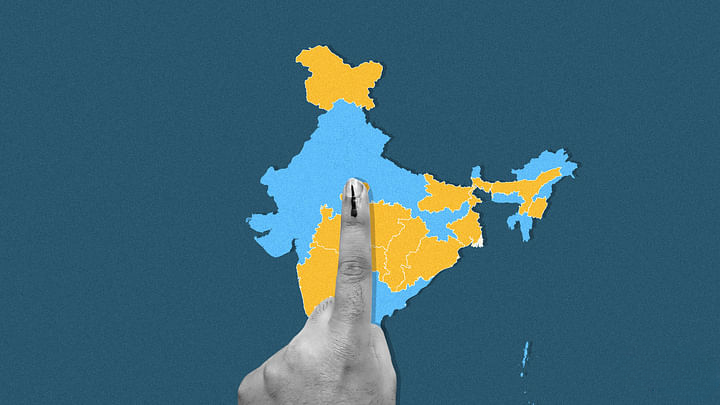
- 03 Apr 2024
Why is it in the News?
The Election Commission (EC) is extremely reasonable in matters that affect public welfare and the Government, and investigative agencies must respect that.
Context:
- Recent concerns raised by two former heads of the poll panel have shed light on the actions of tax agencies during election periods.
- In a democracy, free and fair elections are fundamental, safeguarding citizens' rights to freely choose their representatives without external pressure.
- Given the significance of preserving the integrity of the electoral process, it is crucial to scrutinize actions that could potentially disrupt this process.
- Such actions include the issuance of tax demands or IT notices to political parties, prompting a closer examination of precedents where the Election Commission intervened to maintain a fair and balanced electoral environment.
Impact of IT Notices on Opposition During Election Period:
- Disruption of Level Playing Field (LPF) Through Financial Interference: The issuance of IT notices by tax agencies during election campaigns may be interpreted as efforts to undermine the democratic process by targeting specific political entities.
- Freezing accounts, debiting funds, or issuing notices during this crucial period can significantly disrupt the financial resources and operational capacities of certain parties, thereby skewing the electoral landscape in favor of others.
- Such interference compromises the core principles of democracy and electoral fairness, eroding public confidence in the integrity of the electoral process.
- Influence on Voter Perception: The timing of these actions raises concerns about their potential impact on voter perceptions and election outcomes.
- Voters may perceive such actions as politically motivated or aimed at influencing the electoral results, casting doubts on the fairness and impartiality of the electoral process.
- Preserving the principles of neutrality, transparency, and fairness is vital in upholding democratic ideals and ensuring elections truly reflect the will of the people.
- Operational Hurdles: Raids and enforcement activities by tax agencies pose significant operational challenges for political parties, diverting their focus and resources away from election campaigning.
- Parties may find themselves compelled to address legal matters, respond to inquiries, and navigate tax regulations complexities, detracting from their ability to engage with voters and advocate their platforms effectively.
- Undermining Confidence in the Electoral Process: The perception that tax agencies target specific parties or candidates during elections can undermine public trust in the fairness and impartiality of the electoral process.
- Such actions may be viewed as politically driven attempts to sway election outcomes, fostering skepticism about the legitimacy of the electoral process and the credibility of election results.
- Impact on Democratic Participation: Financial and operational challenges resulting from enforcement actions can discourage democratic engagement and participation among voters.
- Perceived unfairness or bias in the electoral process may lead citizens to disengage from the democratic process, fostering disillusionment and apathy toward democratic participation.
Why Actions Against CMs, Congress Can Wait?
- Traditionally, the Election Commission (EC) has adhered to the principle of postponing any actions that can be deferred until after the conclusion of elections.
- It prompts a crucial question: would there be any significant harm in postponing these actions?
- In the current scenarios involving the arrest of two chief ministers and the issuance of IT notices, including the freezing of accounts of an opposition party, delaying these actions until after the elections would likely result in no irreparable harm.
- Conversely, proceeding with these actions during the election period could inflict irreparable damage on the two affected parties by severely hampering their electoral campaigns, both physically and financially.
Actions Taken by the Elections Commission (EC) Against Governments and Central Agencies to Preserve Level Playing Field (LPF):
- Addressing Bias or Partiality: The EC has actively intervened to uphold fair and impartial elections, particularly in cases where central agencies faced allegations of bias or partiality.
- During the 2019 Lok Sabha elections, the EC urged the Enforcement Directorate (ED) to maintain impartiality following complaints from opposition parties about the perceived misuse of central agencies by the ruling party.
- Emphasizing Neutrality and Impartiality: The EC consistently underscores the principles of neutrality, impartiality, and non-discrimination in all enforcement actions during election periods.
- Its commitment to maintaining the integrity of the electoral process is evident through its insistence on fair treatment for all parties involved.
- Balancing Public Welfare with Electoral Neutrality: While ensuring fairness, the EC also demonstrates pragmatism in matters affecting public welfare.
- For instance, during state elections, it permitted the Ministry of Petroleum and Natural Gas to announce a national reduction in petrol prices, deeming it beneficial to the wider public interest.
- However, proposals such as increases in minimum support prices of certain foodgrains, perceived as potentially influencing voters, are disallowed during election periods to maintain electoral neutrality.
- Promoting Transparency in the Electoral Environment: The EC's interventions aim to curtail the misuse of office by political leaders and ministers, fostering a transparent and equitable electoral environment.
- The Model Code of Conduct (MCC) serves as a pivotal instrument in this endeavor, imposing restrictions on ruling parties to prevent undue advantages.
- Providing Guidance to Political Entities: While primarily focusing on individuals, the EC also advises political parties to ensure adherence to the code of conduct.
- For example, during overlapping budget sessions and election periods, state governments are encouraged to adopt a "vote on account" approach to avoid contravening the MCC with new schemes or projects.
- EC's Influence in Goa By-Election, 2012: An illustrative instance of the EC's influence is its intervention in a by-election in Goa in 2012, where the Chief Minister intended to induct a probable candidate into the Council of Ministers before the election.
- Despite possessing constitutional authority, the Chief Minister deferred the induction upon the EC's advice, acknowledging the moral authority of the Model Code of Conduct.
- This exemplifies the delicate balance between various authorities in a parliamentary democracy, reinforcing India's electoral processes as models of integrity and fairness globally.
Conclusion
The Election Commission's proactive engagement with central agencies, advocating for the postponement of actions such as raids, freezing of accounts, and issuance of tax demands until after elections, serves as a cornerstone in upholding the principles of free and fair elections.
By intervening in such matters, the Election Commission reinforces its commitment to ensuring an impartial electoral process, reassuring voters of the integrity and fairness of elections.
Ultimately, safeguarding the integrity of elections is paramount to preserving democracy and fostering public trust in the electoral process.
Many elections, AI’s dark dimension
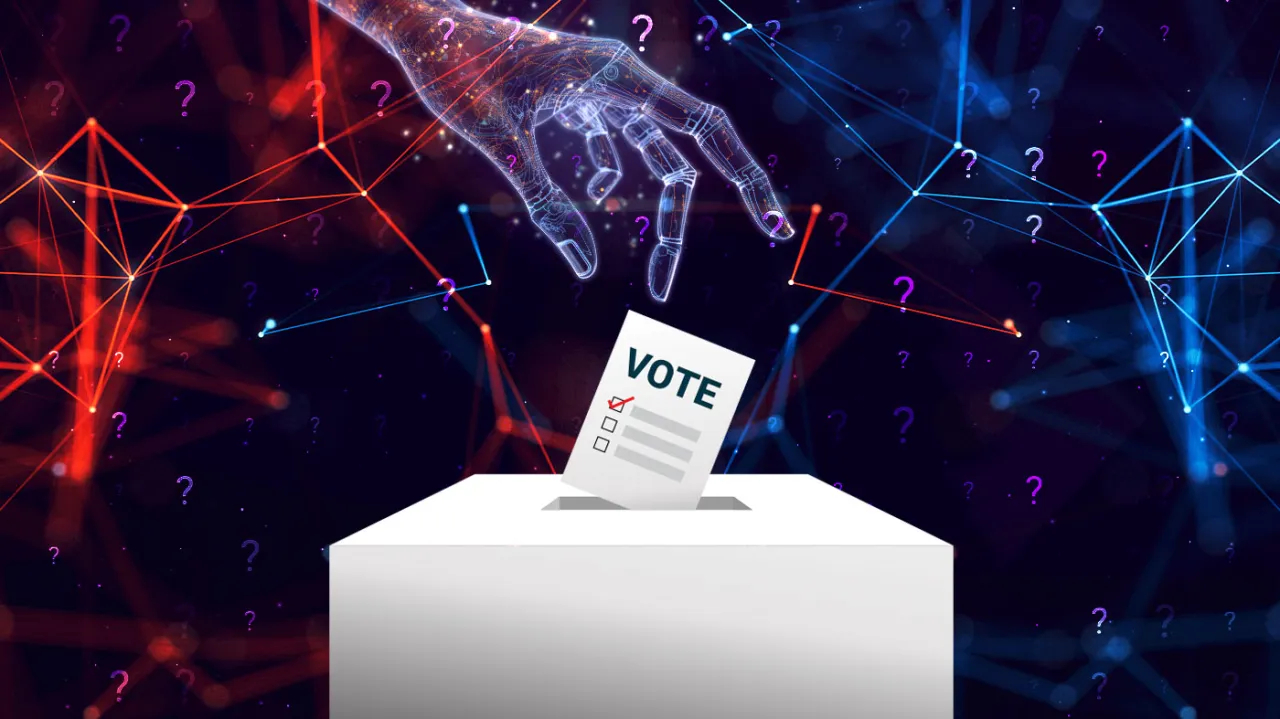
- 18 Mar 2024
Why is it in the News?
With a series of elections to be held across the world in 2024, the potential of AI to disrupt democracies cannot be dismissed.
Context:
- The rapid advancement of Artificial Intelligence (AI) marks a significant turning point in human history.
- With the rise of Generative AI (GAI), the possibility of achieving Artificial General Intelligence (AGI) becomes increasingly feasible, raising questions about its potential to mimic human abilities.
- Thus, exploring AI's profound influence on human life, particularly within electoral contexts and broader societal realms, is imperative.
What is Generative AI (GAI)?
- Generative AI, short for Generative Artificial Intelligence, represents a branch of artificial intelligence focused on creating new content rather than simply processing or analyzing existing data.
- Unlike traditional AI systems, which are designed to recognize patterns or make predictions based on historical data, generative AI models have the capability to generate new data that resembles real-world examples.
- These models work by learning patterns and structures from large datasets and then using that knowledge to create new content.
- They can produce various types of content, including images, text, audio, and even video.
- For example, a generative AI model trained on a dataset of human faces can generate realistic-looking images of faces that have never existed before.
- They can produce various types of content, including images, text, audio, and even video.
- One of the key technologies behind generative AI is deep learning, particularly a type of neural network called a generative adversarial network (GAN).
- In a GAN, two neural networks are pitted against each other: a generator and a discriminator.
- The generator creates new data samples, while the discriminator tries to distinguish between real and fake data.
- Through this adversarial process, the generator learns to produce increasingly realistic content.
- Generative AI has a wide range of applications across various industries.
- In the field of art and design, it can be used to generate new artwork, music, or even fashion designs.
- In entertainment, it can create realistic characters and environments for video games and movies.
- In healthcare, it can generate synthetic medical images for training diagnostic algorithms.
- However, the technology also raises ethical concerns, such as the potential for misuse, copyright issues, and the creation of fake content.
The Role of Artificial Intelligence (AI) in Shaping Electoral Landscapes:
- A Transformative Influence- AI's Ascendancy in Politics: The integration of artificial intelligence (AI) into electoral processes represents a profound transformation in global political dynamics.
- As nations gear up for elections, the incorporation of AI technologies introduces new variables that require a reassessment of conventional campaign methodologies and voter outreach strategies.
- In the context of upcoming elections, including India's extensive seven-phase general election, AI emerges as a decisive factor influencing electoral trajectories.
- The deployment of Generative AI, with its ability to conduct dynamic simulations and replicate real-world interactions, presents unprecedented opportunities and challenges for political stakeholders and the electorate.
- Harnessing AI for Campaign Innovation and Voter Engagement: Political entities and candidates are leveraging AI-driven tools to analyze vast datasets, craft targeted messaging, and optimize campaign blueprints.
- AI-powered predictive analytics empower parties to pinpoint swing voters, tailor messages to specific demographics, and deploy resources more precisely.
- Additionally, AI-enabled sentiment analysis of social media platforms furnishes real-time insights into voter attitudes and emerging concerns, informing campaign narratives and responsiveness strategies.
- Moreover, AI's impact extends beyond campaign frameworks to encompass voter engagement and mobilization endeavors.
- Through AI-driven chatbots, personalized interactions with voters are facilitated, addressing inquiries, disseminating information, and fostering voter participation.
What are the Concerns Regarding AI's Impact on Electoral Integrity?
- Challenges Posed by Deep Fakes: The expanding presence of AI within electoral arenas prompts apprehensions regarding its implications for democratic processes and the integrity of elections.
- The emergence of 'Deep Fake' technology, capable of generating convincingly realistic yet fabricated audio, video, and textual materials, presents a formidable obstacle in identifying and combatting misinformation and disinformation campaigns.
- Deep fakes produced by AI possess the capacity to deceive voters, manipulate public opinion, and erode trust in democratic institutions, thus distorting the integrity of electoral outcomes.
- Impact on Public Discourse and Decision-making: Moreover, the utilization of AI-powered algorithms in social media platforms for content curation and recommendation purposes raises concerns regarding filter bubbles, echo chambers, and algorithmic bias.
- These algorithms, driven by AI, may inadvertently amplify divisive content, perpetuate existing biases, and contribute to the segmentation of public discourse, consequently influencing voter perceptions and decision-making processes.
What are AI Influences its challenges, and Mitigation Strategies?
- As artificial intelligence (AI) permeates various spheres of society, including electoral contexts, addressing the concept of AI influence becomes increasingly critical.
- AI influence refers to the ability of AI-driven tactics to shape human behavior and decision-making processes, often without individuals' explicit awareness or consent.
- Challenges in Addressing AI Influence: A primary challenge in addressing AI influence is mitigating its impact on electoral dynamics.
- AI-powered algorithms can analyze extensive data sets to predict and influence voter behavior, potentially affecting electoral outcomes in ways that may not align with democratic principles or voter preferences.
- To counter this, safeguards must be implemented to prevent undue AI-driven influence on electoral processes and outcomes.
- Promoting Transparency and Accountability: Transparency and accountability are crucial in addressing AI influence.
- Electoral authorities and policymakers should establish clear guidelines and regulations governing the use of AI in political campaigns and voter engagement efforts.
- This includes mandates for disclosing the use of AI-driven algorithms, data sources, and methodologies in campaign strategies, enhancing public awareness and understanding of AI's role in elections.
- Protecting Democratic Values: Efforts to combat AI influence should prioritize safeguarding democratic values and electoral integrity.
- Measures must be implemented to detect and mitigate AI-driven manipulation, such as disinformation campaigns, deep fakes, and algorithmic bias.
- Collaborative approaches involving electoral authorities, technology firms, civil society organizations, and academia are essential to develop effective tools and techniques for detecting and countering AI-driven threats to electoral integrity.
- Empowering Voter Literacy: Promoting media literacy and digital literacy among voters is crucial for combating AI influence.
- By equipping voters with the skills to critically evaluate information sources, distinguish fact from fiction, and identify manipulation tactics, individuals can resist the influence of AI-driven propaganda and make informed voting decisions.
- Educational initiatives, public awareness campaigns, and media literacy programs are vital for enhancing voter resilience against AI-driven misinformation and manipulation.
Additional Measures for Ensuring Electoral Integrity:
- Incorporating Ethical Guidelines into AI Governance: Furthermore, the ethical dimensions of AI governance should inform the development and application of AI technologies within electoral contexts.
- Ethical AI governance frameworks should prioritize principles such as fairness, transparency, accountability, and adherence to democratic values.
- This entails conducting comprehensive risk assessments, ensuring transparency and explainability in algorithms, and establishing mechanisms for independent oversight and accountability.
- Adopting Proactive Strategies: Policymakers, electoral authorities, and civil society actors should embrace proactive strategies to uphold electoral integrity and democratic principles in the age of AI.
- Implementing robust regulatory frameworks, transparency mandates, and oversight mechanisms is crucial for mitigating the risks associated with AI-driven manipulation and disinformation campaigns.
- Furthermore, investments in digital literacy initiatives and media literacy programs can empower voters to critically assess information sources, distinguish between fact and fiction, and resist manipulation efforts.
Way Forward:
- The risks associated with AI pose a substantial threat, surpassing concerns regarding biases in its design and development.
- AI systems inherently tend to manifest adversarial traits, for which effective mitigation strategies have yet to be fully realized.
- Beyond electoral implications, India's position as a digital frontrunner necessitates a cautious approach towards AI adoption, recognizing both its potential advantages and disruptive capabilities.
- While AI offers numerous benefits, it is imperative for the nation and its leaders to acknowledge its potential for malevolence.
- India's prominence in digital innovation presents both opportunities and challenges, as the advancement of AI, including AGI, brings both advantages and risks.
- Addressing the complexities of AI policy requires amplifying democratic voices and resisting the tendency to cede policymaking authority to a select few tech conglomerates.
Conclusion
The emergence of AI marks a significant milestone in human evolution, impacting electoral dynamics and social harmony in profound ways. While AI offers remarkable progress, it demands careful oversight to minimize its disruptive effects and uphold democratic values. As we venture into the realm of AI, wise decision-making and forward-thinking are essential to steer toward a future characterized by ethical AI governance and conscientious innovation.
Model Code of Conduct comes into force: Lok Sabha Elections 2024
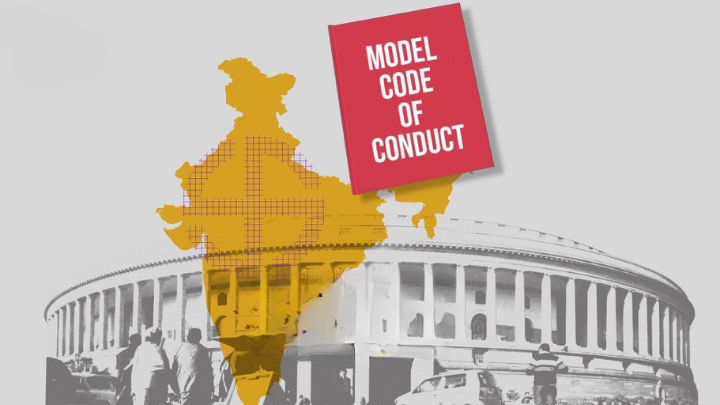
- 16 Mar 2024
Why is it in the News?
Recently, the Election Commission of India (ECI) announced that the country would vote in seven phases from April 19 to June 1 and the results will be announced on June 4. With this, the Model Code of Conduct (MCC) comes into effect.
What is the Model Code of Conduct (MCC)?
- The Model Code of Conduct (MCC) is a set of guidelines published by the Election Commission of India (EC) for political parties and candidates to set standards of conduct during the election campaign and polling.
- It also explains how parties can lodge complaints to the EC observers in case of dispute and instructs how the Ministers of the parties in power must conduct themselves when the MCC is in force.
- In 2019, a new addition regarding election manifestos was added, instructing parties to not issue promises which were ‘repugnant to the ideals of the Constitution’.
Is the Model Code of Conduct (MCC) Legally Binding?
- The MCC evolved as part of the ECI’s drive to ensure free and fair elections and was the result of a consensus among major political parties.
- It has no statutory backing.
- Simply put, this means anybody breaching the MCC can’t be proceeded against under any clause of the Code.
- Everything is voluntary.
- The EC uses moral sanction or censure for its enforcement.
- The ECI can issue a notice to a politician or a party for an alleged breach of the MCC either on its own or based on a complaint by another party or individual.
- Once a notice is issued, the person or party must reply in writing, either accepting fault and tendering an unconditional apology or rebutting the allegation.
- In the latter case, if the person or party is found guilty subsequently, he/she can attract a written censure from the ECI, something that many see as a mere slap on the wrist.
- However, several actions are listed as ‘electoral offenses’ and ‘corrupt practices’ under the Indian Penal Code (now known as Bharatiya Nyaya Sanhita) and the Representation of the People Act, 1951 such as:
- Causing tension between castes, religious or linguistic communities
- Appealing to caste or communal feeling to secure votes
- Using places of worship for election propaganda
- Bribing/intimidating/impersonating voters
- Canvassing within 100 meters of polling booths
- Transporting voters to and from polling stations
- Disrupting public meetings
- Serving or distributing liquor on polling day
- Holding public meetings 48 hours before the closing of polls
- These actions will attract appropriate punishment as per these laws.
Previous Model Code of Conduct ‘Violations’:
- During the 2023 Madhya Pradesh Assembly elections, Priyanka Gandhi Vadra was questioned by the ECI for alleging that Prime Minister Narendra Modi favored his "big industrialist friends" during an election rally.
- In 2017, both BJP and Congress accused each other of violating the MCC during the Gujarat polls.
- In 2014, Amit Shah and Azam Khan were banned from campaigning by the ECI during the Lok Sabha polls under Article 324 of the Constitution for inflammatory speeches, which was lifted after they apologized and pledged to follow the Code.
When Does MCC Come Into Force and End?
- The MCC comes into force immediately when the election schedule is announced by the Election Commission and remains in operation till the election process is complete, i.e. results are announced.
- The MCC applies to all elections to the Lok Sabha and State Assemblies.
- It is also applicable for State Legislative Council elections from Local Bodies, and Graduates’ and Teachers’ Constituencies.
- It is enforced throughout India in case of General elections, and the State up for polls in case of Legislative Assembly elections.
Who Is Bound by It?
- All organizations, committees, corporations, and commissions (e.g. Transport authorities, Jal boards) funded wholly or partially by the Centre or State are bound by the MCC.
- While listed political parties and candidates are bound to follow the MCC, even non-political organizations that hold campaigns favoring a political party or candidate are bound to follow specific guidelines mentioned by the EC.
How is the MCC Enforced?
- Before holding polls for the General or State Assembly elections, the Election Commission issues guidelines to the government to shift out all officers including police who are posted in their home district, and who have completed/completed three out of four years in that district to ensure no interference.
- The MCC is then implemented by the newly appointed officials and nodal EC officers monitor compliance.
- No election campaigning is allowed within the constituency 48 hours before the close of polls.
What Restrictions Does the Model Code of Conduct Impose?
- The MCC contains eight provisions dealing with general conduct, meetings, processions, polling day, polling booths, observers, the party in power, and election manifestos.
- As soon as the code kicks in, the party in power, whether at the Centre or in the states, should ensure that it does not use its official position for campaigning.
- Hence, no policy, project, or scheme can be announced that can influence voting behavior.
- The party must also avoid advertising at the cost of the public exchequer or using official mass media for publicity on achievements to improve chances of victory in the elections.
- The code also says the ministers must not combine official visits with election work or use official machinery for the same.
- The ruling party cannot use government transport or machinery for campaigning.
- It should also ensure that public places such as maidans etc., for holding election meetings, and facilities like the use of helipads are provided to the opposition parties on the same terms and conditions on which they are used by the party in power.
- The issue of advertisement at the cost of the public exchequer in the newspapers and other media is also considered an offense.
- The ruling government cannot make any ad-hoc appointments in government, public sector undertakings, etc., which may influence the voters.
- Political parties or candidates can be criticized based only on their work record and no caste and communal sentiments can be used to lure voters.
- Mosques, Churches, Temples, or any other places of worship should not be used for election campaigns.
- Bribing, intimidating, or impersonation of voters is also barred.
- Holding public meetings during the 48 hours before the hour fixed for the closing of the poll is also prohibited.
- The 48 hours is known as “election silence”.
- The idea is to allow a voter a campaign-free environment to reflect on events before casting her vote.
What are the Guidelines for Poll Manifestos?
- Manifestos must not contain anything repugnant to the ideals enshrined in the Constitution.
- They must reflect the rationale for welfare scheme promises and indicate ways to meet the financial requirements for it.
- The manifesto documents must not be released during the prohibitory period (when MCC kicks in).
How are Violations Dealt With?
- Any complaint regarding elections should be brought to EC observers, the Returning Officer, the local magistrate, the Chief Electoral Officer, or the Election Commission itself.
- In response, any directions issued by the EC, Returning Officer, or District Election Officer shall be strictly complied with.
CAA Rules go against equality, federalism and India’s Constitution
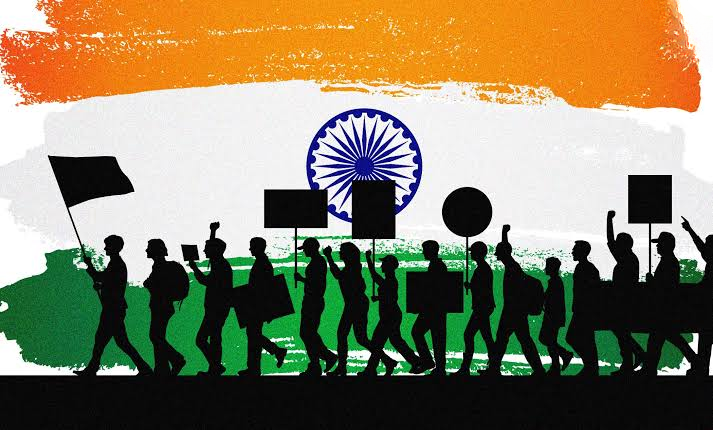
- 13 Mar 2024
Why is it in the News?
Although protecting persecuted individuals is commendable, the ideal solution is to grant refugee status to all, irrespective of their religious affiliation.
Context:
- India has been engaged in heated discussions over the Citizenship Amendment Act (CAA) since its inception in 2019.
- The recent issuance of Rules under the CAA by the Union government has sparked renewed debates concerning its impact on India's constitutional secularism.
- Amid these discussions, it is crucial to assess the CAA's provisions, their effects on citizenship, and the wider socio-political consequences they carry.
Concerns Surrounding the Citizenship Amendment Act:
- Selective Approach to Citizenship: The Citizenship Amendment Act (CAA) of 2019 amends India's Citizenship Act of 1955 and introduces a selective approach to granting citizenship.
- This selective approach is a significant point of contention, as it differentiates between individuals based on their religious identity.
- Preferential Treatment for Certain Religious Groups: The CAA expedites the citizenship process for undocumented immigrants belonging to Hindu, Sikh, Buddhist, Jain, Parsi, and Christian communities from Pakistan, Afghanistan, and Bangladesh.
- However, the Act explicitly excludes Muslims from these provisions, which has led to considerable debate and criticism.
- Violation of Secular Principles: Critics argue that the CAA violates the secular principles enshrined in India's Constitution.
- Secularism, a foundational tenet of India's democratic ethos, mandates that the state remain neutral in matters of religion and guarantee equal rights and protections to all citizens, regardless of their faith.
- Discriminatory Nature: The CAA's exclusion of Muslims from its purview has been perceived as discriminatory and runs counter to India's historical commitment to religious pluralism and tolerance.
- This discriminatory nature has sparked widespread protests and highlighted deep divisions within Indian society regarding citizenship, identity, and secularism.
- Upholding Constitutional Principles: The protests against the CAA underscore the importance of upholding constitutional principles and safeguarding the rights of all citizens, irrespective of their religious affiliation.
- This controversy serves as a reminder of the need for inclusive and non-discriminatory policies that respect the diversity of India's population.
Potential Implications of the Notified Rules under the Citizenship Amendment Act:
- Streamlined Citizenship Process: The notified Rules streamline the citizenship application process by providing clear procedures and documentation requirements.
- This standardization can potentially expedite the citizenship-granting process, allowing eligible individuals to secure legal status more efficiently.
- Lenient Proof Requirements: The Rules offer leniency in requirements for proof of nationality and residence, accepting various documents as evidence.
- This flexibility may enable more individuals to establish their eligibility for citizenship under the CAA.
- Centralisation of Authority: The notified Rules centralize the citizenship-granting process at the national level, with an empowered committee formed by the Union government now responsible for processing applications.
- This centralisation consolidates power at the national level, potentially reducing the role of local authorities in decision-making and grassroots-level accountability.
- Legal and Constitutional Challenges: The Rules are likely to face legal and constitutional challenges, particularly regarding their compatibility with India's constitutional principles and international legal standards.
- Critics argue that the CAA and its accompanying Rules violate the constitutional guarantee of equality before the law (Article 14) by discriminating based on religion.
- Contradictions and Regional Discontent: The implementation of the CAA has exposed internal contradictions within India's citizenship laws, particularly in the case of Assam.
- The discrepancy between Section 6A of the Citizenship Act, 1955, and the provisions of the CAA has fuelled discontent among local communities and complicated the citizenship landscape.
- Overall, the notified Rules under the Citizenship Amendment Act have significant implications for the citizenship-granting process, the balance of power between national and local authorities, and the interpretation of constitutional principles.
- As the legal and societal debates surrounding the CAA continue, these implications will likely shape the discourse on citizenship and belonging in India.
Moving Toward Inclusive Solutions: Addressing the Concerns Raised by the Citizenship Amendment Act:
- To address the concerns raised by the Citizenship Amendment Act (CAA) and its accompanying Rules, it is crucial to adopt a more inclusive approach that aligns with international humanitarian norms and India's commitment to secularism.
Here are some steps that can be taken:
- Inclusive Protection for Persecuted Individuals: Instead of granting citizenship based on religious affiliation, India should consider offering refugee status to all persecuted individuals, regardless of their religion.
- This approach would be in line with international humanitarian norms and would uphold the principle of secularism enshrined in India's Constitution.
- Ratification of International Conventions: Ratifying international conventions such as the Geneva Convention Relating to the Status of Refugees would demonstrate India's commitment to protecting vulnerable populations and ensuring their rights.
- This step would also bring India in line with global standards for refugee protection.
- Reevaluation of the Citizenship Amendment Act: Given the concerns surrounding the CAA's compatibility with constitutional principles and its potential for discrimination, it is essential to reevaluate the Act's provisions.
- This process should involve a thorough examination of the CAA's impact on vulnerable communities and its alignment with India's democratic values.
- Upholding Constitutional Values: To ensure that the CAA and other legislation adhere to India's core values, it is crucial to reaffirm the principles of equality, non-discrimination, and secularism as outlined in the Constitution.
- Policies and laws should be crafted to uphold these principles and protect the rights of all individuals, irrespective of their religious affiliation.
- By taking these steps, India can work toward addressing the concerns raised by the Citizenship Amendment Act and foster a more inclusive approach to citizenship that aligns with the nation's historical commitment to diversity and pluralism.
Centre notifies implementation of Citizenship Amendment Act Rules
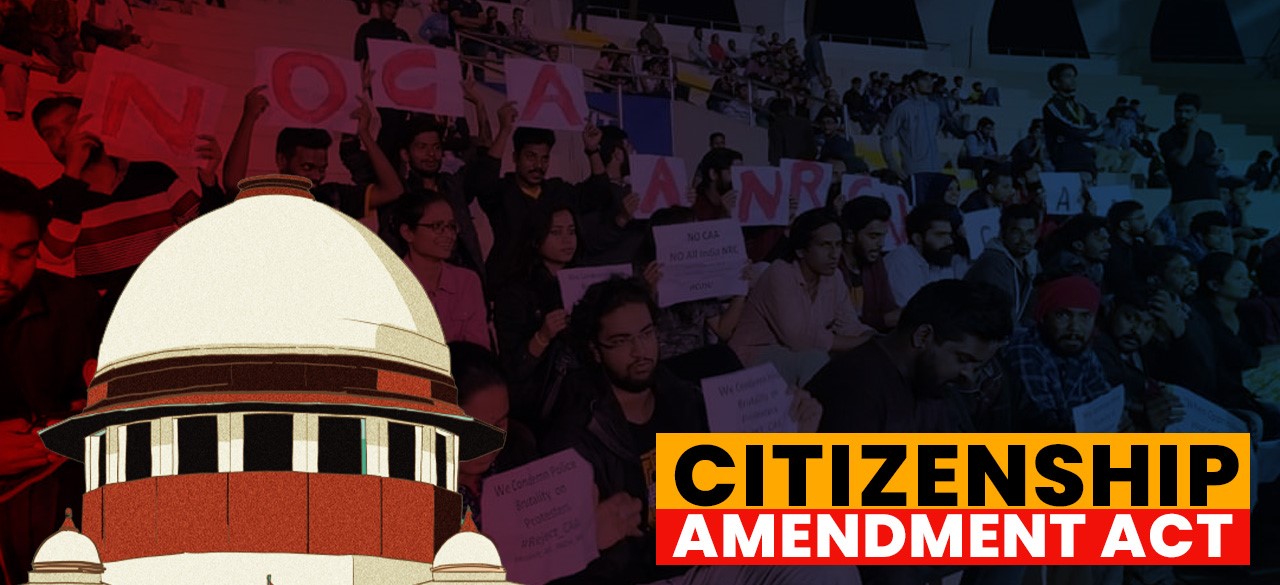
- 12 Mar 2024
Why is it in the News?
More than four years after Parliament passed The Citizenship (Amendment) Act, 2019, the Ministry of Home Affairs on Monday notified the Rules to implement the law.
Context:
- The Citizenship Amendment Act (CAA) of 2019 amended the Citizenship Act of 1955 to provide a pathway to Indian citizenship for migrants belonging to Hindu, Sikh, Buddhist, Jain, Parsi, or Christian communities who entered India before December 31, 2014, from Pakistan, Afghanistan, or Bangladesh.
- The law was enacted amidst nationwide protests, particularly in Assam, and was officially notified on January 10, 2020.
- However, the implementation of the CAA was delayed due to the absence of accompanying rules and regulations.
- To address this issue, the Union government issued an order on May 28, 2021, empowering district collectors in 13 districts with significant migrant populations to accept citizenship applications from the groups specified in the 2019 amendment.
- The CAA has been a subject of controversy and criticism, with opponents arguing that it violates the secular principles of the Indian constitution by excluding Muslims from its purview.
- Supporters of the law contend that it offers relief to persecuted minorities from neighboring countries.
- As the rules for the CAA have now been put in place, its implementation is anticipated to be a significant development in the ongoing discussions surrounding citizenship and immigration in India.
About the Citizenship (Amendment) Act (CAA) 2019:
- The Citizenship (Amendment) Act (CAA) of 2019 is a significant amendment to India's Citizenship Act of 1955.
- It aims to provide a pathway to citizenship for Hindu, Sikh, Parsi, Buddhist, Jain, and Christian immigrants from Pakistan, Afghanistan, and Bangladesh who have faced religious persecution and have been residing in India without documentation.
- The CAA reduces the residency requirement for citizenship from 11 years to 5 years for eligible immigrants who entered India before December 31, 2014.
- The Act also includes provisions for the cancellation of Overseas Citizen of India (OCI) registration in cases where the individual has violated any provision of the Citizenship Act or other applicable laws.
- The CAA applies to individuals who have been compelled to seek shelter in India due to religious persecution.
- However, the Act does not apply to certain areas, such as regions covered by the Sixth Schedule of the Indian Constitution (which deals with autonomous tribal-dominated regions in Assam, Meghalaya, Tripura, and Mizoram) and states with an inner-line permit regime (Arunachal Pradesh, Nagaland, and Mizoram).
- The implementation of the CAA has faced delays due to opposition in several states, including Assam and Tripura.
- The Act has sparked protests and legal challenges, with critics arguing that it violates the secular principles of the Indian Constitution and excludes certain persecuted groups, such as the Rohingya from Myanmar, Tibetan Buddhists from China, and Tamils from Sri Lanka.
- The CAA has been a subject of intense debate, with supporters claiming it offers relief to persecuted minorities and opponents asserting that it discriminates against Muslims and undermines India's secular fabric.
- The Supreme Court is currently considering multiple petitions challenging the constitutional validity of the CAA.
Citizenship Amendment Rules, 2024:
- The Citizenship Amendment Rules, 2024 lay out a clear process for eligible refugees from Pakistan, Afghanistan, and Bangladesh to seek Indian citizenship through registration or naturalization.
- The process begins with the submission of an application, along with an affidavit confirming the accuracy of the information provided and an affidavit from an Indian citizen vouching for the applicant's character.
- Applicants must also provide a declaration of their familiarity with one of the languages listed in the Eighth Schedule of the Indian Constitution.
- The application is to be submitted electronically to an empowered committee via a district-level committee, as notified by the central government.
- The district-level committee, headed by a designated officer, is responsible for verifying the submitted documents and administering the oath of allegiance to the applicant.
- Supporting documents that must be provided by applicants include:
- A passport issued by the governments of Pakistan, Afghanistan, or Bangladesh
- A birth certificate
- Any form of identity document
- Land or tenancy records; or any document proving that the applicant's parents, grandparents, or great-grandparents were citizens of one of the three countries.
- These documents remain valid even beyond their expiration dates.
- Proof of entry into India before December 31, 2014, is also required.
- Acceptable supporting documents for this include:
- visa and immigration stamp
- A registration certificate from the Foreigners Regional Registration Officer (FRRO)
- A slip issued by the Census enumerators in India
- A government-issued license or certificate
- A permit in India (including a driving license
- Aadhaar number, or ration card), or a marriage certificate issued in India.
- Once an application is approved, the applicants will be issued a digital certificate, granting them Indian citizenship.
- These rules provide a structured pathway for eligible refugees from the specified countries to obtain citizenship in India, offering them a chance at a new beginning and a sense of belonging in their adopted homeland.
The Mains issues and challenges associated with the CAA of 2019:
- Legal challenge: The CAA has been challenged in the Supreme Court by the Indian Union Muslim League (IUML) and others on the grounds of discrimination and violation of fundamental rights.
- Right to equality: Critics argue that using religion as a criterion for citizenship eligibility violates Article 14 of the Constitution, which guarantees equality before the law and equal protection under the law.
- Targeting of Muslims: Concerns have been raised that the CAA, in conjunction with the National Register of Citizens (NRC) in Assam, may disproportionately affect Muslims and lead to their exclusion from citizenship.
- Secularism: The use of religion as a basis for citizenship is seen by some as a violation of the principle of secularism, which is a fundamental feature of the Indian Constitution.
- Conflict with Assam Accord: The CAA's cutoff date for determining citizenship contradicts the Assam Accord of 1985, which set a different date for identifying foreigners in the state, leading to protests and opposition in Assam and other northeastern states.
- Widespread protests: The CAA has sparked protests across India, reflecting the complexities and sensitivities surrounding the issue of citizenship and the challenge of balancing the needs of persecuted minorities with upholding constitutional principles and addressing regional concerns.
What is the Government’s Stand?
- The government's position on the Citizenship Amendment Act (CAA) is that Muslims have been excluded from the list of "persecuted" minorities because they constitute the majority in the Islamic countries of Pakistan, Afghanistan, and Bangladesh.
- According to the government, the CAA aims to provide citizenship to those who have faced religious persecution in these countries.
- However, this rationale is subject to scrutiny, as there are other persecuted minorities in these countries and elsewhere who have not been included in the CAA.
- For instance, Tamil Hindus in Sri Lanka, Rohingya Muslims in Myanmar, and minority Muslim sects like Ahmadiyyas and Hazaras in Pakistan and Afghanistan also face persecution in their respective countries.
- The exclusion of these groups from the CAA raises questions about the criteria used to determine which minorities are considered persecuted and eligible for Indian citizenship under the Act.
What’s Next?
- The court will have to look into two issues:
- Whether the special treatment given to the so-called “persecuted minorities” from the three Muslim-majority neighboring countries only is a reasonable classification under Article 14 of the constitution for granting citizenship, and
- Whether the state is discriminating against Muslims by excluding them.
- The Supreme Court has earlier held that the law has to clear two legal hoops to pass the equality test when it is challenged on the grounds of Article 14.
- First, any differentiation between groups of persons must be founded on an “intelligible differentia”, and
- Second, “that differentia must have a rational nexus to the object sought to be achieved by the Act”.
- The SC can strike down a classification if it is found to be arbitrary. The court recently struck down the electoral bonds scheme on the ground that it was “manifestly arbitrary” — that is, “irrational, capricious or without an adequate determining principle”.
Voters must know who funds political parties. This is the right that Supreme Court has protected
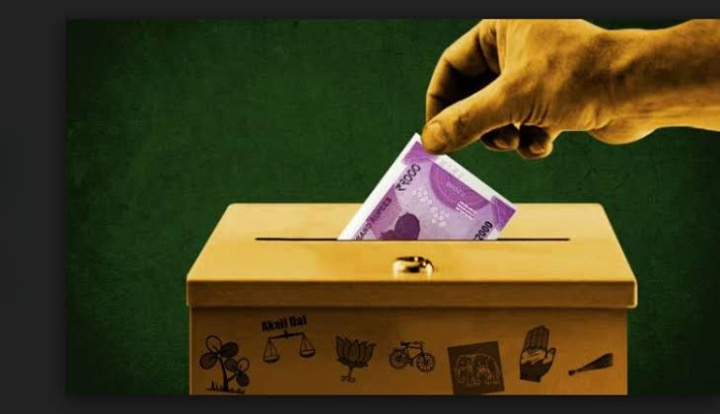
- 11 Mar 2024
Why is it in the News?
The Supreme Court of India has recently mandated the public disclosure of all pertinent information regarding corporate funding of political parties, with the State Bank of India and other entities directed to comply with the court's directive.
Context:
- The recent landmark ruling by the Supreme Court's Constitution Bench, led by the Chief Justice of India, represents a pivotal moment in Indian democracy.
- This ruling specifically addresses the legality of the Electoral Bond Scheme (EBS) initiated through the Finance Act of 2017.
- Beyond its immediate implications, the verdict underscores fundamental principles such as equality, transparency, and proportionality concerning corporate contributions to election funding.
What is the Supreme Court verdict on the Electoral Bond Scheme?
- Nullification of Electoral Bond Scheme: The Supreme Court declared the Electoral Bond Scheme (EBS) unconstitutional, citing concerns over unrestricted donations, anonymity of contributions via promissory notes, and exemption of corporate donors from disclosure obligations.
- This underscores the imperative of transparency in corporate election financing, aligning with constitutional rights outlined in Article 14 (equality) and Article 19(1)(a) (right to information).
- Immediate Cessation of Electoral Bonds and Disclosure Mandates: The Court mandated the immediate cessation of electoral bonds and directed all pertinent authorities to disclose relevant information dating back to April 12, 2019.
- The State Bank of India's request for an extension was met with skepticism, prompting a contempt petition against them for non-compliance.
- Guidelines on Legislative Passage via Money Bill Route: While the verdict didn't specifically address the Speaker's authority to classify bills as money bills, it offered guidance suggesting that not all legislative determinations qualify as financial or economic decisions.
- This challenges the presumption of constitutionality and underscores the need for a nuanced approach in evaluating bills passed via the money bill route.
What is the Reason Behind SC's Scrutiny of Electoral Bond Scheme (EBS)?
- Elimination of Donation Caps: The court closely examined the EBS due to its elimination of donation caps imposed on political parties, as outlined in the Finance Act 2017.
- This removal of restrictions allowed for unrestricted inflow of funds into electoral campaigns, posing a potential threat to the democratic principle of a level playing field.
- Anonymity of Donations via Promissory Notes: An area of concern highlighted by the court was the provision in the EBS allowing for anonymous donations to political parties through promissory notes issued by recognised banks.
- This mechanism raised significant issues regarding transparency and accountability, as it enabled substantial financial backing to political entities without disclosing the identity of the contributors.
- Exemption of Corporate Donors from Disclosure Requirements: The EBS faced scrutiny for exempting corporate donors from the obligation to disclose their contributions in balance sheets, a highly contentious feature.
- This exemption created opacity surrounding corporate funding of political parties, undermining the transparency necessary for a robust democratic process.
SC’s Analysis of the Proportionality Doctrine: Its Implications on Legislative Goals and the Restriction of FR
- Evolution of the Proportionality Doctrine: The judgment highlights the proportionality doctrine as a tool for self-discipline in constitutional judicial review, aimed at balancing governmental powers with individual rights
- Serving as a foundational aspect of constitutional discipline, it establishes parameters applicable to all governance institutions.
- Differentiation Between Manifest Arbitrariness and Reasonable Exercise of Power: A crucial distinction is drawn between manifest arbitrariness and the reasonable exercise of power, with the court emphasizing that restricting a fundamental right does not equate to abrogating it entirely.
- This distinction safeguards against arbitrary exercise of governmental authority, stressing the necessity for reasonable and proportionate limitations on rights.
- Legitimate Goals and Appropriate Means: Applying the proportionality test, the court scrutinizes the legislative objectives behind the Electoral Bond Scheme, mandating that any restriction on a fundamental right must serve a legitimate goal and utilize suitable means.
- Questions are raised regarding the legitimacy of curbing black money as a specific ground under Article 19(2), emphasizing the need for the state to justify its actions with reasonable objectives.
- Nexus Between Law and Stated Objectives: Introducing the concept of a reasonable nexus, the court holds that laws should demonstrate a rational connection between means employed and objectives sought to be achieved.
- This requirement ensures that restrictions on fundamental rights are directly related to their intended purpose, avoiding arbitrary infringements.
- Balancing Conflicting Rights: A notable development is the introduction of the double proportionality test, addressing conflicts between equal rights such as donor privacy and voter information and influence.
- The court mandates a secondary proportionality assessment to ensure that any infringement on one right is justified and not disproportionate in impact.
- Alternative Measures and Judicial Restraint: While advocating proportionality, the court suggests alternative measures to achieve legislative goals, such as setting up electoral trusts or imposing caps on corporate funding.
- Additionally, it exercises judicial restraint, respecting the autonomy and powers of the executive and legislative branches.
- Chief Justice M C Chagla's Warning: The judgment recalls Chief Justice M C Chagla's 1958 caution regarding the influential role of big business and money in democracy, highlighting a long-standing concern about corporate influence.
- Chagla's foresight underscores the judiciary's role in preventing improper or corrupt influence, emphasizing the need to safeguard democratic values.
- Historical Perspectives by the CJI: Chief Justice Chandrachud's historical perspective underscores the judiciary's responsibility to prevent improper influences on democracy, advocating for a proactive role in safeguarding democratic values.
- The court's assertion aligns with the idea of acting as a check against attempts to compromise the democratic process, particularly by powerful corporate entities.
Conclusion
The Supreme Court's nullification of the Electoral Bond Scheme is a staunch defense of democratic principles. By rejecting elements that undermine transparency, equality, and accountability, the court reaffirms core democratic values. This landmark ruling signifies a crucial juncture in India's legal narrative, establishing a precedent for safeguarding democracy against opaque financial influences.
Are States getting funds they are entitled from the Centre?
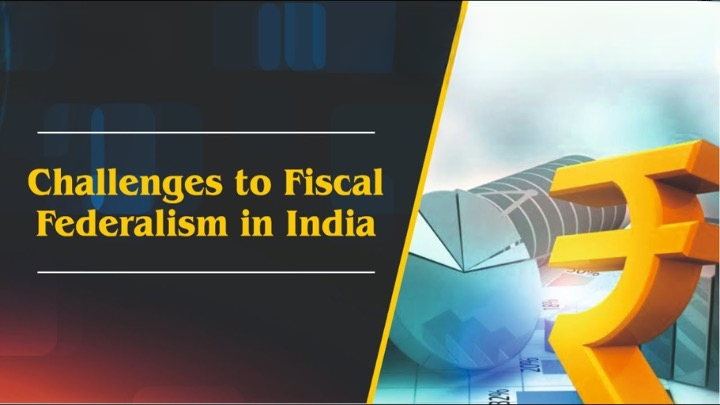
- 29 Feb 2024
Why is it in the News?
The recent agitations by the governments of Kerala and Karnataka, and the support extended by several State governments, have highlighted many disquieting issues in the practice of fiscal federalism in India.
Context:
- The recent protests by the governments of Kerala and Karnataka, supported by several other state governments, have brought to light several concerning issues regarding fiscal federalism in India.
- These protests underscore the pressing need for the newly constituted 16th Finance Commission (FC) to approach the matter with seriousness and innovation to address grievances related to growing vertical and horizontal inequalities in resource allocation.
What is Fiscal Federalism?
- Fiscal federalism refers to the distribution of financial authority and obligations among various tiers of government within a nation.
- It encompasses considerations like determining the roles and responsibilities of the central and state governments in delivering services, devising mechanisms for revenue generation and allocation among these entities, and establishing fair and efficient systems for transfers or grants distribution to promote equity and effectiveness.
Fiscal Federalism in India:
- The framers of the Constitution stipulated that the Central government would share its tax revenues with the states and provide grants from the Consolidated Fund based on a formula determined by the Finance Commission every five years.
- India operates under a three-tier federal tax system, delineating the powers of the Central government, state governments, and local bodies to levy taxes.
- The Central government possesses the authority to impose taxes on individual and corporate incomes, along with indirect taxes like central goods and services tax (CGST), integrated goods and services tax (IGST), and customs duties. Additionally, it collects surcharges and cesses on various taxes.
- State governments are responsible for levying state goods and services tax (SGST), stamp duties, land revenue, state excise duties, and professional taxes.
- Local bodies exercise jurisdiction over taxes such as property or house taxes, tolls, and utility taxes on services like electricity and water.
What are the Constitutional Provisions?
- The Constitution of India outlines the taxation authority of both the Union and States, categorizing them into the Union List and the State List respectively (as outlined in the Seventh Schedule under Article 246).
- Initially, there was no taxation provision in the Concurrent List.
- However, with the introduction of GST, the need for a concurrent taxation framework arose, leading to the insertion of Article 246A (as the 101st Amendment in August 2016).
- This amendment empowered the Union to legislate for CGST (Central GST) and IGST (Integrated GST), while the States were granted the authority to enact SGST laws.
- Article 270 of the Constitution outlines the mechanism for distributing net tax proceeds collected by the Union government among the Centre and the States.
What are the Concerns with the States?
- Growing Vertical and Horizontal Inequalities: States have raised concerns about increasing disparities both vertically, pertaining to the sharing of resources between the Union and States, and horizontally.
- The Union government's inclination to retain a larger share of its proceeds outside the divisible pool has exacerbated these inequalities.
- Retention of Proceeds: The Union government's practice of withholding a greater portion of its proceeds from the divisible pool has diminished the share allocated to States, contravening mandates from successive Finance Commissions.
- Proliferation of Cesses and Surcharges: Various cesses and surcharges, such as the Agriculture Infrastructure and Development Cess, have been introduced by the Union government, leading to an expansion of these revenue streams.
- This expansion has resulted in a larger portion of the gross tax revenue being excluded from net proceeds, thereby depriving States of their rightful share.
- Financial Exclusion of States: Over the period from 2009-10 to 2023-24, the Union government collected a substantial cumulative amount of ?36.6 lakh crore through cesses and surcharges, all of which remained unshared with the States.
- The imposition of cesses and surcharges has faced criticism from the Comptroller and Auditor General (CAG), further highlighting concerns about their impact on state finances.
Way Forward
- Rectifying disparities in resource sharing and addressing the proliferation of cesses and surcharges are critical imperatives for the 16th Finance Commission (FC).
- The FC should proactively address historical imbalances in vertical devolution by compensating States appropriately and ensuring accurate estimates of "net proceeds" in budgetary documents.
- Moreover, it should consider providing lump sum untied grants to States to offset shortfalls in devolution over the past decade.
- Simultaneously, legislative measures must be enacted by the Union government to impose strict limits on the collection of cesses and surcharges, ensuring their automatic expiration after a defined period and preventing their rebranding under different names.
- Furthermore, States must adhere to the principles of fiscal federalism by allocating sufficient resources to local bodies and promoting dynamic and transparent development initiatives at the grassroots level.
What is the Finance Commission?
- The Finance Commission is constituted by the President under Article 280 of the Constitution, mainly to give its recommendations on the distribution of tax revenues between the Union and the States and amongst the States themselves.
- Two distinctive features of the Commission’s work involve redressing the vertical imbalances between the taxation powers and expenditure responsibilities of the center and the States respectively and equalization of all public services across the States.
Functions of the Finance Commission:
- It is the duty of the Commission to make recommendations to the President as to the distribution between the Union and the States of the net proceeds of taxes which are to be:
- Divided between them and the allocation between the States of the respective shares of such proceeds;
- The principles which should govern the grants-in-aid of the revenues of the States out of the Consolidated Fund of India;
- The measures needed to augment the Consolidated Fund of a State to supplement the resources of the Panchayats in the State based on the recommendations made by the Finance Commission of the State;
- The measures needed to augment the Consolidated Fund of a State to supplement the resources of the Municipalities in the State based on the recommendations made by the Finance Commission of the State;
- Any other matter referred to the Commission by the President in the interests of sound finance.
- The Commission determines its procedure and has such powers in the performance of its functions as Parliament may by law confer on them.
Appointment of the Finance Commission and Qualifications for Members:
- The Finance Commission is appointed by the President under Article 280 of the Constitution.
- As per the provisions contained in the Finance Commission Act, 1951 and The Finance Commission (Salaries & Allowances) Rules, 1951, the Chairman of the Commission is selected from among persons who have had experience in public affairs, and the four other members are selected from among persons who:
- (a) are, or have been, or are qualified to be appointed as Judges of a High Court; or
- (b) have special knowledge of the finances and accounts of the Government; or
- (c) have had wide experience in financial matters and administration; or
- (d) have special knowledge of economics
How are the recommendations of the Finance Commission implemented?
- The recommendations of the Finance Commission are implemented as under:
- Those to be implemented by an order of the President:
- The recommendations relating to the distribution of Union Taxes and Duties and Grants-in-aid fall in this category.
- Those to be implemented by executive orders:
- Other recommendations to be made by the Finance Commission, as per its Terms of Reference
When was the first Commission Constituted and how many Commissions have been Constituted so far?
- The First Finance Commission was constituted under the chairmanship of Shri K.C. Neogy on 6th April 1952.
- 15th Finance Commissions have been Constituted so far at intervals of every five years.
- The 16th Finance Commission was constituted on 31 Dec 2023 with Shri Arvind Panagariya, former Vice-Chairman, NITI Aayog as its Chairman.
- The 16th Finance Commission is required to submit its recommendations by October 31st, 2025.
- However, the recommendations of the 15th FC cover the six years up to 31st March 2026.
Sustainable Practices and Urging for Eco-Friendly Elections in India

- 28 Feb 2024
Why is it in the News?
In August 2023, ahead of the Assembly elections in five States, the Election Commission of India (ECI) voiced its concern over the environmental risks associated with the use of non-biodegradable materials in elections.
Context:
- The Election Commission of India (ECI) has emphasized the environmental impact of traditional election materials, urging a shift towards eco-friendly practices, particularly given India's status as the world's largest democracy.
- India must prioritize environmental sustainability in its electoral procedures, recognizing successful eco-friendly initiatives in Kerala, Sri Lanka, and Estonia, and strategizing a comprehensive green transition involving diverse stakeholders.
Why Conducting Elections Require a Paradigm Shift?
- Unrecognized Environmental Impact of Elections: The emissions generated by campaign flights in the 2016 US presidential elections underscore the substantial carbon footprint linked to conventional election methodologies.
- Conventional election practices, marked by paper-based materials, energy-intensive rallies, and disposable items, contribute to environmental harm and affect public health.
- Given the colossal scale of India's elections, these concerns become more pressing, calling for a shift towards eco-friendly election processes.
- Startling Research Findings: Recent research from Estonia (2023) pinpoints transportation to and from polling booths as the primary contributor to carbon emissions in elections, closely followed by the operational footprint of polling booths.
- Adopting digital voting systems has the potential to slash the overall carbon footprint by as much as 40%.
What are Some Successful Models of Eco-Friendly Elections?
- Pioneering Initiatives in Kerala and Goa: During the 2019 general election, the Kerala State Election Commission spearheaded efforts to eliminate single-use plastic materials from campaign activities.
- Subsequently, the Kerala High Court enforced a ban on non-biodegradable materials, leading to the adoption of eco-friendly alternatives like paper posters and wall graffiti.
- Collaborative endeavors between government bodies and district administrations in Thiruvananthapuram ensured the implementation of green election practices, including training sessions for election workers in rural areas.
- In 2022, the Goa State Biodiversity Board showcased eco-friendly election booths crafted from biodegradable materials by local artisans during the Assembly elections.
- Innovative Strategies from Sri Lanka: In 2019, the Sri Lanka Podujana Peramuna (SLPP) party initiated the world's first carbon-sensitive, environmentally friendly election campaign.
- This groundbreaking campaign measured carbon emissions from campaign vehicles and electricity usage, offsetting them by planting trees across districts with public participation.
- By addressing the immediate carbon footprint of the campaign and raising awareness about the importance of forest cover, Sri Lanka set a notable example for sustainable election practices.
- Estonia's Digital Voting Model: Estonia pioneered digital voting as an online alternative, significantly enhancing voter participation while reducing environmental impact.
- The success of Estonia's approach underscores the feasibility of digital voting, complemented by stringent security measures, as an eco-friendly and voter-centric solution.
A Roadmap for Sustainable Green Elections:
- Political Leadership and Digital Campaigning: Political parties should enact legislation mandating eco-friendly election practices, integrating them into the Model Code of Conduct governing campaign activities.
- Encouraging the adoption of digital platforms for campaigning and door-to-door outreach can substantially reduce the carbon footprint associated with traditional public rallies.
- Incentivizing Sustainable Practices and Infrastructure Development: Offering incentives for political parties to use sustainable materials like natural fabrics and recycled paper in place of plastic and paper-based campaign materials, alongside supporting waste management and local artisans.
- Government investment in digital voting infrastructure, particularly in rural areas, ensures reliable internet access and accessible digital devices for all voters.
- Role of the Election Commission of India (ECI) with Government Backing: The ECI can advocate for digital voting systems, highlighting their environmental benefits and addressing security concerns through comprehensive measures.
- Public Awareness and Civil Society Engagement: Civil society organizations can lead public awareness campaigns, educating citizens about the environmental impact of traditional election methods and advocating for eco-friendly alternatives.
- Monitoring the implementation of green initiatives and advocating for transparency and accountability in the electoral process.
- Media's Advocacy Role: Media outlets can spotlight the environmental consequences of conventional election methods through investigative reporting and by showcasing successful eco-friendly initiatives.
- Global Collaboration for Sustainable Elections: Collaborating with countries like Sri Lanka and Estonia, which have successfully implemented eco-friendly election practices, to share insights and support international platforms for exchanging best practices in sustainable electoral initiatives.
Hurdles and Potential Solutions for Conducting Eco-Friendly Elections:
- Technology Barriers: Ensuring a seamless transition to digital voting demands robust technological infrastructure, particularly in remote regions where connectivity may be sparse.
- Upholding the integrity and security of digital systems is paramount, requiring comprehensive safeguards against cyber threats and manipulation to uphold public trust.
- Financial Impediments: Embracing eco-friendly materials and technologies entails significant initial investments, posing challenges for governments constrained by budgetary limitations.
- Competing priorities may hinder the allocation of funds toward sustainable electoral practices, despite their long-term environmental advantages.
- Cultural Shifts and Public Doubts: Cultural norms often associate physical polling booth presence with democratic participation, necessitating efforts to shift perceptions towards digital methods.
- Addressing public skepticism regarding new technologies, particularly concerns about security and reliability, requires proactive measures to build trust and confidence.
- Promoting Transparency and Accountability: The adoption of eco-friendly and digital strategies must be accompanied by transparent processes and robust auditing mechanisms.
- Establishing clear protocols for auditing new practices fosters accountability and addresses concerns about fairness and impartiality, enhancing public trust.
- Tackling Logistical Complexities: Executing large-scale electoral reforms demands meticulous planning and coordination across various stages.
- From sourcing eco-friendly materials to training personnel, addressing logistical challenges systematically is essential for smooth implementation.
Conclusion
Adopting environmentally conscious electoral practices represents not only an imperative for India but also a chance to lead by example on the global stage. Harmonizing high-level policies with ground-level efforts and engaging various stakeholders—political entities, Election Commissions, governments, citizens, media, and civil society—can position India as a trailblazer in conducting sustainable elections. This transformative approach not only integrates environmental responsibility but also reinforces the connection between ecological stewardship and the core tenets of democracy.
Upholding Constitutional Values: A Call Beyond Celebration
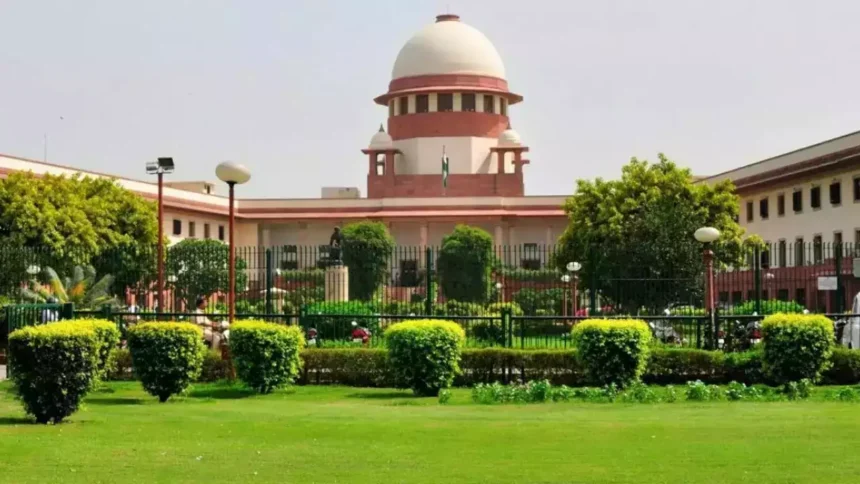
- 23 Feb 2024
Why is it in the News?
While SC judgments on electoral bonds and Chandigarh mayoral election are welcome, they ought not to merely be an episodic legitimisation of the façade of constitutionalism.
Recent Indian Supreme Court Rulings Questioning Government Actions:
- Invalidating the Electoral Bonds Scheme: The Supreme Court ruled the electoral bonds scheme unconstitutional, posing a challenge to a major government initiative concerning political funding.
- AAP Victory in Chandigarh Mayoral Election: The Court affirmed the Aam Aadmi Party's (AAP) victory in the Chandigarh mayoral race, overturning a local electoral outcome and directly challenging administrative actions in the election process.
Analyzing the Supreme Court's Balancing Act:
- Observe the Executive's Activities to Sustain Its Own Lawfulness: The Supreme Court of India, as the highest judicial authority, bears the weighty responsibility of interpreting and upholding the Constitution.
- In fulfilling this duty, it frequently engages in a precarious balancing act, striving to negotiate the intricacies of challenging executive decisions while safeguarding its own credibility.
- This intricate dance between the judiciary and the executive mirrors the broader constitutional framework, wherein checks and balances play a pivotal role in preventing the dominance of any single branch.
- Significance of Upholding Legitimacy: A fundamental aspect of this delicate balancing act is the imperative to avoid antagonizing the executive to the extent that it imperils the Court's legitimacy.
- The Court recognizes that maintaining this delicate equilibrium is indispensable for the institution’s continued existence.
- A collapse in the Court's credibility could undermine the very fabric of the constitutional order it endeavours to uphold.
- This consideration often influences the Court's deliberations, prompting careful consideration of the potential ramifications for its stature.
What are the Issues with the Court's Balancing Act Against the Executive?
- The Court grapples with the intricate balance between its roles as a legal arbiter and guardian of constitutional integrity, particularly when confronted with executive actions that may encroach upon constitutional principles.
- Recent decisions, like invalidating the electoral bonds scheme, highlight the Court's assertion in safeguarding democratic norms while cautiously avoiding confrontation to preserve its legitimacy.
- However, concerns arise when the Court's reluctance to challenge the executive overshadows its commitment to constitutional values, potentially legitimizing authoritarian agendas.
- Maintaining a facade of constitutionalism can lead to questions regarding the Court's consistent commitment to curbing executive power.
- The Court must uphold constitutional principles robustly, even if it means challenging the executive's authority uncomfortably, to ensure justice and democracy prevail.
- Success in this delicate balancing act lies not only in the decisions rendered but also in the Court's unwavering dedication to justice and democracy, despite formidable executive pressures.
Analysing Political Culture, Public Sentiment, and the Court's Influence:
- Disparity Between Legal Pronouncements and Public Opinion: Recent Supreme Court rulings against government initiatives, such as invalidating the electoral bonds scheme, fail to resonate as significant concerns within public sentiment, highlighting a disconnection between legal decisions and public perception.
- Normalization of Institutional Decline: The lack of public outcry over decisions challenging government actions reflects a worrying normalization of institutional decay, where issues like electoral malpractice are perceived as minor errors rather than threats to democracy.
- Aestheticization of Politics: Rather than prompting political concern, events like the Chandigarh mayoral race are often viewed as entertainment, illustrating a shallow engagement with political developments that overlook their implications for governance.
- Opposition Fragmentation and Political Dynamics: The Opposition's fragmented state impedes its ability to leverage judicial decisions against the government, weakening efforts to hold the ruling party accountable and allowing it to diminish the significance of adverse legal rulings.
- Courts' Influence on Political Culture: While the Court delivers commendable decisions, it operates within a political culture seemingly immune to the erosion of democratic norms, limiting its ability to shape broader perceptions.
- Legal victories, though sound, struggle to spark the necessary public mobilization to impact the prevailing political climate.
Way Ahead:
- Embracing Civic Courage and Critical Inquiry: Amidst institutional erosion and a dearth of political engagement, there is a pressing need for civic courage, critical thinking, and a commitment to holding the government to account.
- Instances of institutional impropriety, whether through overreach, repression, or communalisation, often fail to provoke a robust public response.
- The reluctance to critically engage with such issues perpetuates a political climate where even pro-democracy decisions are seen as rare anomalies rather than normative outcomes.
- As such, the public's reception of these rulings becomes pivotal in shaping their enduring impact.
- Calling for a Reassessment of Institutional Roles: Recent legal verdicts must be part of a broader effort to challenge the consolidation of authoritarianism and communalism.
- The prevailing political climate necessitates critically reassessing institutional roles in fostering genuine accountability.
Conclusion
Recent Supreme Court rulings, while potentially positive, warrant cautious consideration amid broader institutional challenges. Navigating issues like legitimacy balancing, fragmented opposition, and institutional normalization presents formidable obstacles. The enduring impact of these decisions hinges on both public reception and the Court's steadfast dedication to constitutional principles, determining whether they signify substantive progress or fleeting glimpses of hope amidst broader democratic challenges in India.
Having panchayats as self-governing institutions
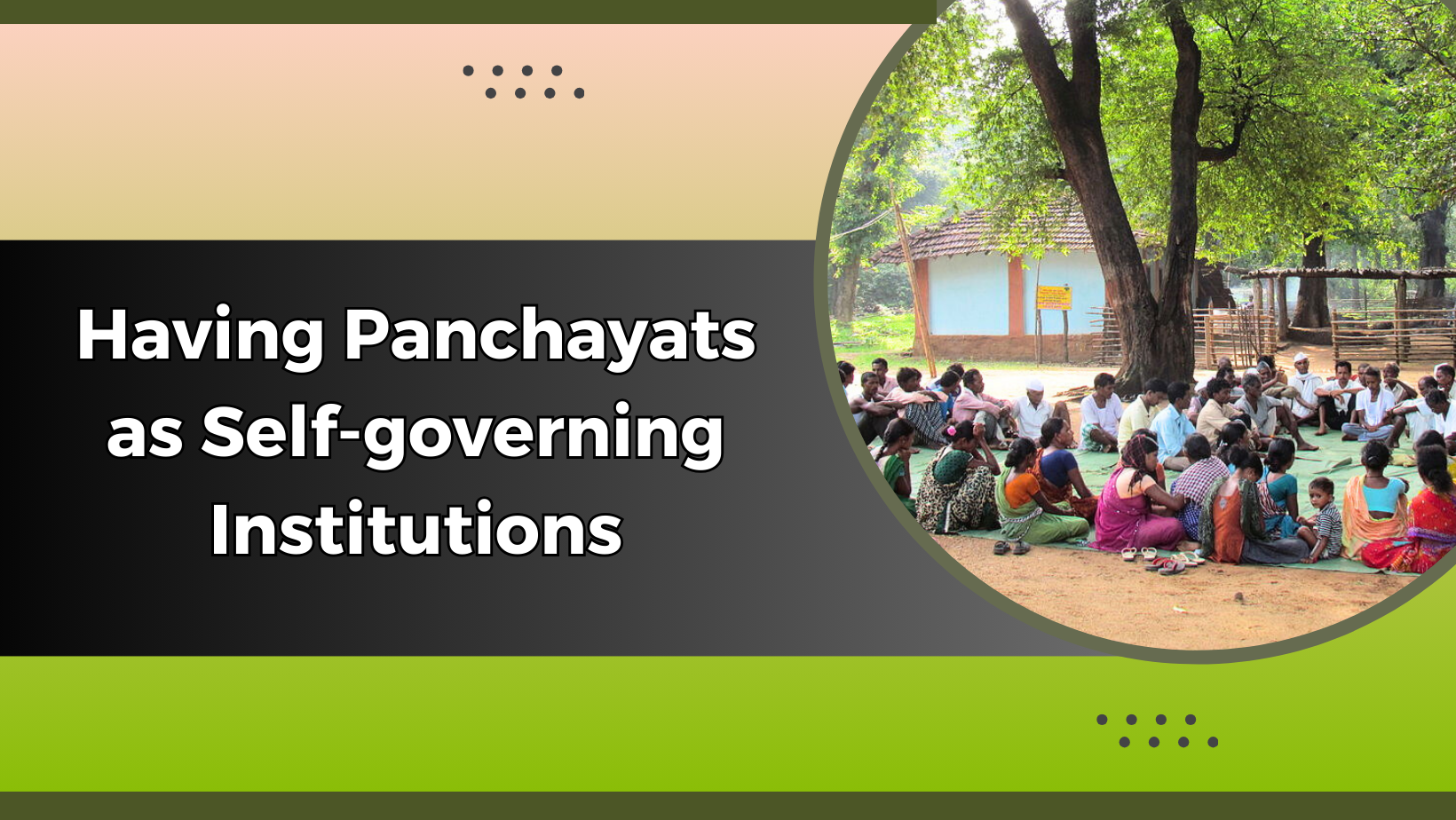
- 21 Feb 2024
Why is it in the News?
There is a need to educate elected representatives and the public on the significance and the need for panchayats to be able to survive on its own resources
Context:
- Three decades have passed since the enactment of the 73rd and 74th Constitutional Amendment Acts, designed to institutionalize local bodies as entities of local self-government.
- Presently, the degree of devolution in India's Panchayati Raj institutions exhibits variations among states, with some making substantial strides and others trailing behind.
- Therefore, there is a pressing need to scrutinize the fiscal devolution dimension, underscoring the pivotal role of state government commitment in enhancing the effectiveness of Panchayati Raj institutions at the grassroots level.
What is the Local Self Government?
- The system of local self-government, more commonly known as ‘panchayats’, had been established to empower the grassroots of democracy in India.
- Panchayats or local-self rule is a three-tier system in each state which has elected bodies at the village, taluk and district levels.
- The concept of panchayats has been present in Indian society since ancient times.
- Over the centuries the concept has undergone various changes and modifications and in the recent past has taken the form of panchayati raj institutions after decentralization reforms in the early 1990s.
- These institutions for grassroots-level democracy were formally included in the Constitution through the 73rd and 74th Amendments Act in 1993.
- The constitutional amendments also ensured the reservation of one-third of all elected positions for women in both rural and urban areas.
- Derived from the Central Act, various State Panchayati Raj Acts have incorporated provisions for taxation and revenue collection.
- The main idea of setting up local-self government institutions was to enable and empower the local people to manage their affairs by being a part of the decision-making process and participating in the implementation of policies in a more effective manner.
The Present State of Fiscal Devolution of Panchayats:
- Reliance on External Funds: The 73rd and 74th Constitutional Amendments Acts underscored the importance of fiscal devolution, urging Panchayati Raj institutions and urban local bodies to achieve financial self-sufficiency.
- These amendments explicitly stated the necessity for local bodies to generate their own revenues to reduce reliance on grants from higher levels of government.
- However, the current scenario indicates that Panchayati Raj institutions still heavily depend on external funding, with only 1% of their revenue originating from taxes.
- Panchayats' Struggle to Generate Revenue Through Taxation: The data highlights the challenge that, despite constitutional provisions, Panchayats are not effectively utilizing taxation as a primary revenue source.
- Merely 1% of revenue is generated through taxes, while a significant 80% is sourced from the Central government and 15% from the States.
- This disparity raises concerns about the commitment of state governments to decentralization and the overall efficacy of devolution initiatives implemented over the past three decades.
- Centralization of Financial Resources Despite Constitutional Emphasis on Fiscal Devolution: Despite the constitutional emphasis on fiscal devolution, the centralization of financial resources remains a persistent issue.
- Panchayats are envisioned as self-governing entities with the authority to raise their own revenue, yet the reality paints a different picture.
- The disproportionate distribution of revenue indicates a lack of fiscal empowerment at the grassroots level, undermining the fundamental principles of local self-government.
What are the Challenges Faced by Panchayati Raj Institutions in Revenue Generation?
- Dependency on Grants: The reliance on grants is exacerbated by the heightened allocations from Central Finance Commissions (CFC).
- A comparative analysis reveals a significant increase in grants disbursed through the 14th and 15th CFCs, amounting to ?2,00,202 crore and ?2,80,733 crore, respectively.
- This substantial influx of grants has inadvertently diminished incentives for generating own-source revenue.
- Panchayats, buoyed by augmented financial assistance, have gradually shifted focus away from revenue generation, fostering a culture of dependence on external funds.
- The Culture of Entitlement: A prevalent cultural mindset fosters resistance to taxation, with individuals expecting a range of services and benefits without contributing financially to the sustenance of Panchayats.
- This aversion to taxation arises from the belief that public services should be provided without imposing a direct financial burden on the local populace.
- Dilemma of Elected Representatives: Elected representatives, crucial to the functioning of Panchayati Raj institutions, grapple with their own set of challenges.
- There exists a tangible apprehension among these representatives that levying taxes might adversely affect their popularity and electoral prospects.
- This fear often results in hesitancy to take decisive steps towards revenue generation.
- Addressing this challenge necessitates targeted efforts to educate elected representatives about the enduring benefits of financial self-sufficiency and its positive impact on local development endeavours.
- Decline in Tax Collection: Tax collection, which stood at ?3,12,075 lakh in 2018-19, dwindled to ?2,71,386 lakh by 2021-2022.
- This downward trend raises concerns, signalling a waning commitment to financial autonomy at the local level.
- Similarly, non-tax revenue also experienced a decline from ?2,33,863 lakh to ?2,09,864 lakh during the same period.
- These patterns underscore the imperative for revitalized efforts in revenue generation and a departure from grant dependency.
Government's Efforts to Implement Constitutionally Mandated Fiscal Devolution:
- Establishment of an Expert Committee: To address this challenge, the Ministry of Panchayati Raj constituted an expert committee tasked with examining the own source of revenue (OSR) of rural local bodies.
- The committee's findings delineate various revenue-generating avenues accessible to Panchayati Raj institutions through State Acts.
- These mechanisms include property tax, land revenue cess, stamp duty surcharge, tolls, professional tax, advertisement tax, and user charges for essential services like water, sanitation, and lighting.
- While these avenues exist, their effective implementation is imperative for Panchayats to attain financial autonomy.
- Focus on Effective Taxation Mechanisms: The report underscores the significance of establishing an enabling environment for taxation, encompassing decisions on tax and non-tax bases, enactment of robust tax management and enforcement laws, etc.
- This strategic approach aims to empower Panchayats to fully leverage their revenue generation potential.
- While taxation constitutes a vital aspect of fiscal devolution, the report also acknowledges the potential of non-tax revenue streams, including Fees, rent, income from investment sales and hire charges,
- Along with revenue from innovative initiatives such as rural business hubs, commercial ventures, renewable energy projects, carbon credits, CSR funds, and donations.
- Diversification of revenue sources can bolster the financial resilience of Panchayati Raj institutions, reducing their reliance on grants.
The Role of Gram Sabhas:
- Gram sabhas have a significant role in fostering self-sufficiency and sustainable development at the grass-roots level by leveraging local resources for revenue generation.
- They can be engaged in planning, decision-making, and implementation of revenue-generating initiatives that range from agriculture and tourism to small-scale industries.
- They have the authority to impose taxes, fees, and levies, directing the funds towards local development projects, public services, and social welfare programmes.
- Through transparent financial management and inclusive participation, gram sabhas ensure accountability and foster community trust, ultimately empowering villages to become economically independent and resilient.
- Thus, gram sabhas need to promote entrepreneurship, and foster partnerships with external stakeholders to enhance the effectiveness of revenue generation efforts.
Way Forward:
- Education and Awareness: There is a pressing need to raise awareness among elected representatives and the public about the importance of revenue generation for developing Panchayats as self-sustaining institutions.
- Ultimately, the dependency syndrome for grants has to be minimised and in due course, panchayats will be able to survive on their own resources.
- Achieving this goal requires concerted efforts at all levels of governance, including the state and central levels.
- Promotion of Entrepreneurship: Gram Sabhas plays a crucial role in promoting entrepreneurship and fostering partnerships with external stakeholders to bolster revenue generation efforts.
- Encouraging entrepreneurial ventures within local communities can stimulate economic growth and reduce dependency on external funding.
- Collaboration and Support: Panchayats need to collaborate closely with higher tiers of governance and external stakeholders to enhance their revenue generation capabilities.
- This collaborative approach can facilitate the implementation of innovative initiatives and the efficient utilization of resources, thereby fostering financial self-reliance among Panchayats.
Supreme Court Strikes Down Electoral Bonds Scheme (Indian Express)
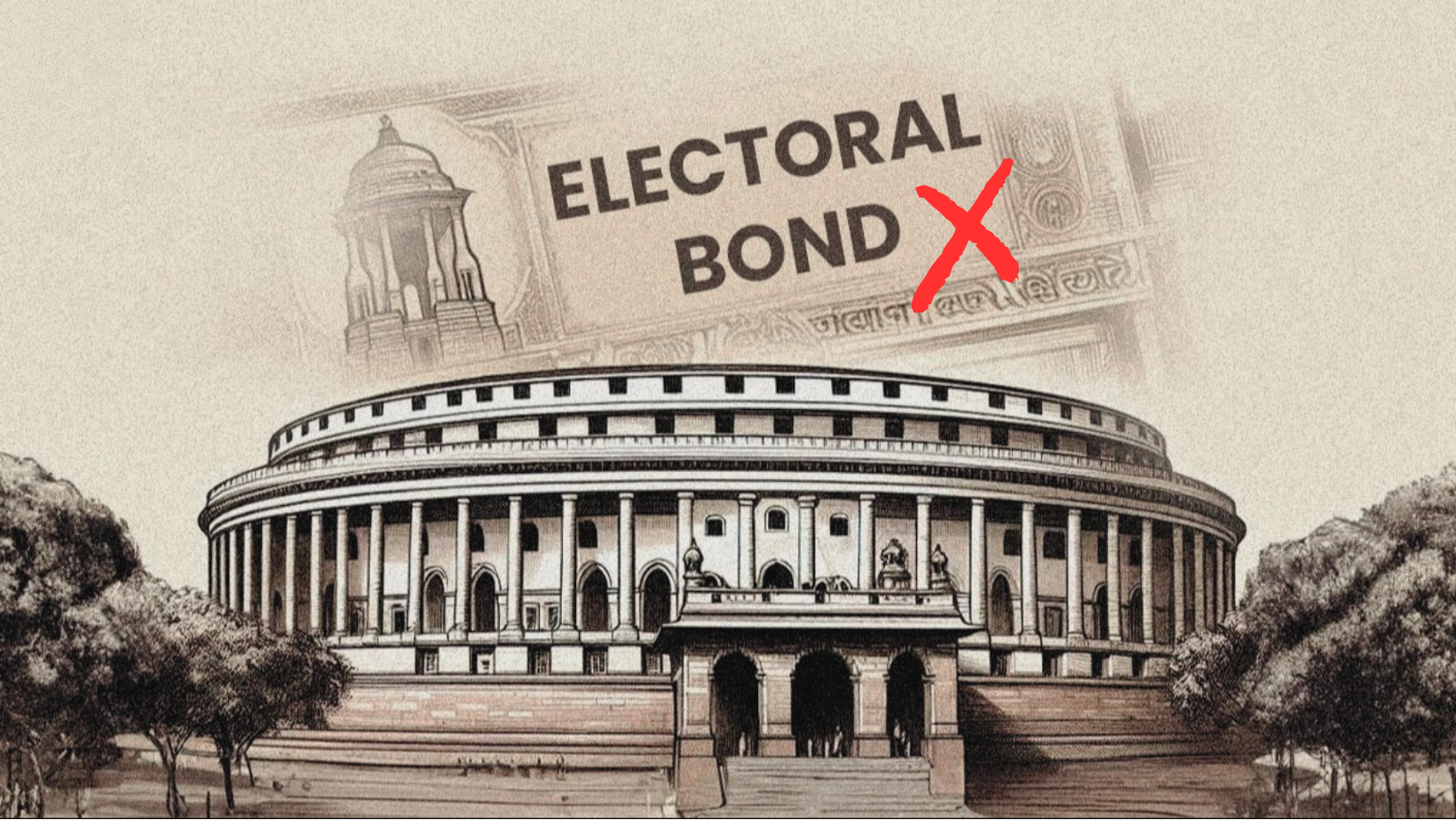
- 16 Feb 2024
Why is it in the News?
A five-judge Constitution Bench of the Supreme Court on Thursday unanimously struck down the Centre’s electoral bond scheme which facilitates anonymous political donations for being unconstitutional.
Context:
- A five-judge Constitution Bench of the Supreme Court on Thursday unanimously struck down the Centre’s electoral bond scheme which facilitates anonymous political donations for being unconstitutional.
- It underscored that the scheme violates the right to information under Article 19(1)(a) of the Constitution.
- Additionally, the Apex Court nullified several amendments introduced by the government in vital laws to streamline corporate donations to political parties.
- These amendments were incorporated through The Finance Act, 2016, and The Finance Act, 2017, preceding the implementation of the EBS in January 2018.
- The decision followed petitions from the Communist Party of India (Marxist) and NGOs Common Cause and ADR.
Key Highlights of the SC Judgement:
- Protection of Voters' Right to Information: The court emphasized that access to information regarding political party funding is crucial for informed voting.
- It argued that economic disparities lead to political inequalities, as financial resources often translate into greater political influence and access to policymakers.
- Thus, the Electoral Bonds Scheme (EBS) was deemed to violate Article 19(1)(a) of the Constitution, safeguarding freedom of speech and expression.
- Disproportionate Restrictions on Curbing Black Money: While acknowledging the importance of curbing black money, the court found the restrictions imposed by the EBS disproportionate.
- It clarified that restrictions on the Right to Information (RTI) should align with Article 19(2) of the Constitution, which outlines reasonable restrictions on freedom of speech and expression.
- Curbing black money was not deemed a valid reason for such restrictions.
- Right to Donor Privacy: The judgement delved into the notion of donor privacy, particularly regarding political contributions.
- It affirmed that the right to informational privacy encompasses political affiliation.
- However, it clarified that privacy does not extend to contributions aimed at influencing policies, emphasizing genuine political support over attempts to obscure motives, especially those of corporate entities.
- Limits on Corporate Political Contributions: The court declared unlimited political contributions by companies unconstitutional.
- It highlighted the disproportionate influence of corporations on the political process compared to individuals.
- Contributions from companies were viewed as business transactions aimed at securing benefits, which undermined the democratic process and equality in political participation.
What was the Existing System Before the Introduction of EBS?
- Before the enactment of The Finance Act 2016 and The Finance Act 2017, political funding operated under a different framework:
- Contribution Declarations: Political parties were mandated to declare all contributions exceeding Rs 20,000 without any exceptions.
- Detailed records of donations exceeding Rs 20,000 were required for taxation purposes.
- Limits on Corporate Donations: Companies were subject to a cap on their political contributions, restricted to a maximum of 7.5% of their average net profits from the preceding three years.
- Amendments through The Finance Act 2017: The Finance Act of 2017 brought significant changes to political funding regulations by amending key legislations like the Representation of the People Act, 1951, the Income-tax Act, 1961, and the Companies Act, 2013.
- These amendments introduced electoral bonds, altering the landscape of political party funding:
- Introduction of Electoral Bonds: Electoral bonds were introduced, effectively removing donation limits for companies.
- The requirement to declare and maintain records of donations made through electoral bonds was eliminated, streamlining the process of political contributions.
Supreme Court Verdict:
- The recent Supreme Court verdict has reinstated the legal framework that existed before the enactment of the Finance Act, 2017, impacting various statutes:
- Representation of the People Act, 1951: The original Section 29C of the Act mandated political parties to report all donations exceeding Rs 20,000, specifying whether they were from individuals or companies.
- Amendments introduced by the Finance Act, 2017 exempted donations via Electoral Bonds from this reporting requirement.
- The Supreme Court overturned this amendment, asserting that the original provision effectively balanced voters' right to information with donors' right to privacy.
- Companies Act, 2013: Section 182(1) previously limited corporate donations to political parties to 7.5% of average net profits over three years.
- Section 182(3) requires disclosure of all political contributions made by companies.
- Amendments removed the donation cap and reduced disclosure requirements.
- The Supreme Court struck down these changes, citing concerns about unchecked corporate influence in electoral processes.
- Income-tax Act, 1961: Section 13A(b) mandated political parties to maintain records of donations above Rs 20,000, including donor details.
- Amendments exempted Electoral Bond contributions from these reporting requirements and introduced new donation methods.
- The Supreme Court ruled that exempting Electoral Bond donations from record-keeping violated voters' right to information and struck down both amendments.
Supreme Court's Directives:
- Instructions to SBI: SBI is instructed to immediately halt the issuance of any further electoral bonds.
- Provide detailed information on electoral bonds purchased by political parties since April 12, 2019, to the Election Commission of India (ECI) by March 6.
- Furnish specifics including the purchase date, purchaser's name, and bond denomination for each transaction.
- Election Commission's Obligations: The ECI is directed to publish all received data from SBI on its official website by March 13, 2024.
- Return of Electoral Bonds: Electoral bonds within the 15-day validity period, yet to be encashed by political parties, must be returned.
- The issuing bank will then reimburse the amount to the purchaser's account.
Evaluation of the Latest Ruling:
- The recent Supreme Court ruling establishes a rigorous standard for the state to justify its interference with fundamental rights, even when pursuing a conflicting right.
- It mandates that the state must prove that its action is the "least restrictive" and that no other methods of equal effectiveness exist to achieve its goal.
- Traditionally, the judicial balance between two fundamental rights has often favoured one right over the other.
- In numerous instances, the court has prioritized public interest over individual fundamental rights, thereby granting the state considerable authority.
- For instance, in 2018, the Supreme Court curtailed the right to protest near Delhi’s Jantar Mantar to uphold the right to a peaceful residence and the state's regulatory power over such activities.
What are Electoral Bonds and Why Were They Introduced?
- An electoral Bond is a type of financial instrument that functions like a Promissory Note and an interest-free banking tool.
- Any Indian citizen or organisation registered in India can buy these bonds after fulfilling the Know Your Customer (KYC) norms laid down by the Reserve Bank of India (RBI).
- Before the introduction of Electoral Bonds, political parties in India relied heavily on donations from individuals and corporate entities to fund their election campaigns and day-to-day activities.
- The need for electoral reforms to address these concerns was highlighted by various stakeholders, including civil society organisations, electoral watchdogs, and the judiciary.
- In response, the government initiated efforts to reform the electoral system and enhance transparency in political funding.
- Electoral Bonds were introduced in India through the Finance Act, of 2017, as a means of reforming political funding and promoting transparency.
Key Features of Electoral Bonds:
- Anonymity: One of the key features of Electoral Bonds is the anonymity of the donor.
- Unlike traditional forms of political donations, where the identity of the donor is disclosed to the public and the receiving political party, Electoral Bonds allow donors to remain anonymous.
- This was intended to protect the privacy and security of donors and shield them from potential retribution or harassment.
- Denominations: Electoral Bonds are available in various denominations ranging from ?1,000 to ?1 crore (10 million).
- Donors can purchase these bonds from notified banks in India, with the State Bank of India (SBI), the largest public sector lender in the country, being the only authorised institution to issue Electoral Bonds.
- Validity: Electoral Bonds have a validity period within which they must be redeemed.
- As per the existing regulations, the bonds have a validity of 15 days from the date of issuance.
- This timeframe is designed to ensure that the bonds are promptly encashed by the receiving political parties.
- Transparency: While the identity of the donor remains anonymous, the sale and redemption of Electoral Bonds are recorded electronically by the issuing bank.
- This electronic tracking system is intended to enhance transparency in the overall process of political funding and enable regulatory authorities to monitor the flow of funds.
